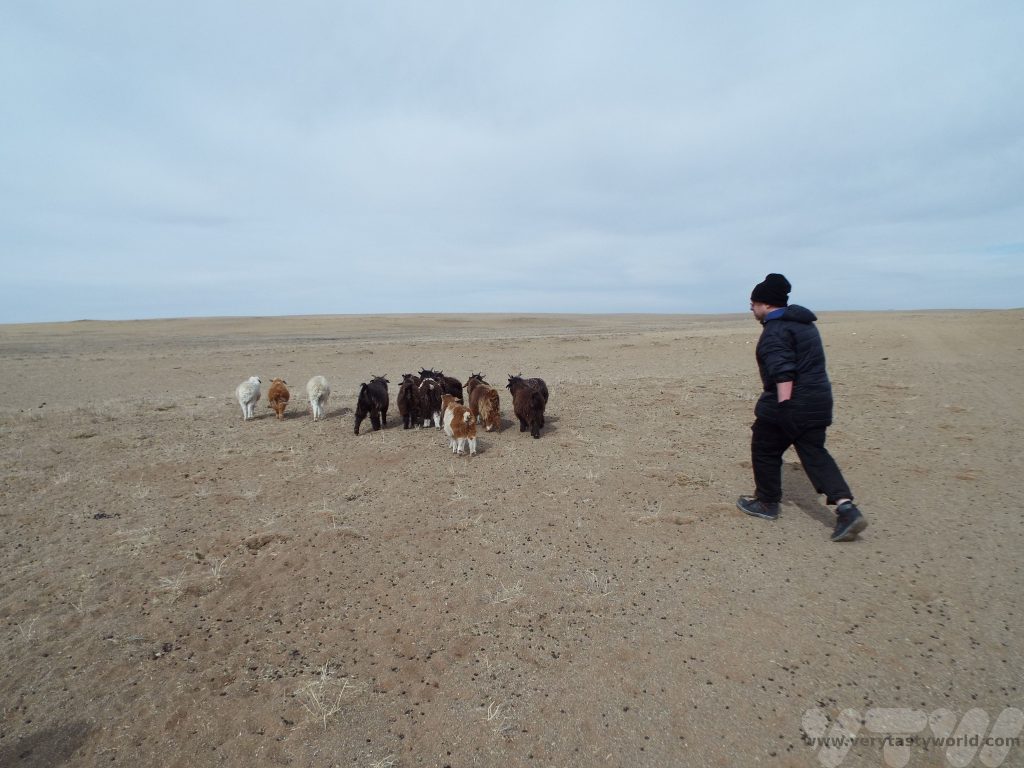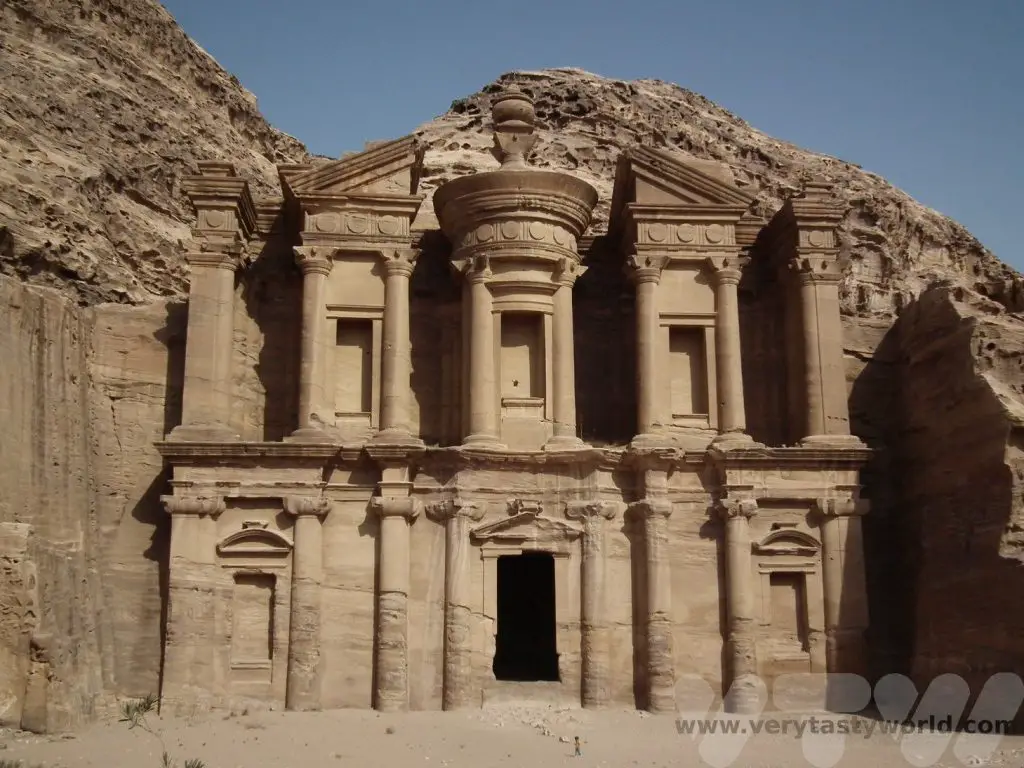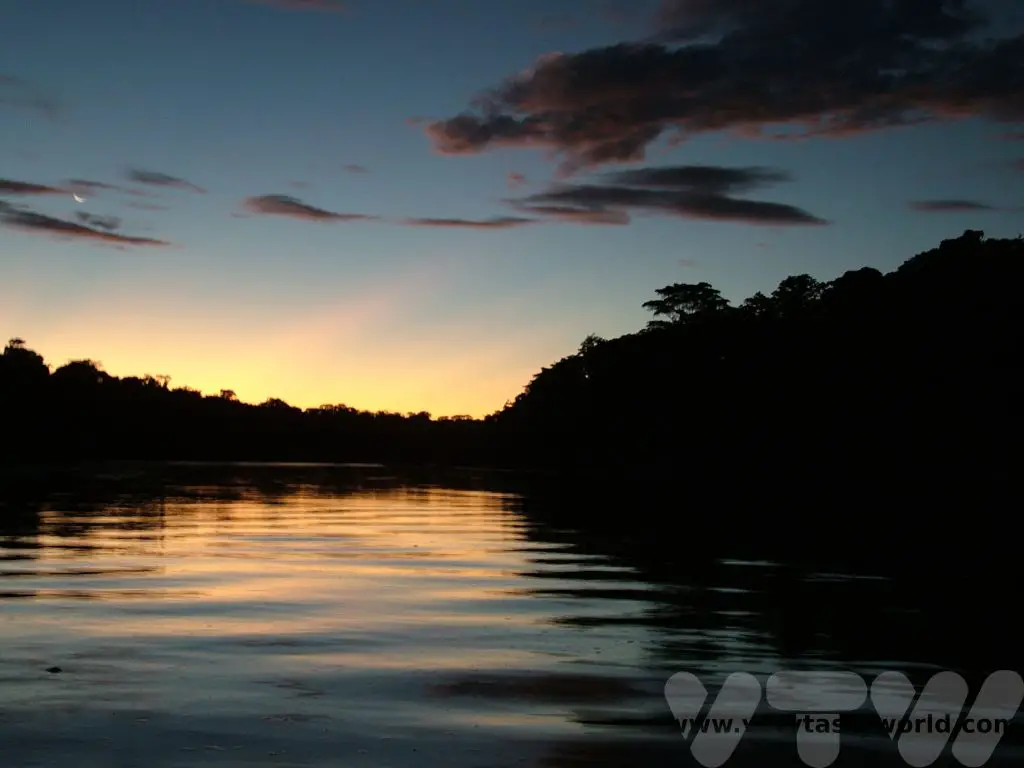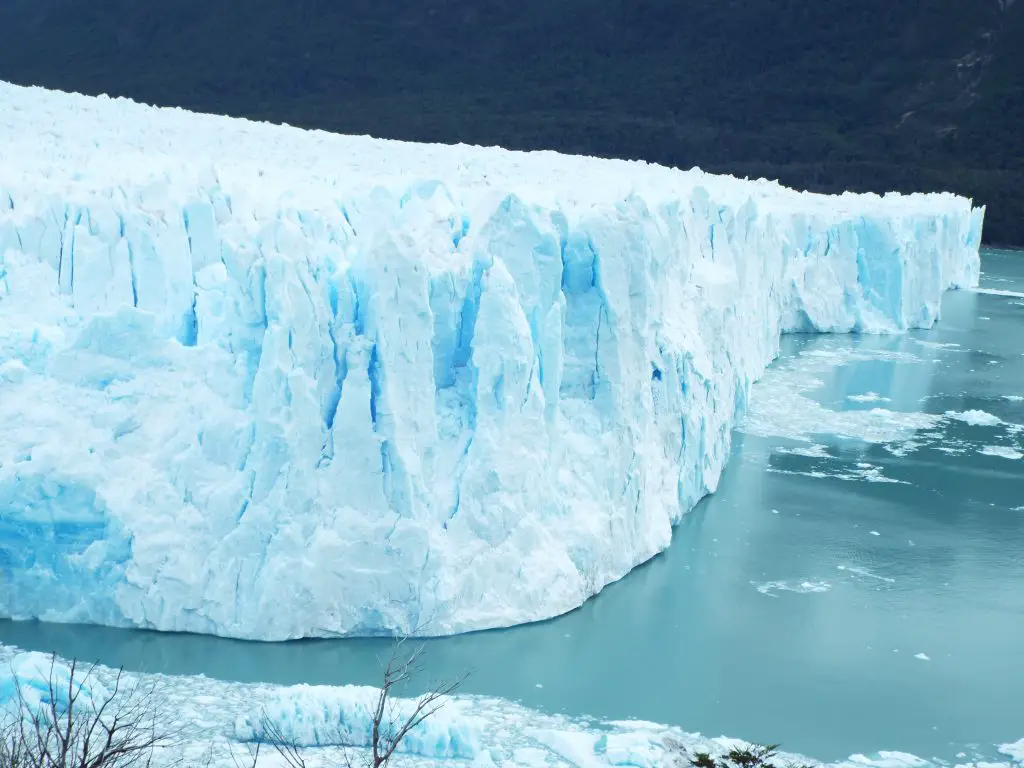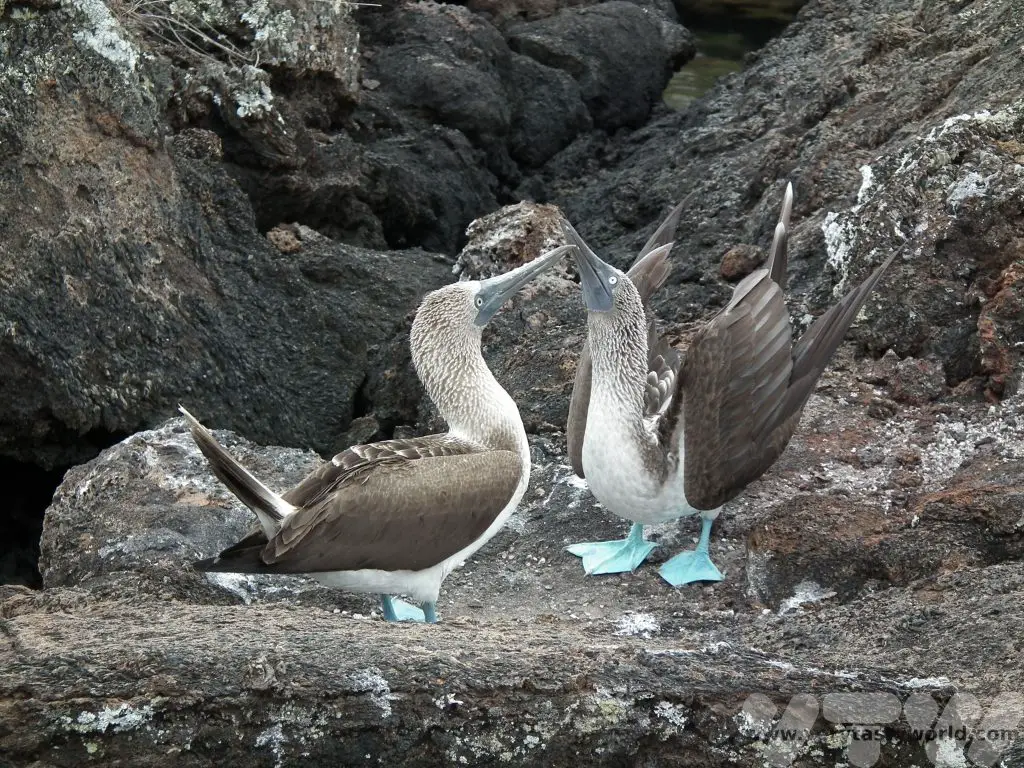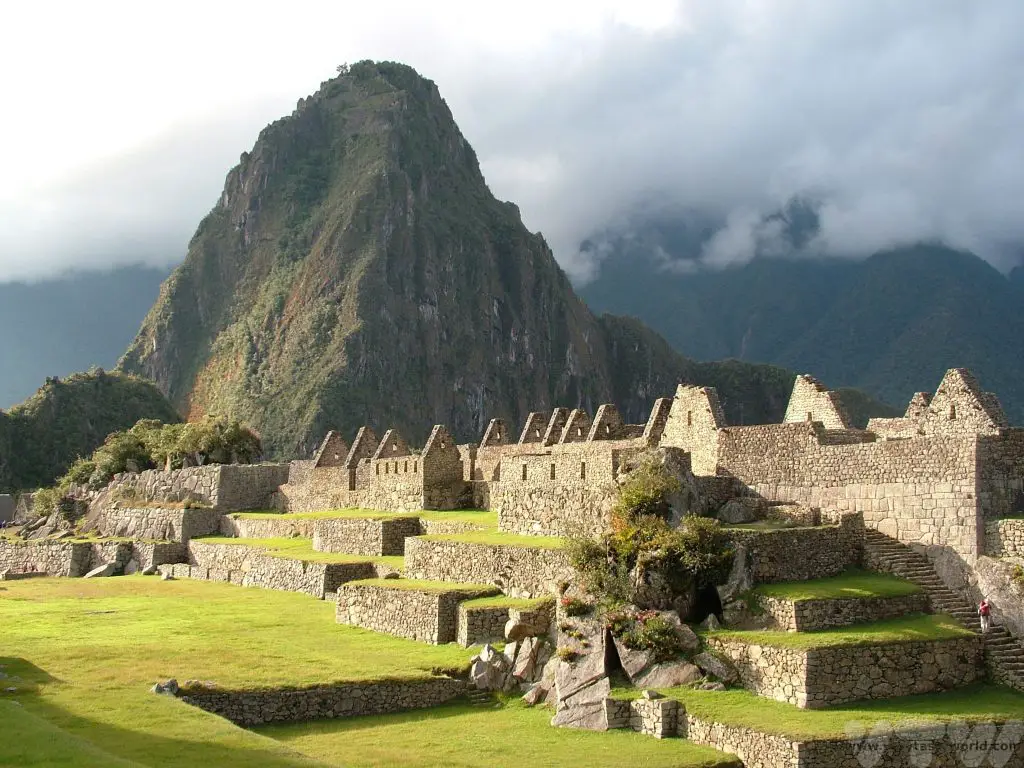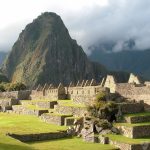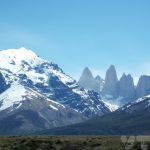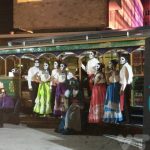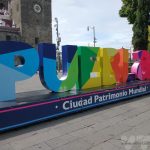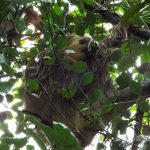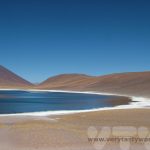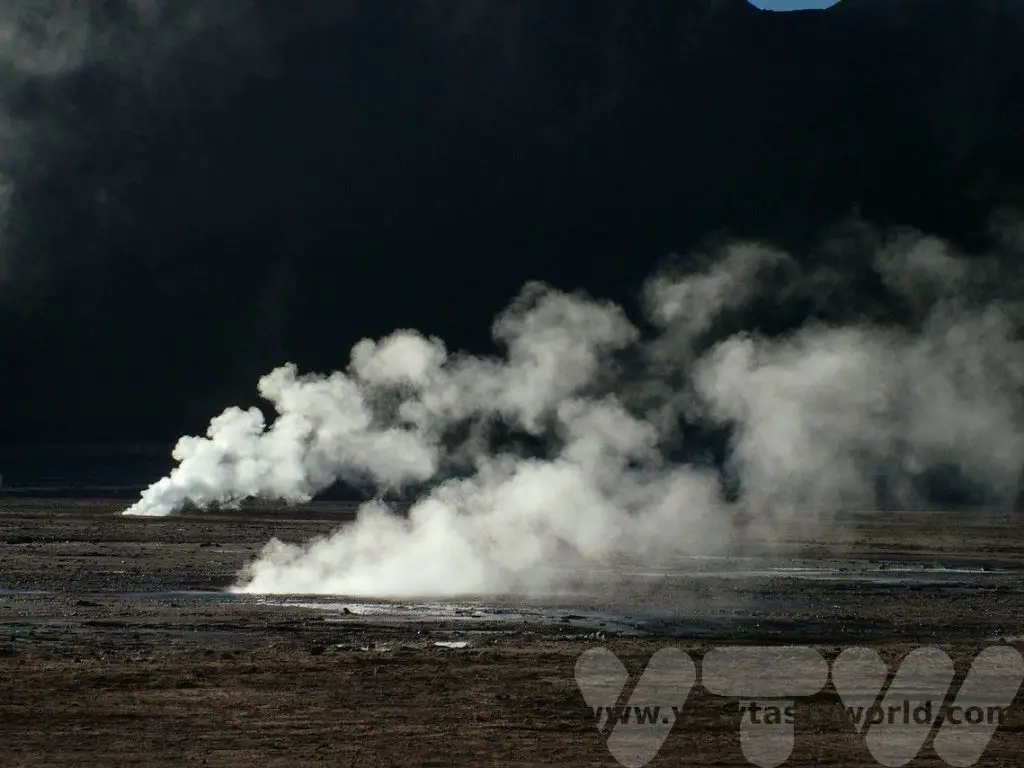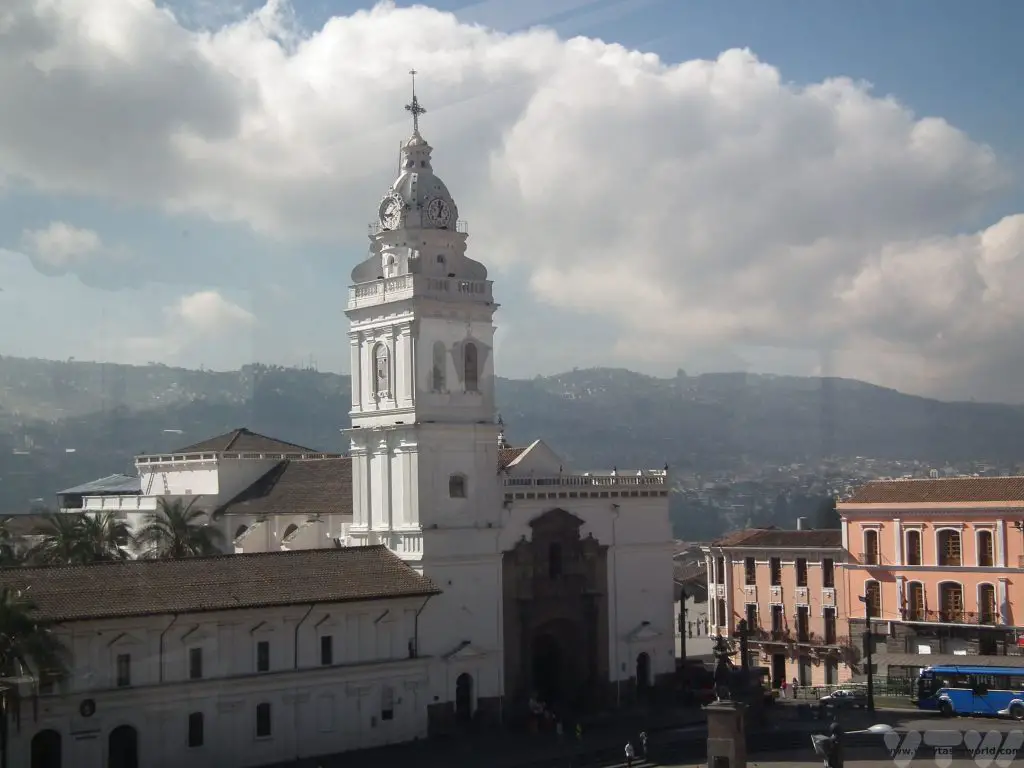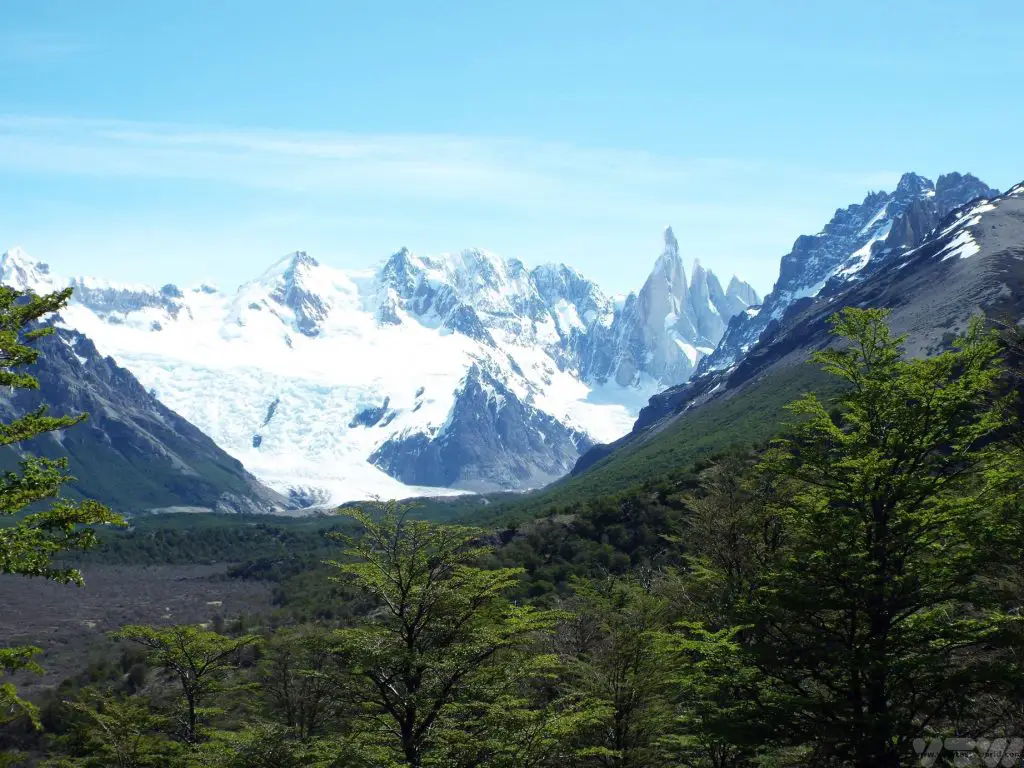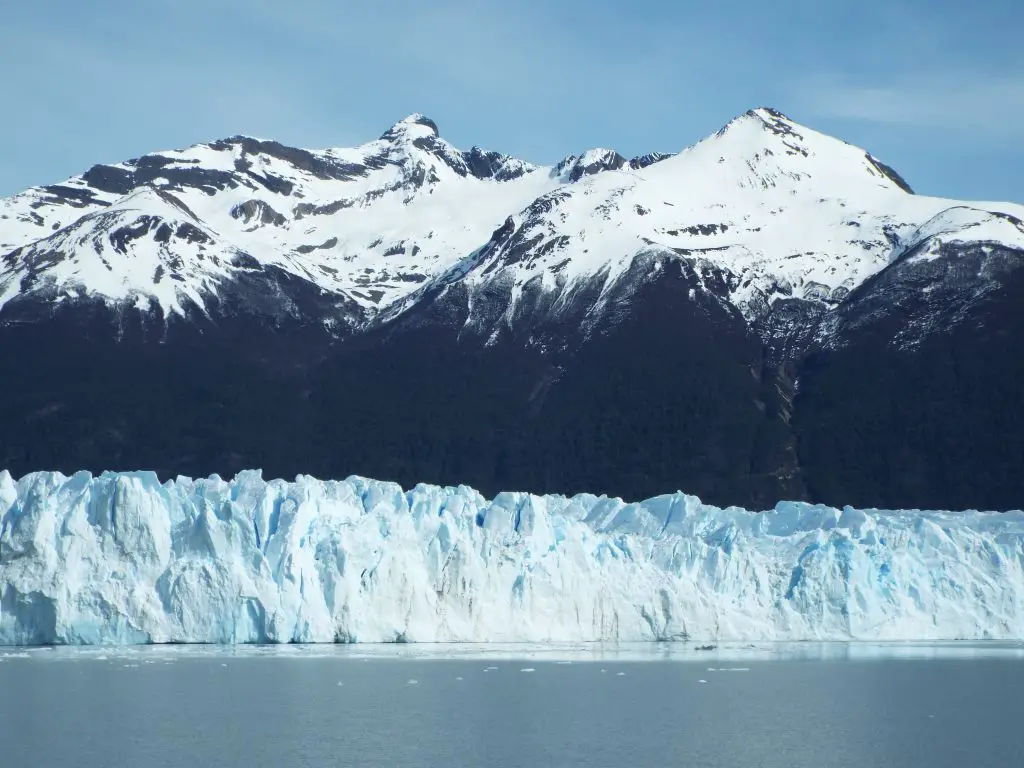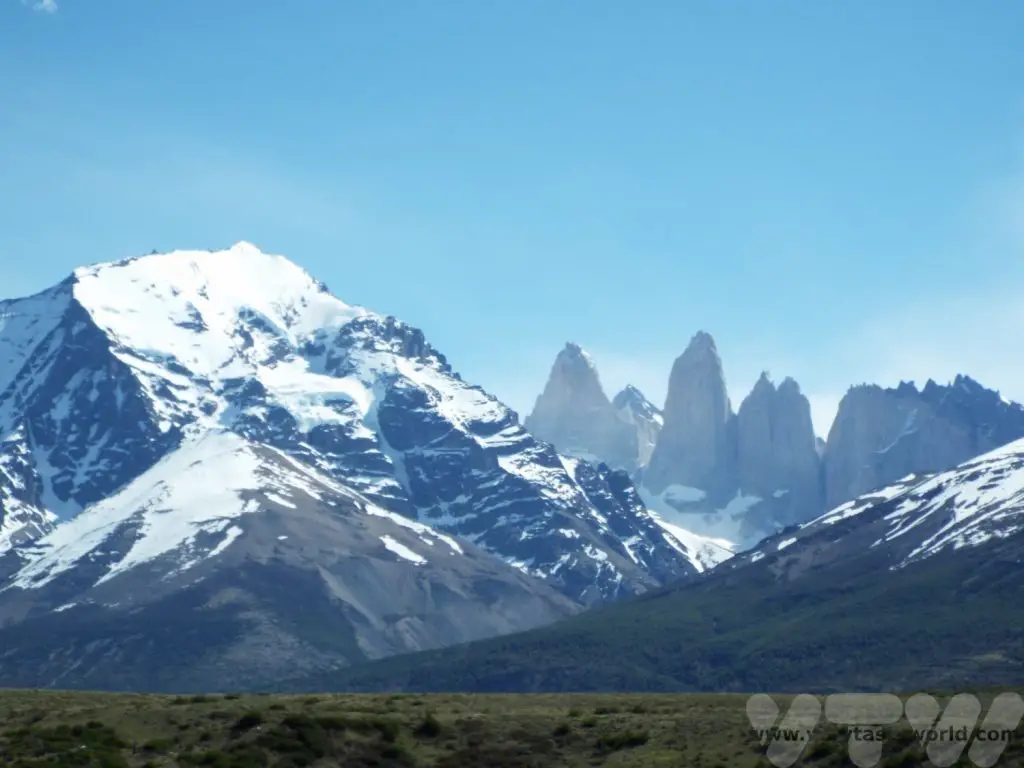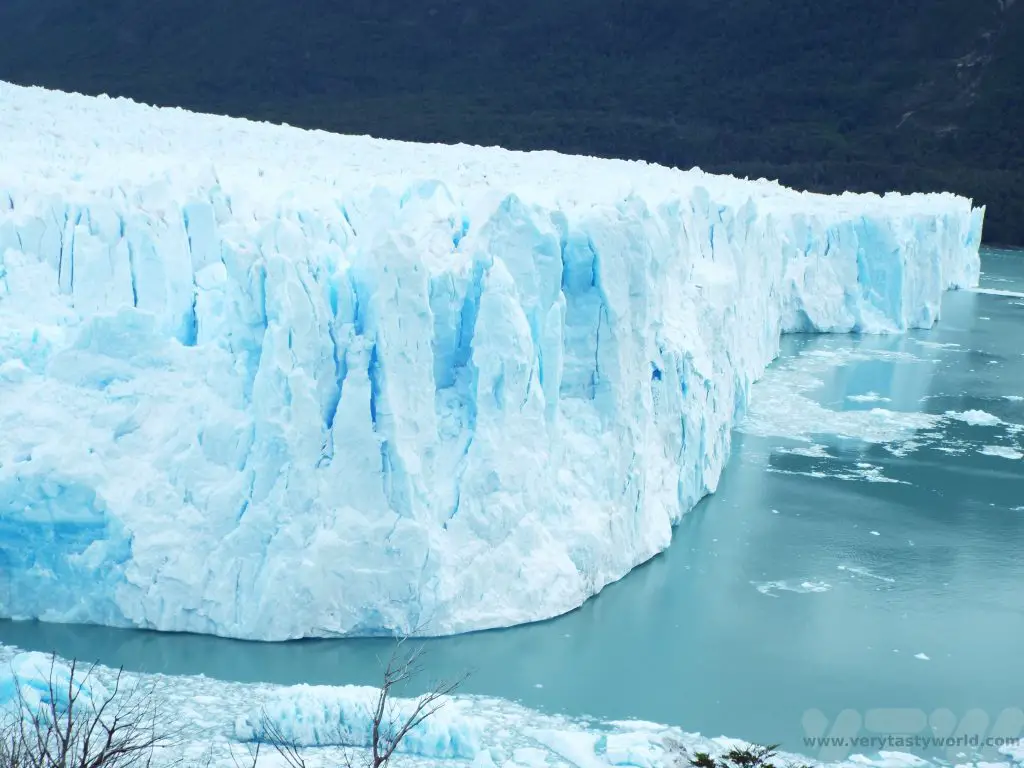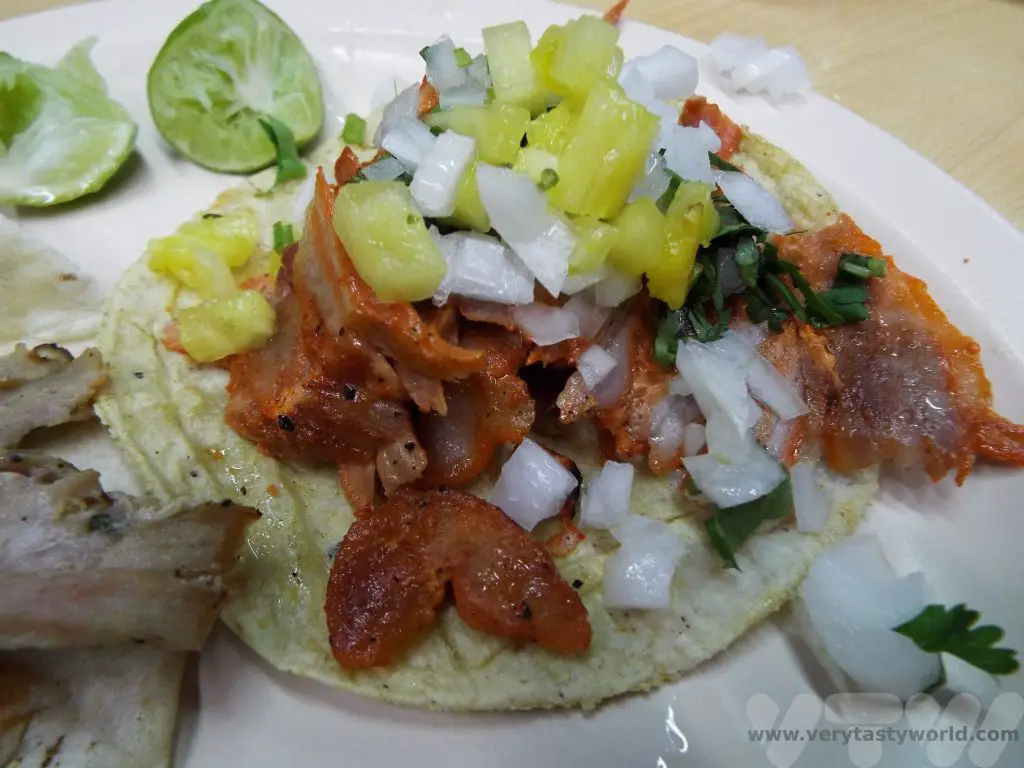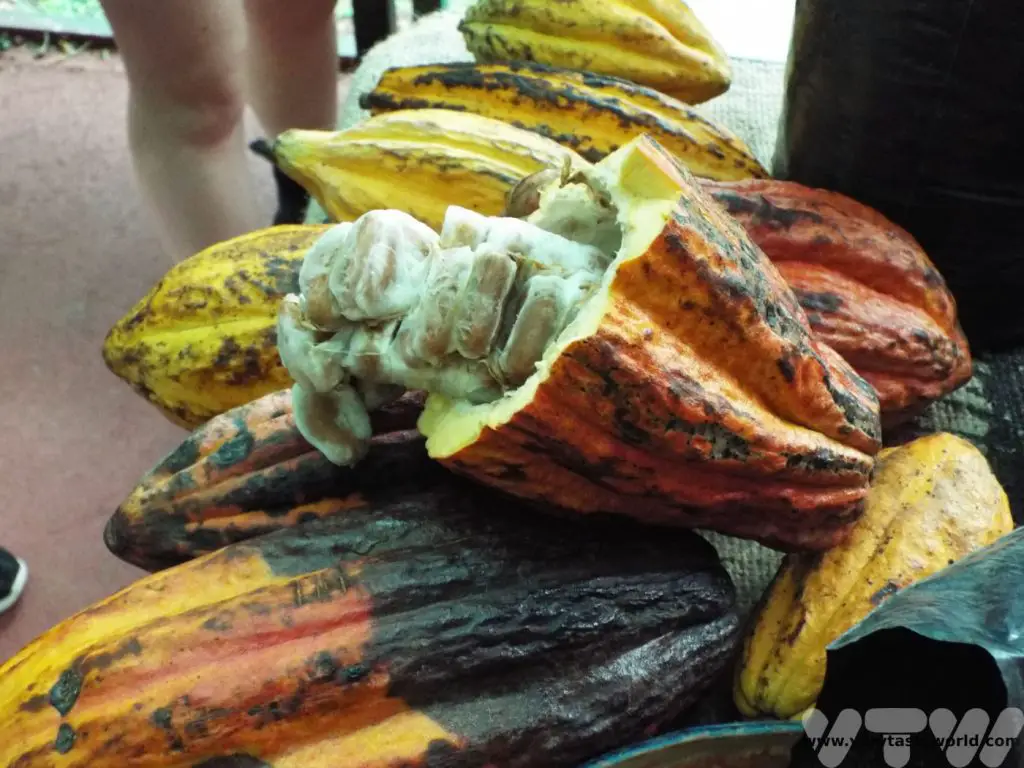Home » Posts tagged 'chile'
Tag Archives: chile
Atacama Desert Itinerary
The Atacama Desert in Chile, lying just to the west of the Andes, in the northern part of this amazingly long country, is the world’s driest desert. It has some stunningly beautiful landscapes. Here’s our guide to an Atacama Desert itinerary which took three days.
Getting To The Atacama Desert
The nearest airport to the Atacama is Calama and we flew in from Chile’s capital Santiago. You can catch a bus from there but it’s a long journey so flying may be the better option if you are short on time.
You stay in the small oasis town of San Pedro de Atacama. We chose the lovely Hotel la Casa de Don Tomas, which was a short walk from the town centre (and hence a bit quieter). They were able to arrange a transfer from the airport for an agreed fee – we made an email reservation stating our flight number and arrival time and they picked us up. They were also available to return us to the airport at the end of our visit. The journey from the airport took around 1 hour 45 minutes. Some hotels will offer pick-ups but, if not, there are a number of shuttle bus companies at the airport of varying reliability, so it’s worth checking the most recent reviews.
We spent three nights in the Atacama which, based on an early morning flight in and a late afternoon flight out, was nearly four days for us. There were plenty of things to do.
San Pedro is totally geared towards tourism. Its main high street, unpaved, is lined with adobe buildings that largely comprise bars and restaurants as well as a plethora of tour companies with whom you can book excursions. The tours are very easy to book. Some may be available on the day, others, such as a trip to the spectacular El Tatio geysers, are definitely worth booking a couple of days in advance. These are usually group tours, a minibus-sized bunch of tourists accompanied by a local guide who will speak both Spanish and English. Many tour companies are able to arrange a hotel pick-up, which can be especially useful if you have an early start, otherwise they will let you know the pick-up point, which won’t be far away as it’s a small town.
San Pedro is located at 2500m above sea level. We didn’t feel as though we needed to acclimatise to the altitude (although some of the excursions go much higher) but you may find that you need to take things easy for a day or so if you are not accustomed to the elevation. It is also very sunny, so sun protection is essential.
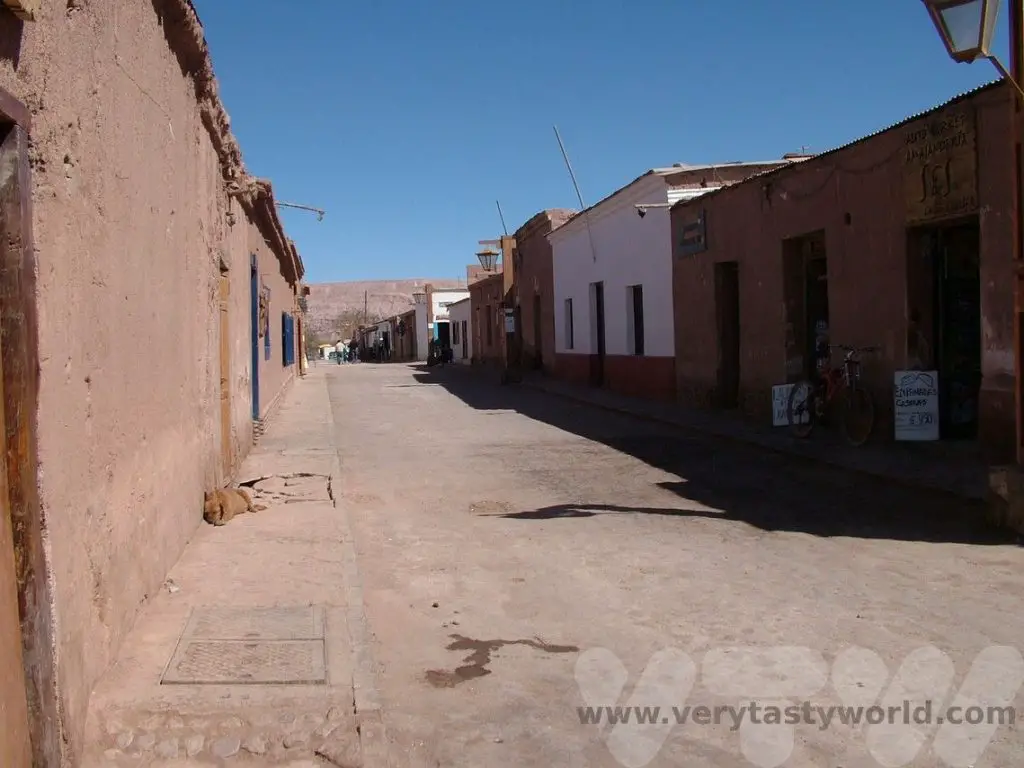
Atacama Desert Itinerary – Walking Through Dramatic Landscapes
We completed a number of walks in the Atacama. Death Valley (Valle de la Muerte) was stark and dramatic. Its location lies inside a salt mountain range and was originally the bottom of a lake, the sediment of which was forced from a horizontal to a vertical position through the movement of the earth’s crust over the years. This has resulted in huge dunes surrounded by sand and salt structures.
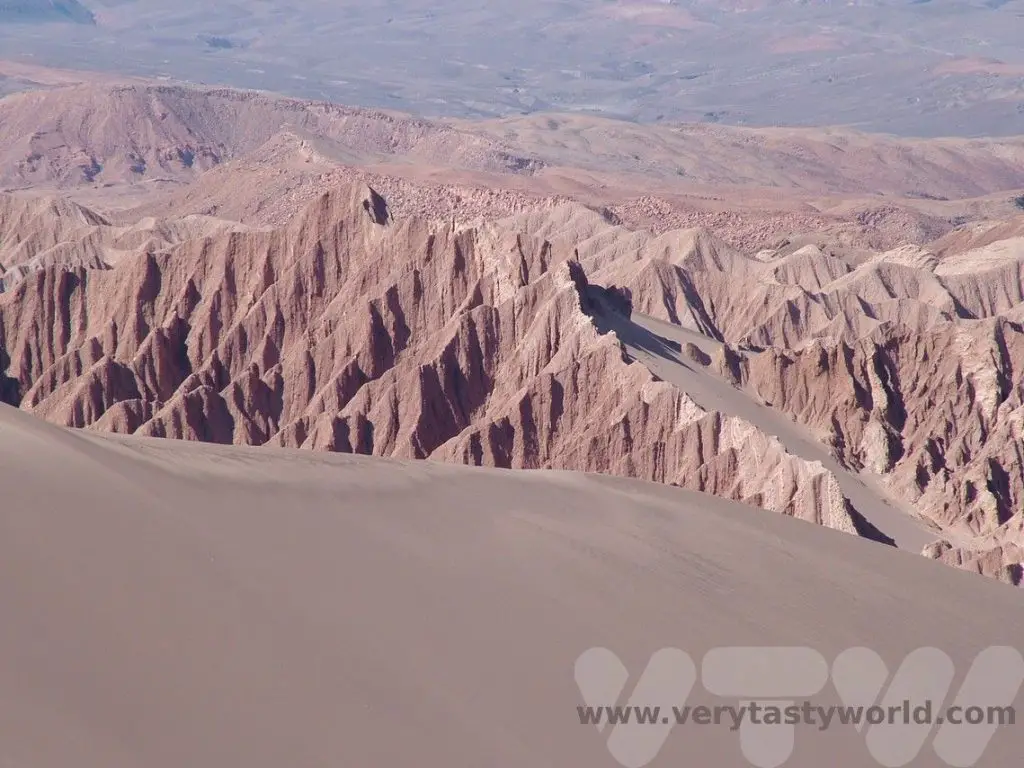
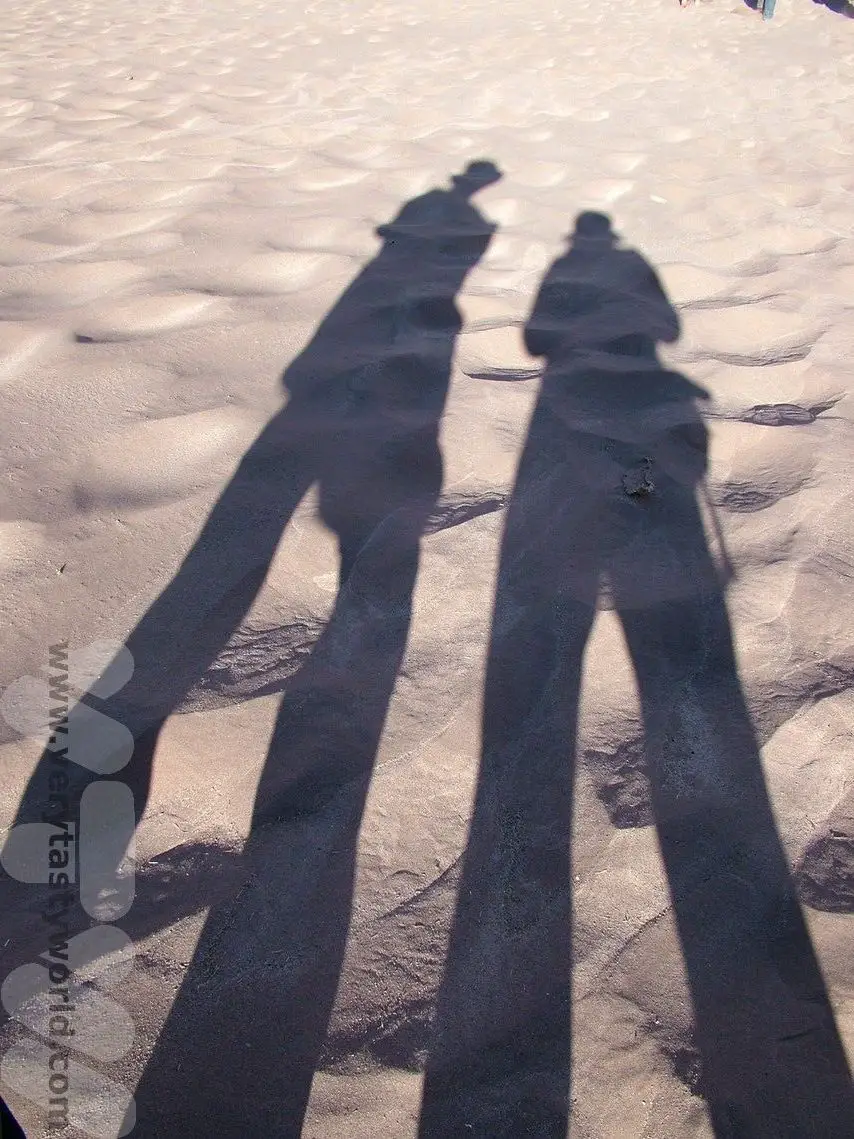
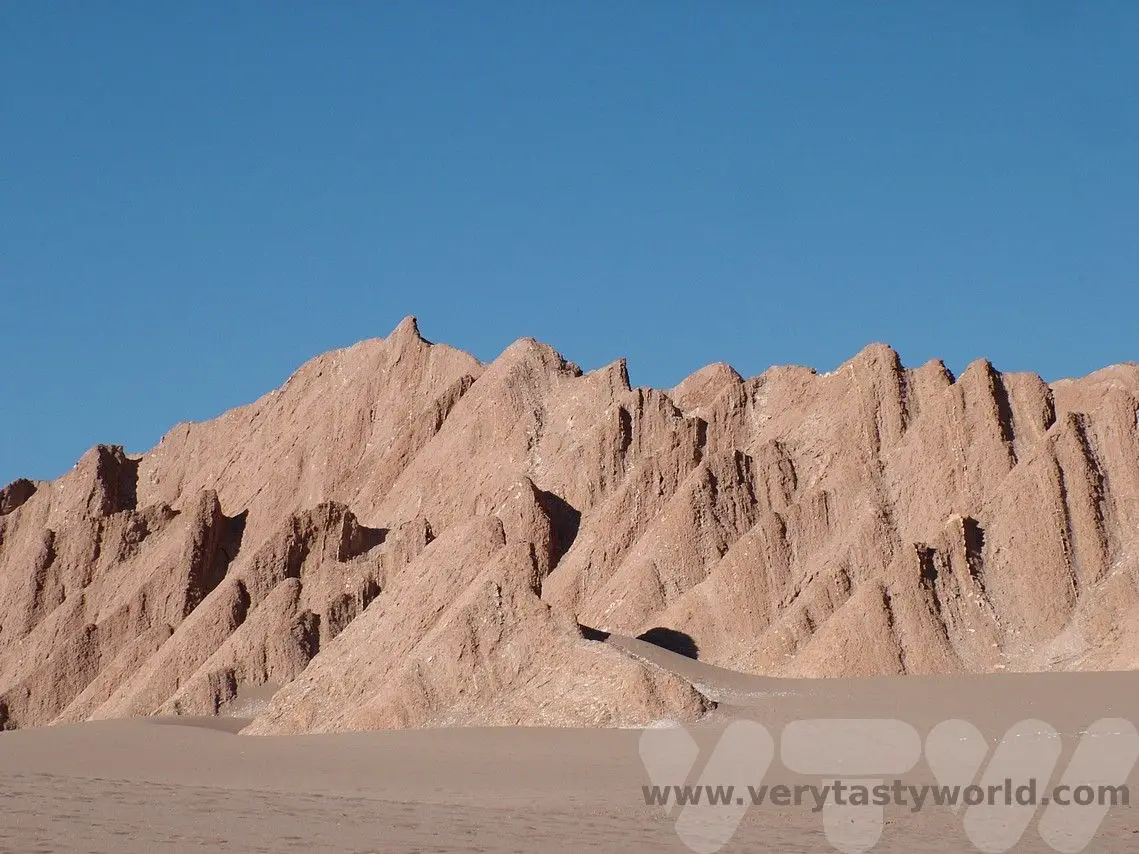
Walking down a sand dune in bare feet was wonderful – the sun was hot but the sand was cool.
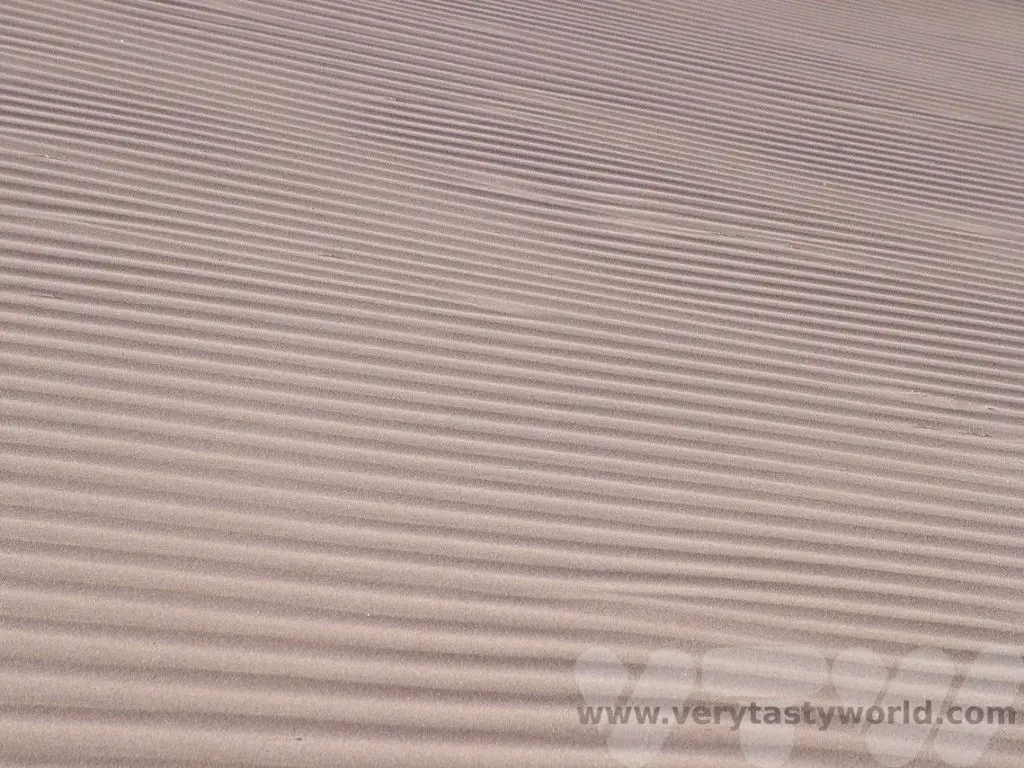
It is possible to do activities such as sandboarding there. There will be plenty of tour operators who will have the necessary equipment.
Moon Valley’s (Valle de la Luna) name is entirely appropriate. It is stark and strange and highly reminiscent of a lunar landscape.
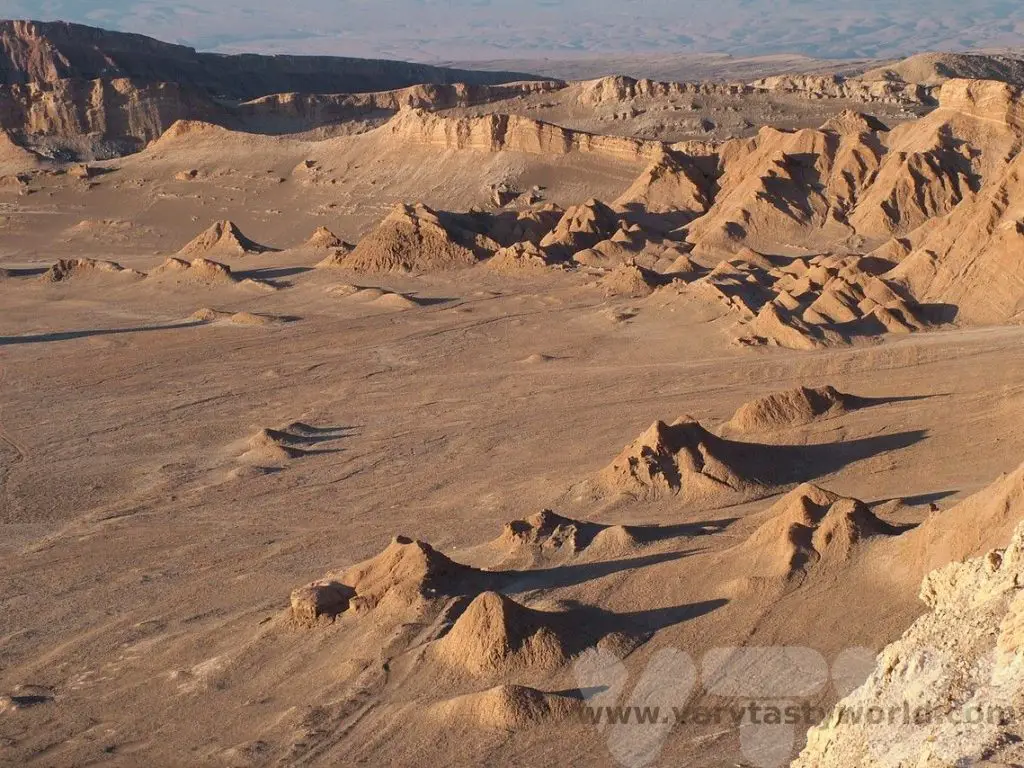
It is covered with structures composed of salt, gypsum and clay, eroded and shaped by the wind over several thousands of years.
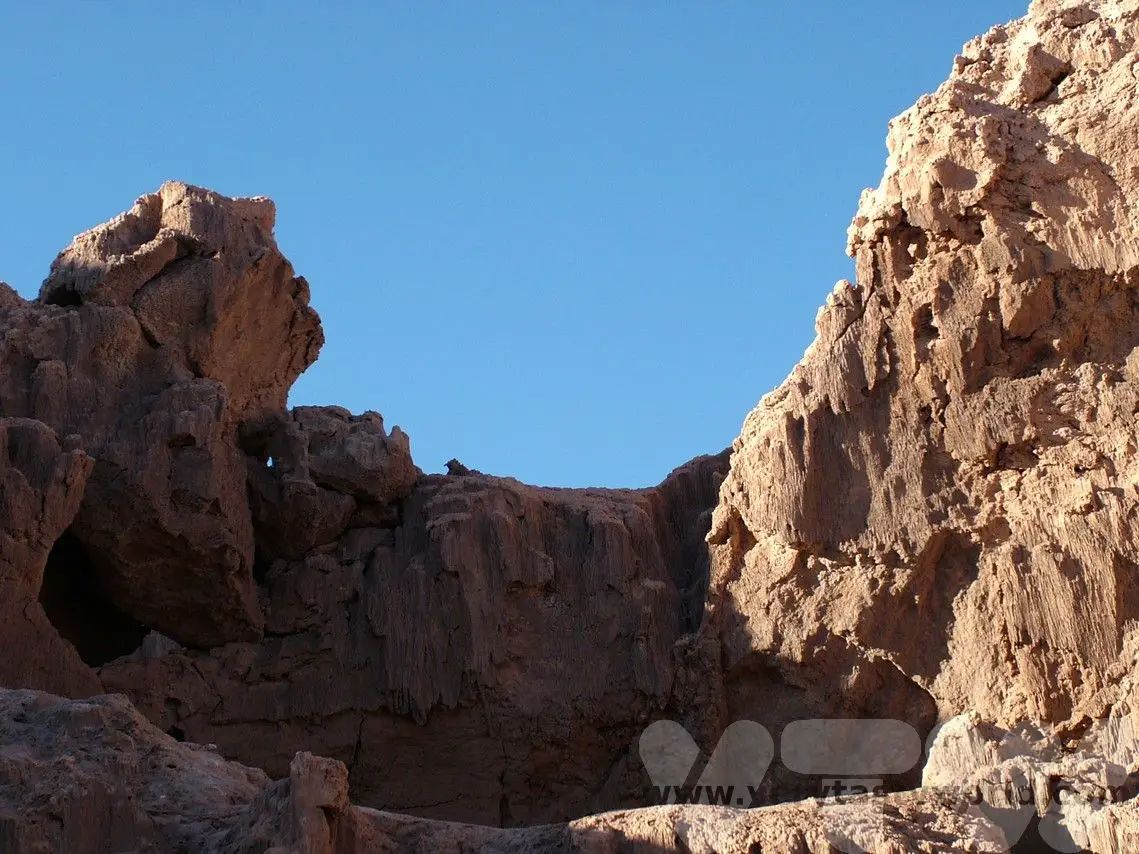
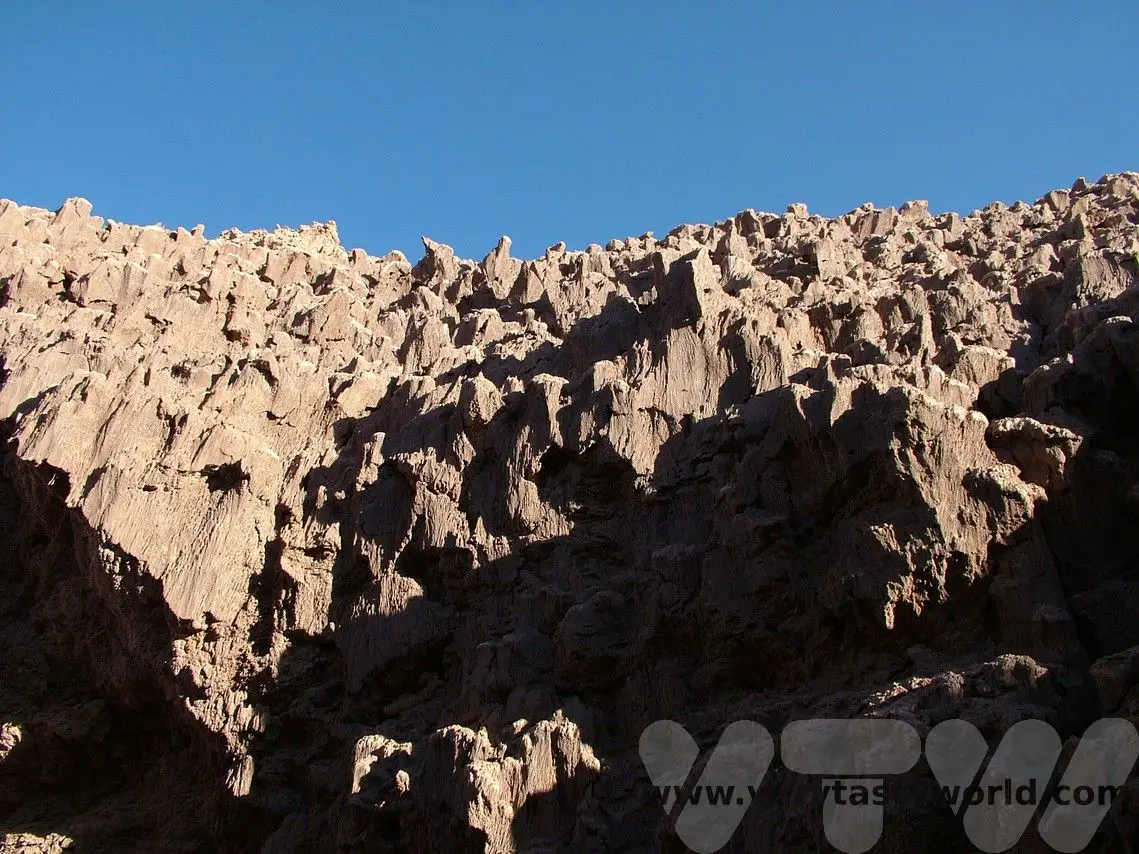
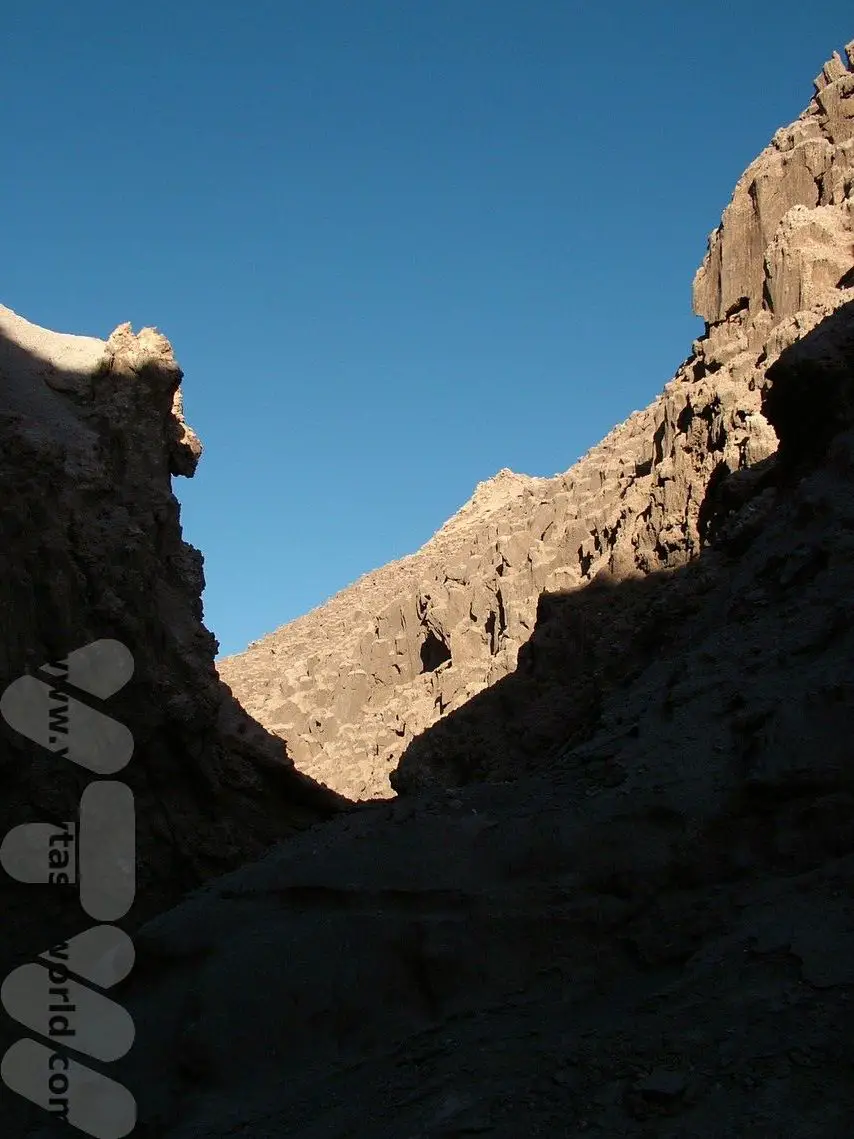
After exploring these dramatic landscapes we also took the chance to watch the sun set and the moon rise behind the Licancabur volcano. It’s worth arriving early in order to find the best viewing spot, as the area will slowly and surely fill with tourists as the sun goes down. It’s a beautiful sight, with the colours changing every minute.
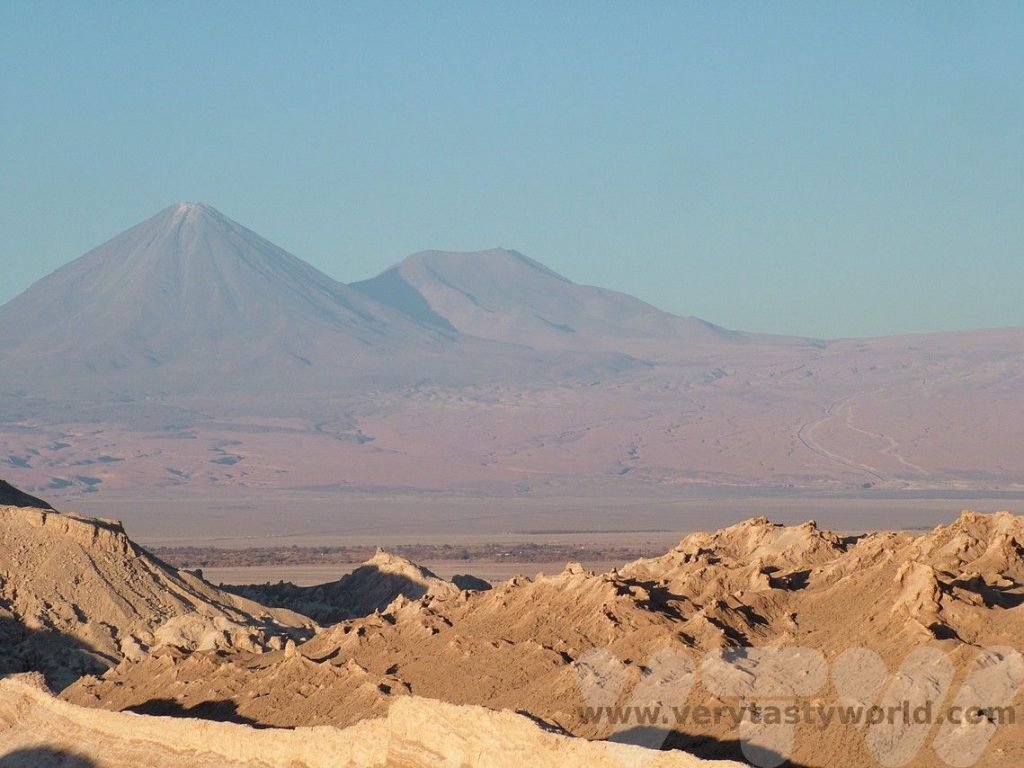
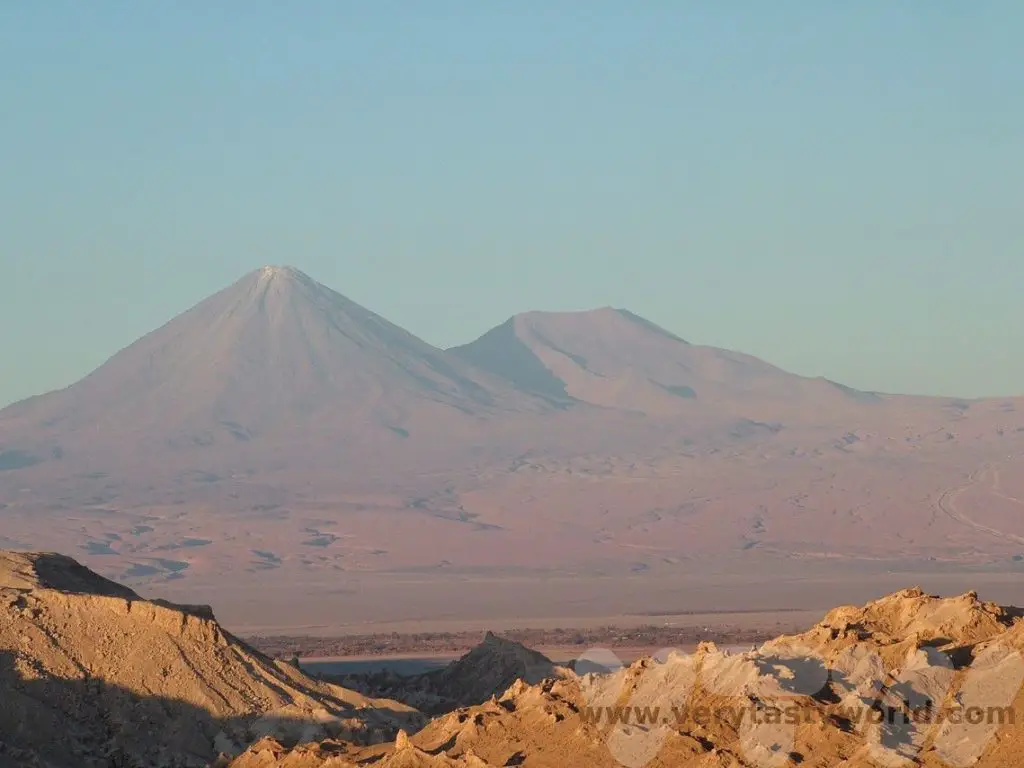
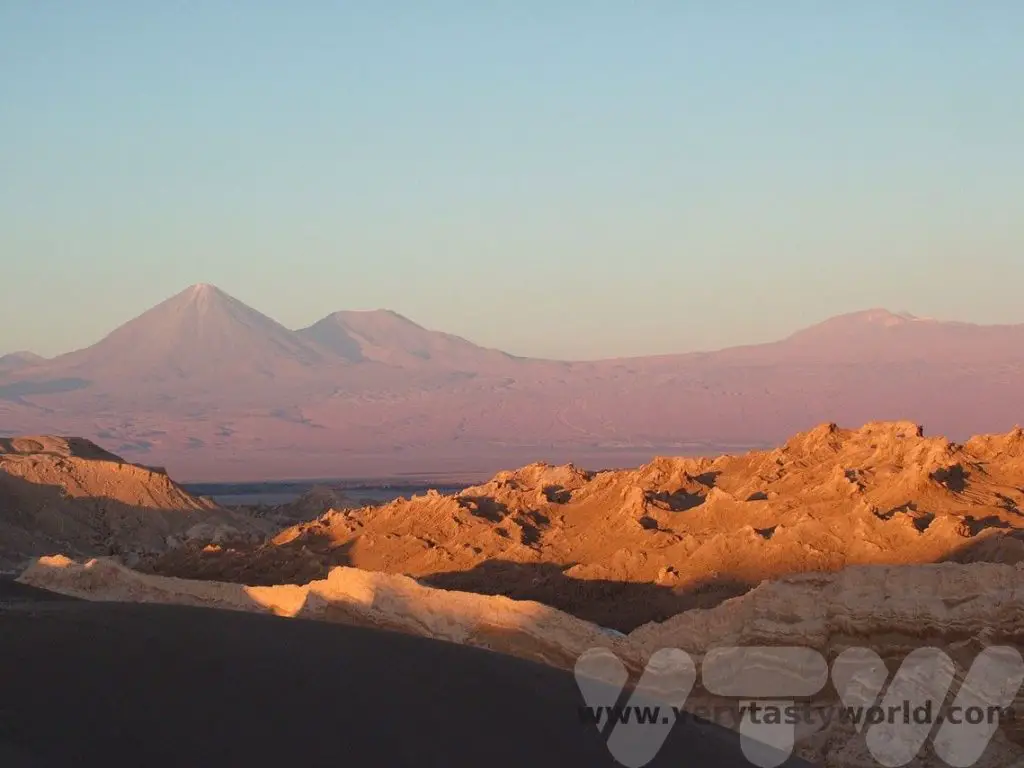
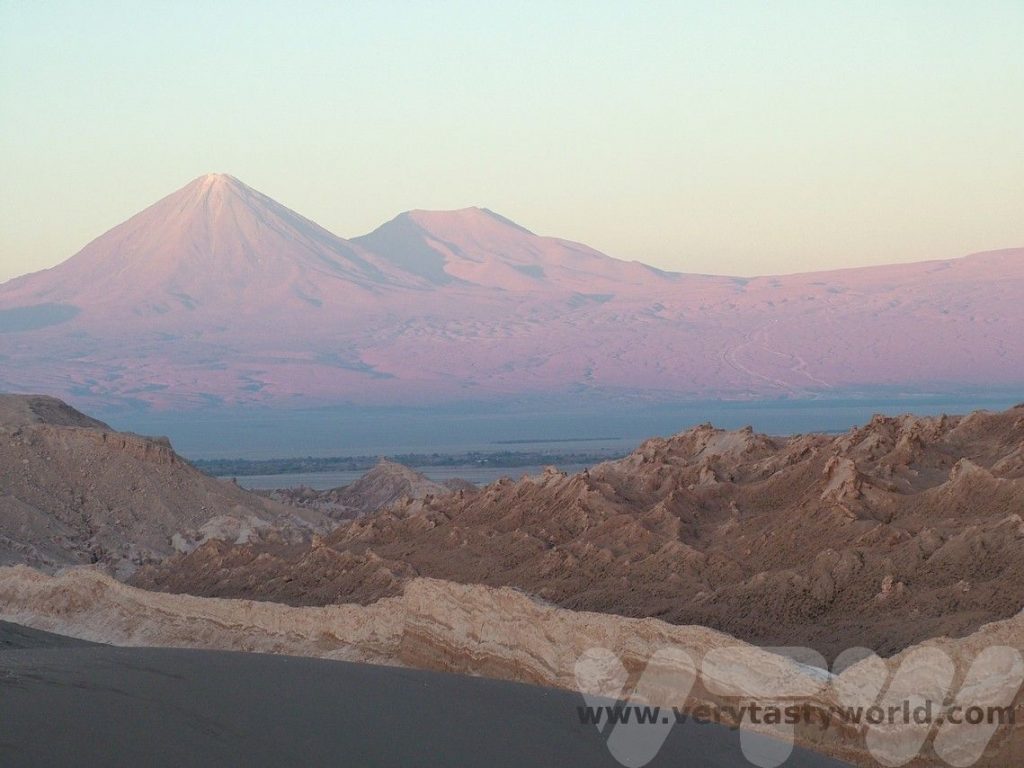
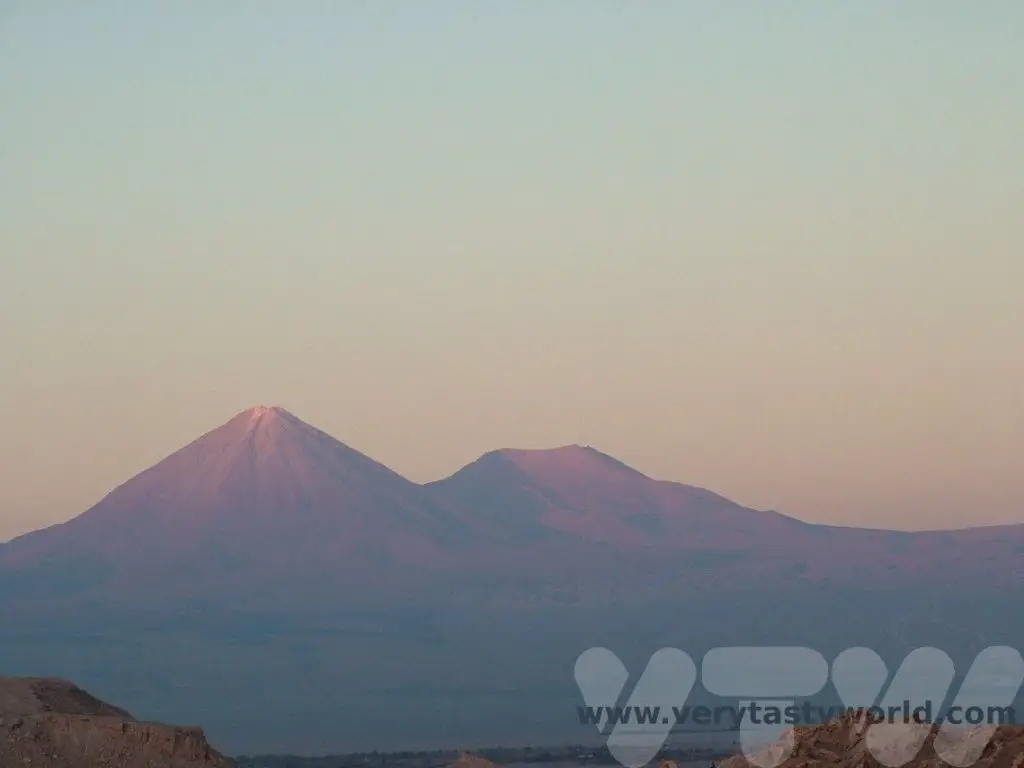
Full Day Trip To Salt Flats And Altiplanic Lakes
The Atacama also has salt flats located around 55km from San Pedro. At around 3000 square km they are the third largest salt flats in the world, after Uyuni in Bolivia and Salinas Grandes in Argentina. Because it virtually never rains in the Atacama, the salt is crusty – unlike Uyuni which has a totally smooth surface.
If you get up early you can go on a tour which takes you to the salt flats in the morning. It was good to see the volcano at sunrise.
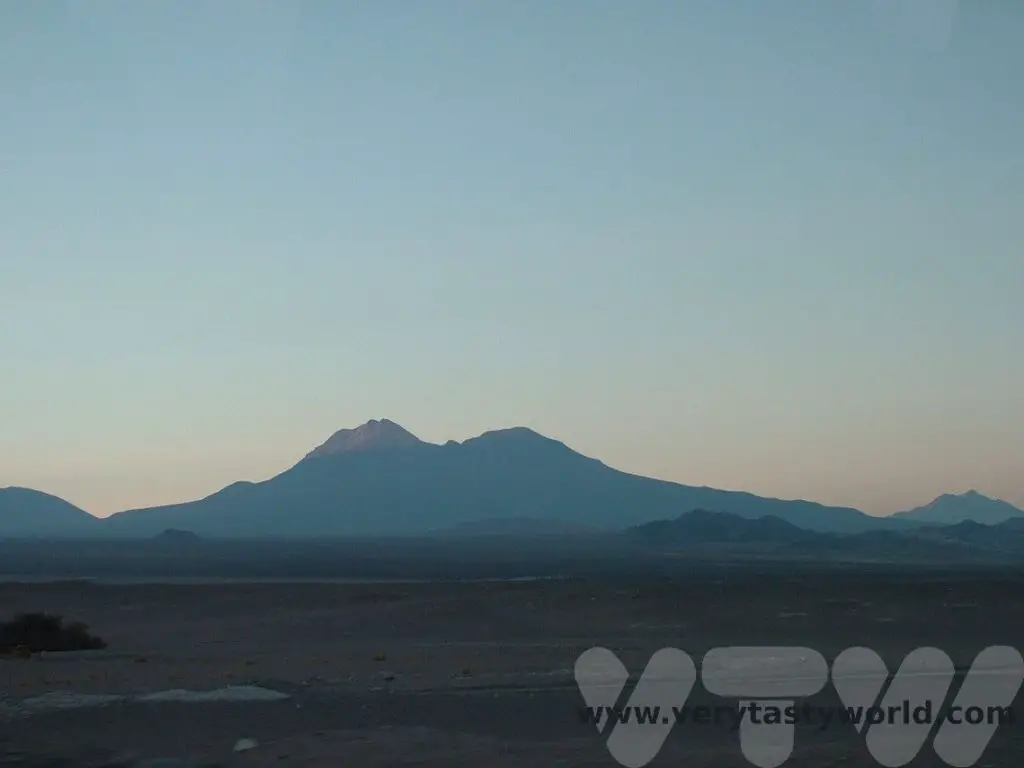
It’s possible to go walking on the salt flats and view the flamingos on the laguna before the other tourists arrive and scare them off. (It is definitely worth taking the early morning option for a visit.) The desert is really cold in the morning, about 0ºC, but warms up to over 30ºC by noon.
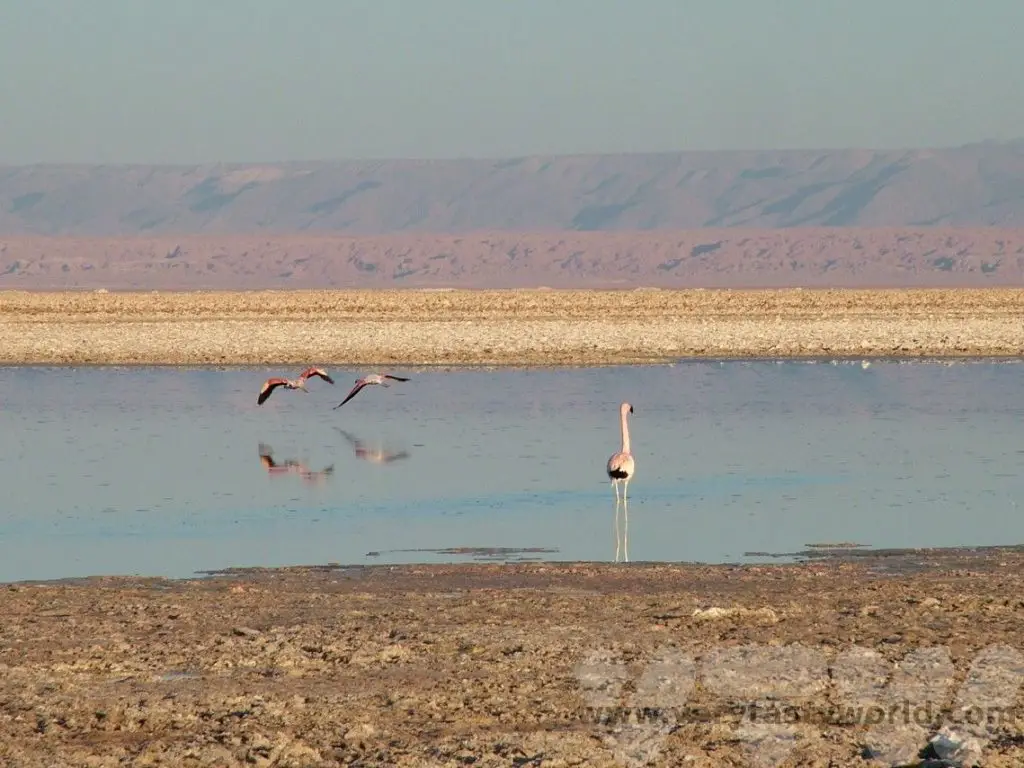
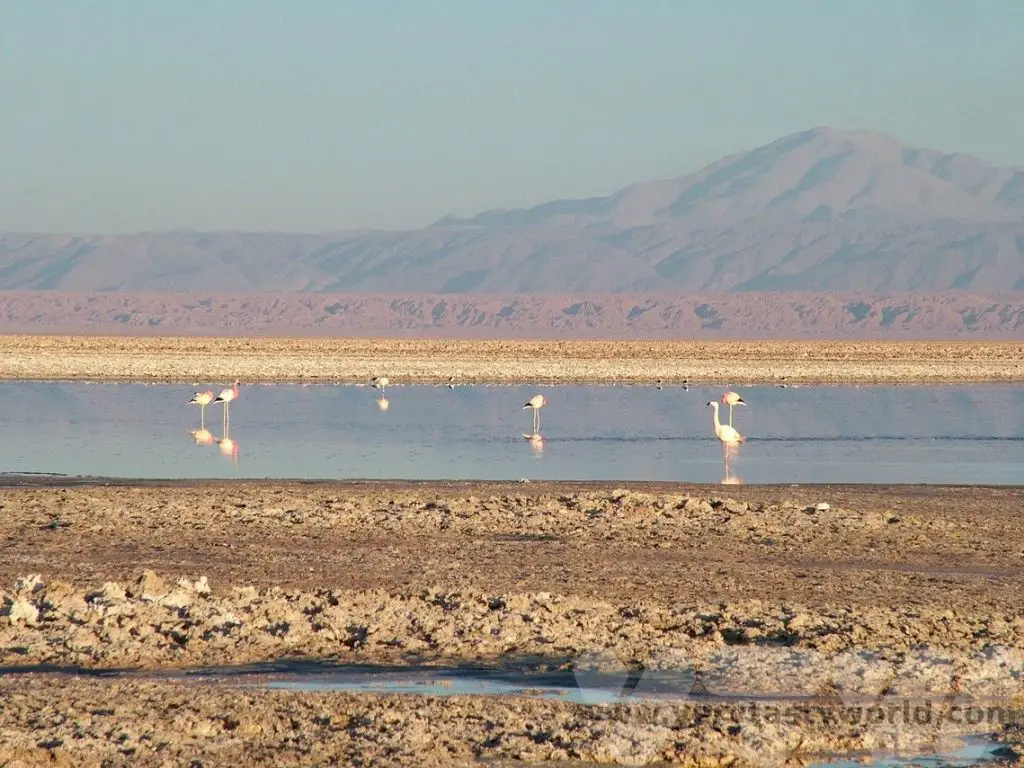
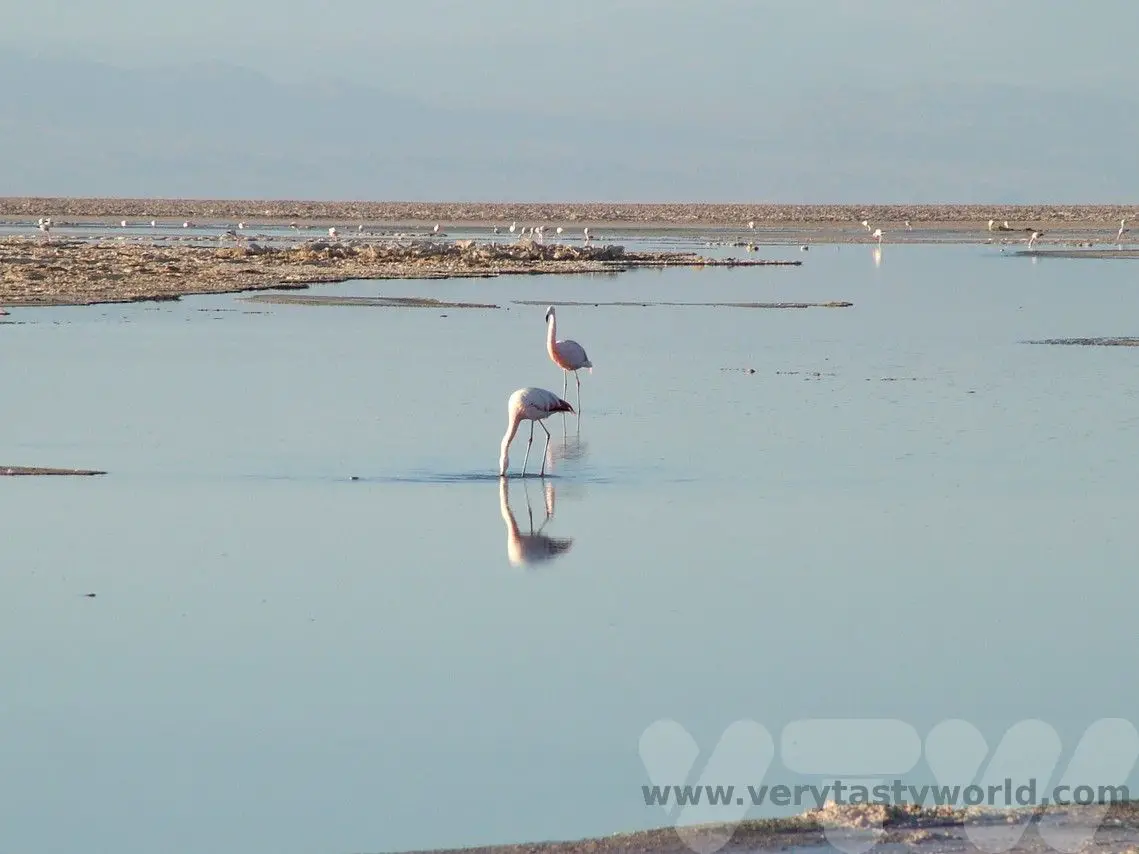
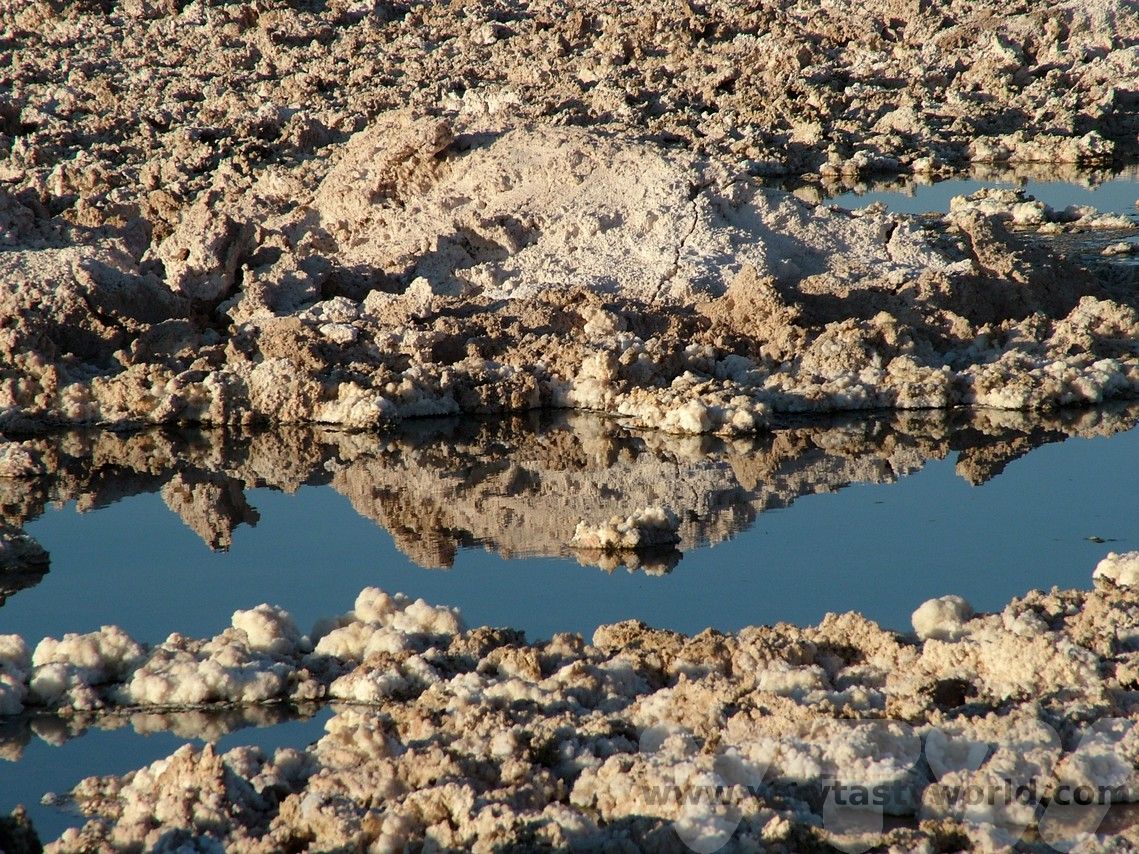
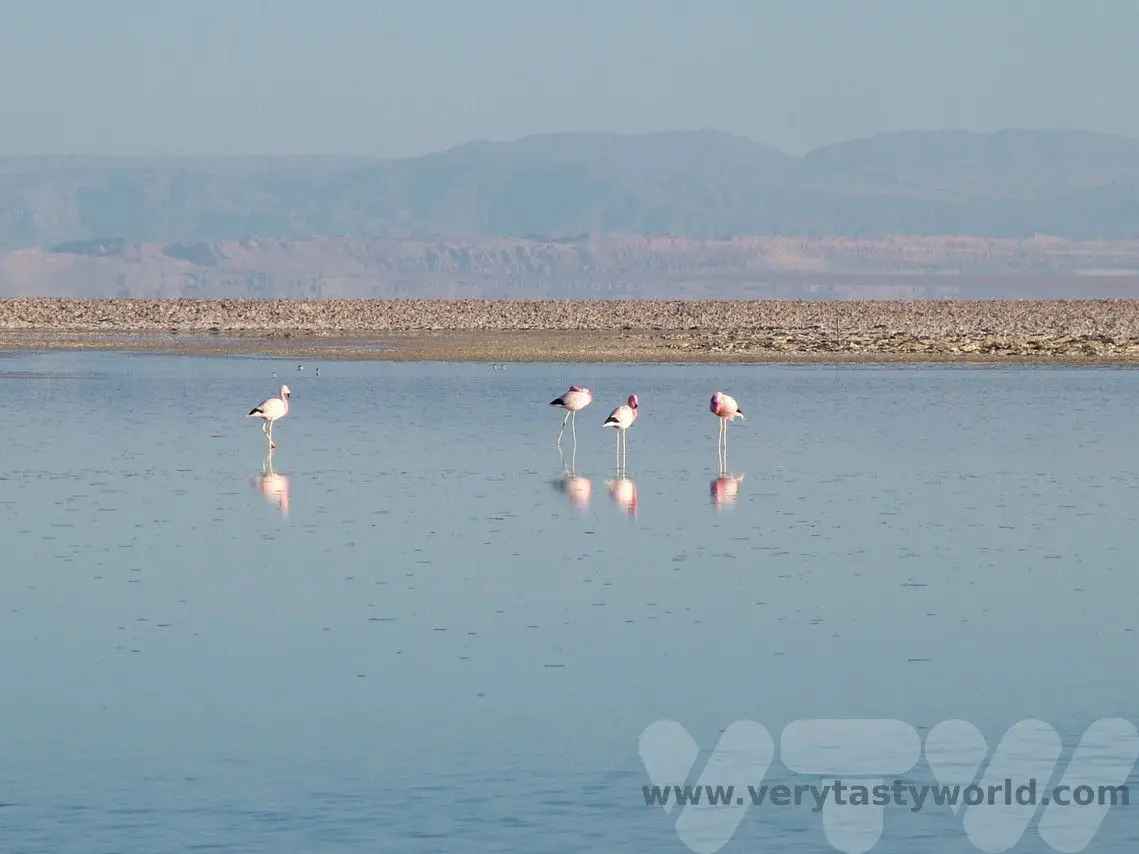
After a walk across the the salt flat we travelled across the altiplano.
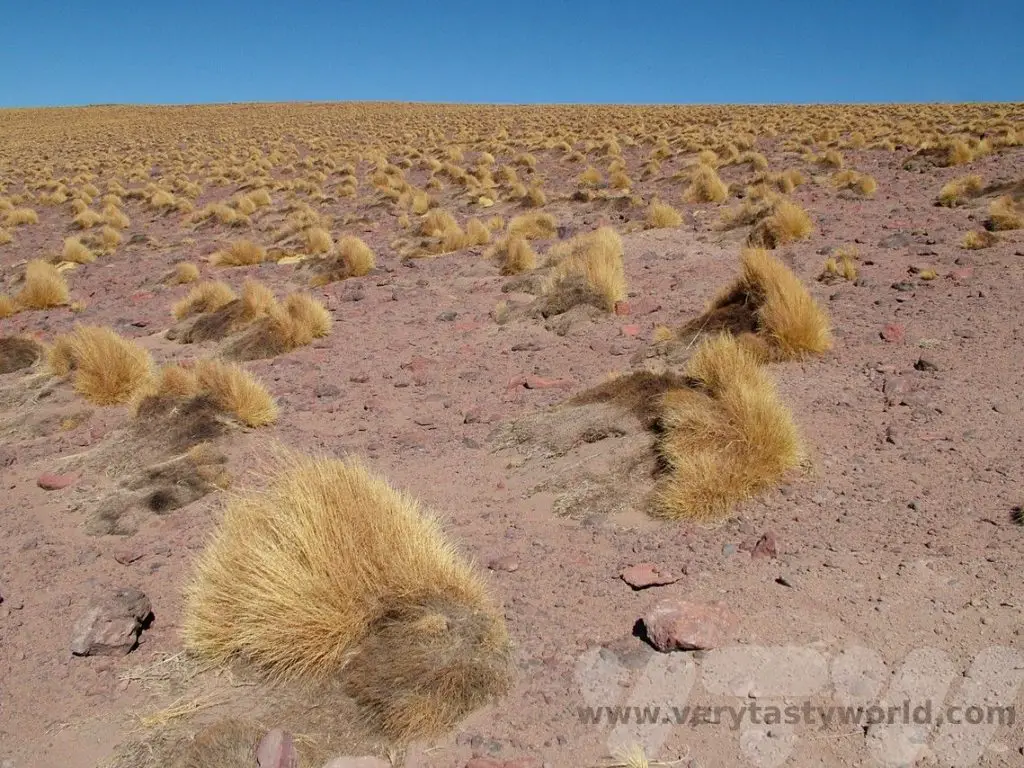
There are also altiplanic lagoons to visit – these lakes were completely beautiful and utterly serene. They are, respectively, Laguna Miscanti and Laguna Miñiques.
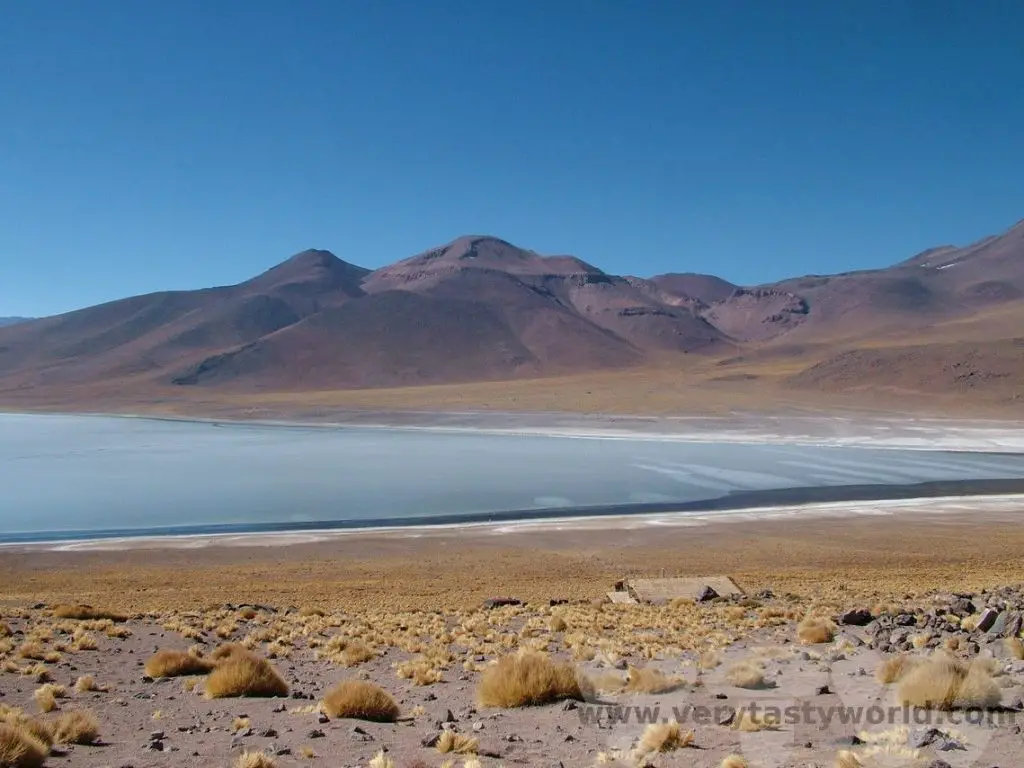
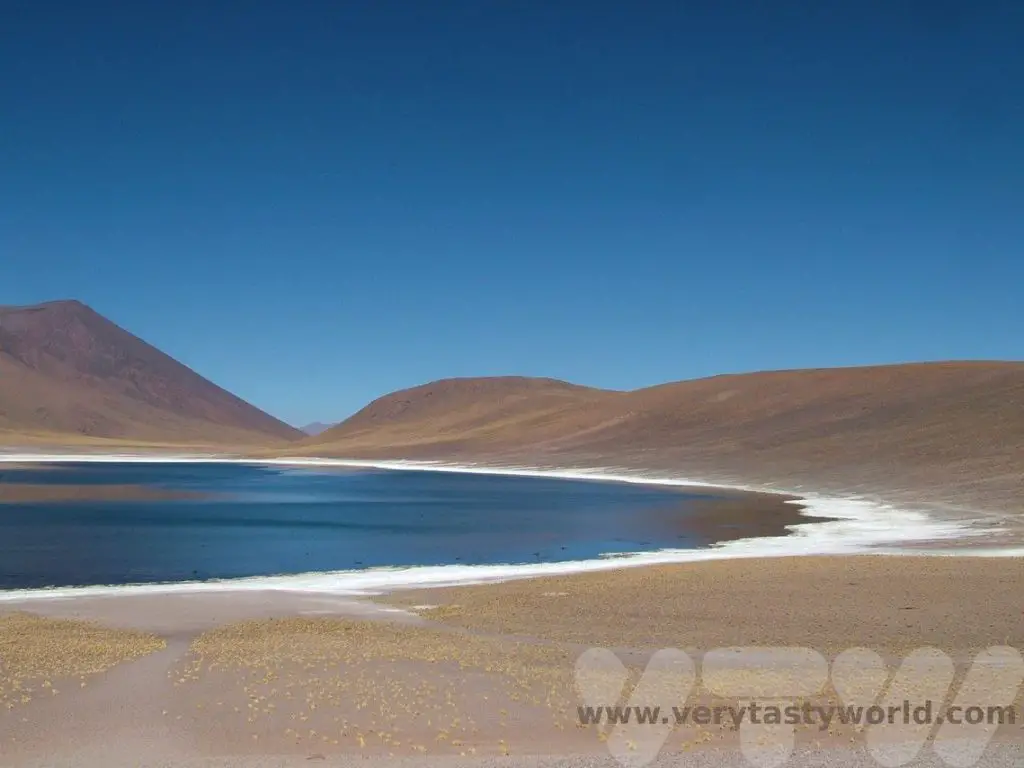
Day Trip To The El Tatio Geysers
We could class these as an essential excursion when on a visit to the Atacama Desert. This tour was the one that we booked a few days in advance, on arrival at San Pedro. We were picked up from our hotel at 4am to embark on a dark, bumpy 95km minibus ride for three hours. This was another trip where appropriate clothing was important: it was –9ºC on arrival but the temperature had reached above 30ºC by mid-morning. Wearing lots of layers and discarding them as necessary is the best approach.
The El Tatio geysers in the Atacama Desert are the world’s highest altitude geysers. It was absolutely worth getting up so early. We arrived at sunrise to see the geysers at golden hour. They were spectacular.
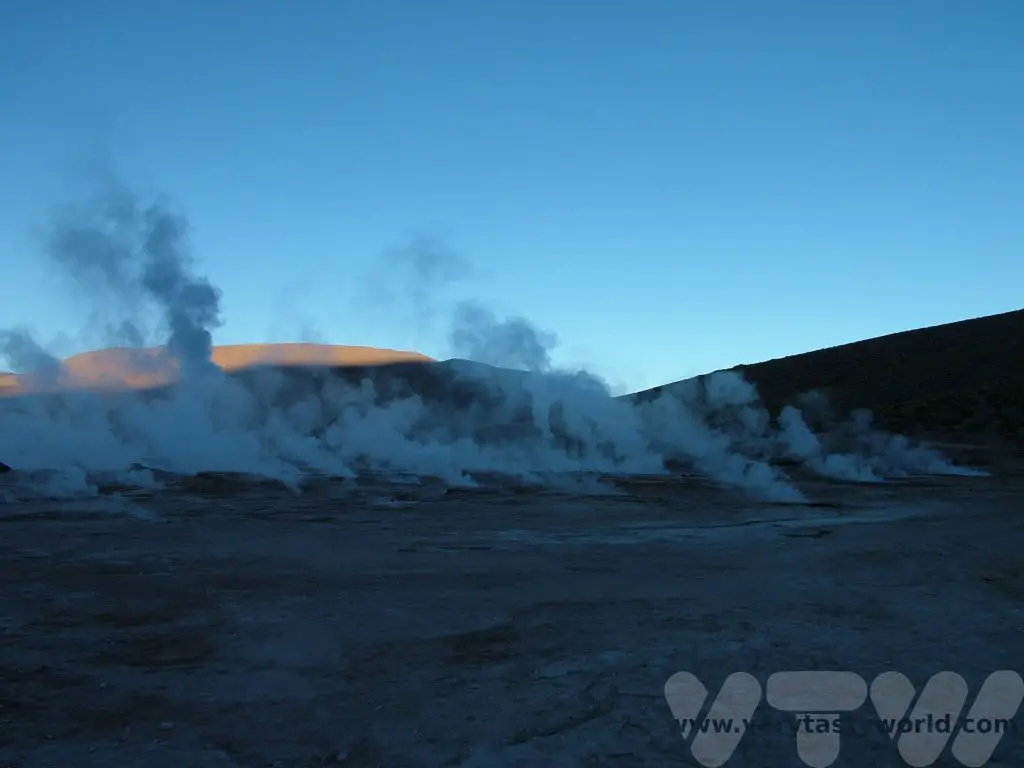
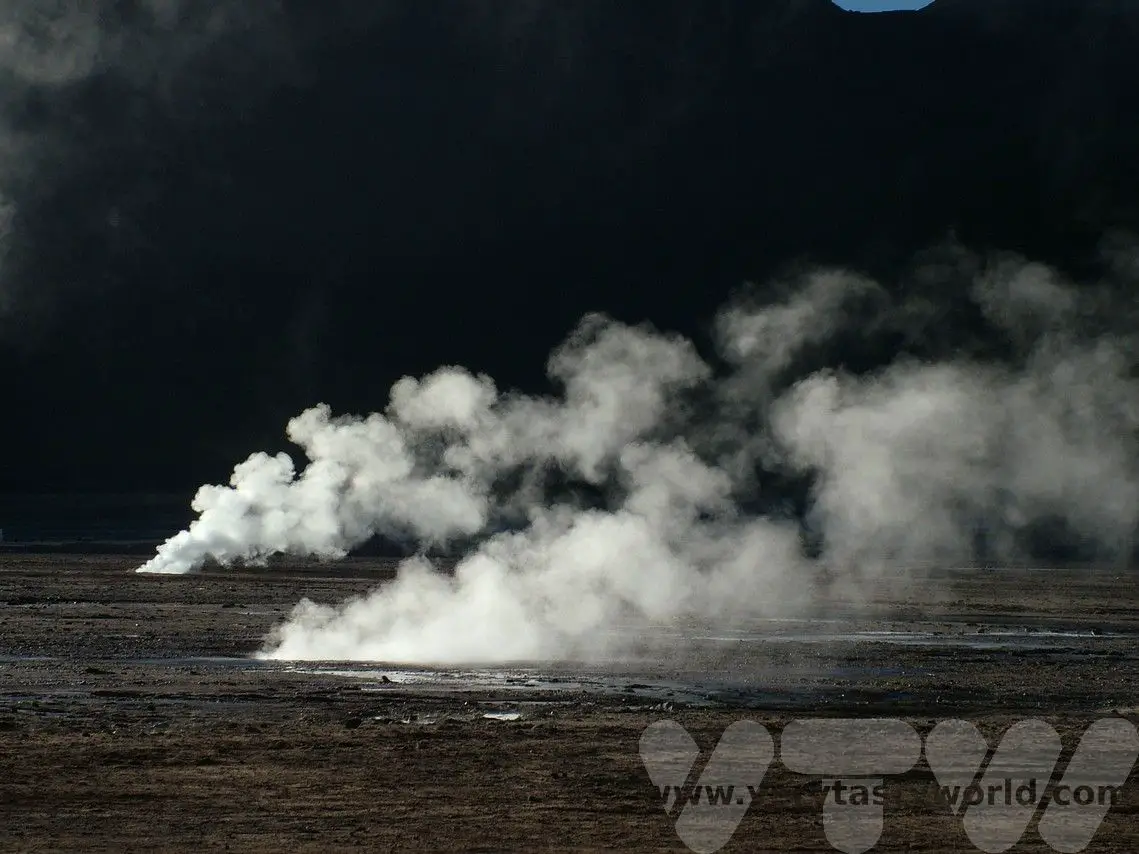
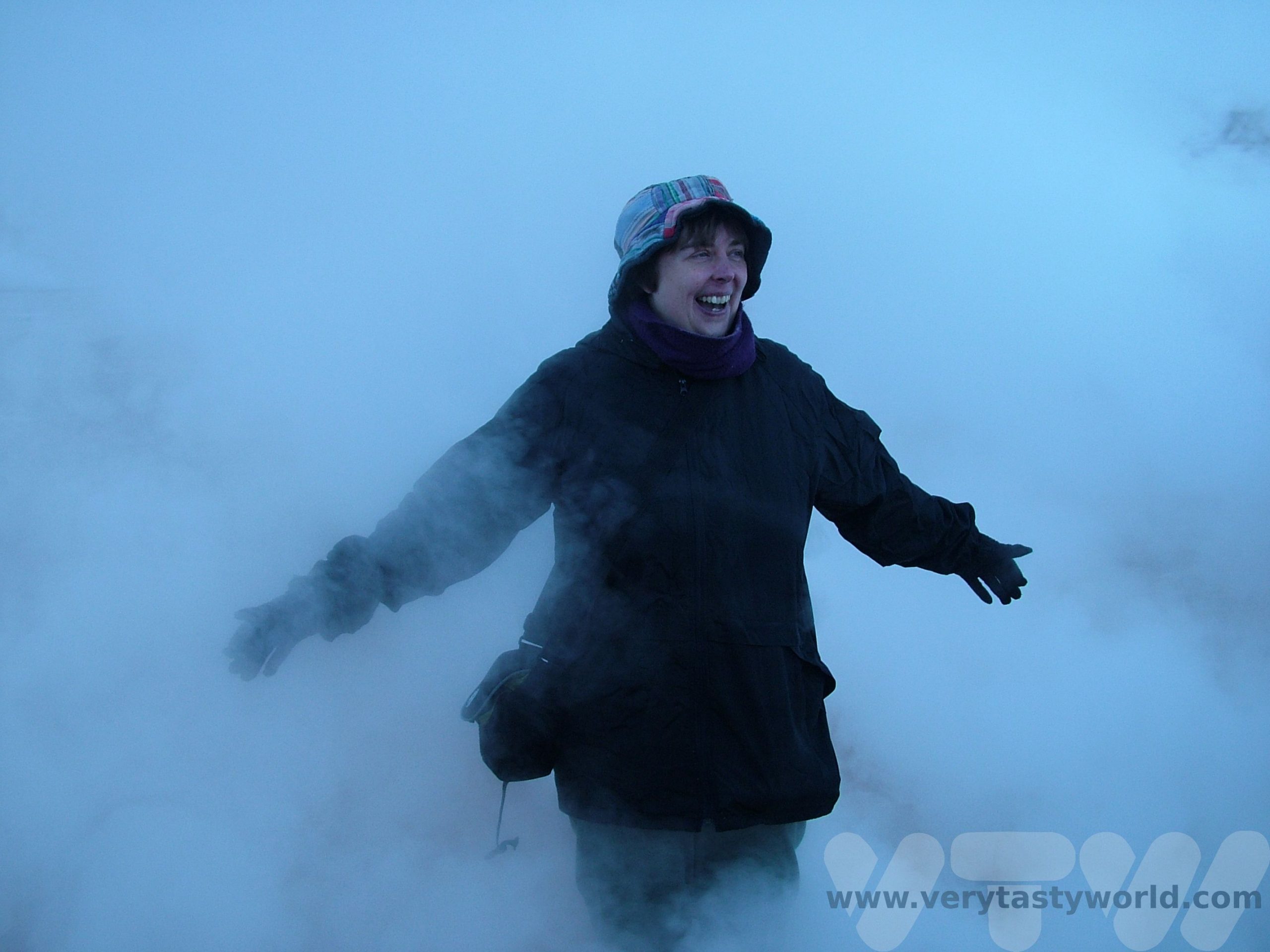
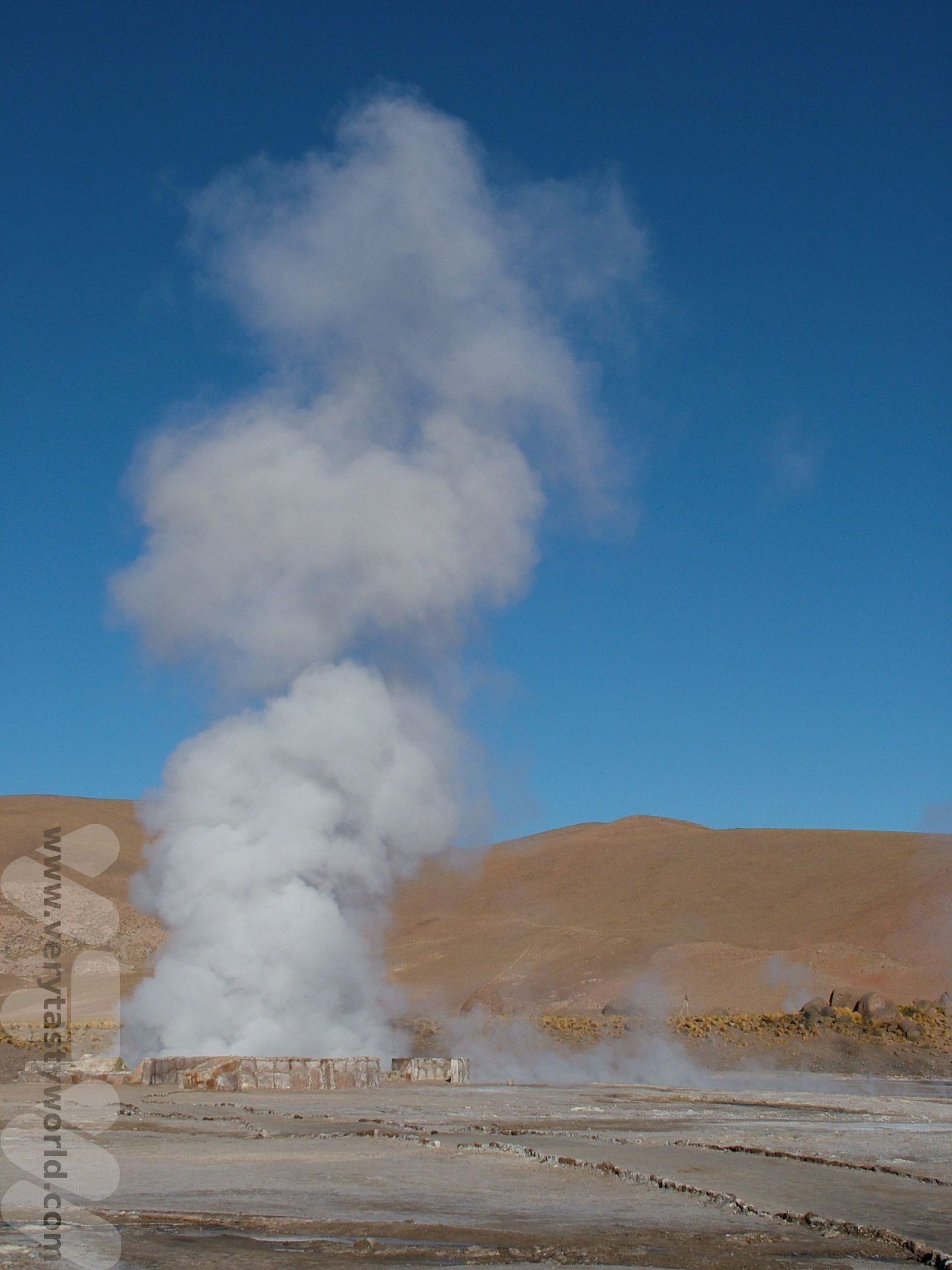
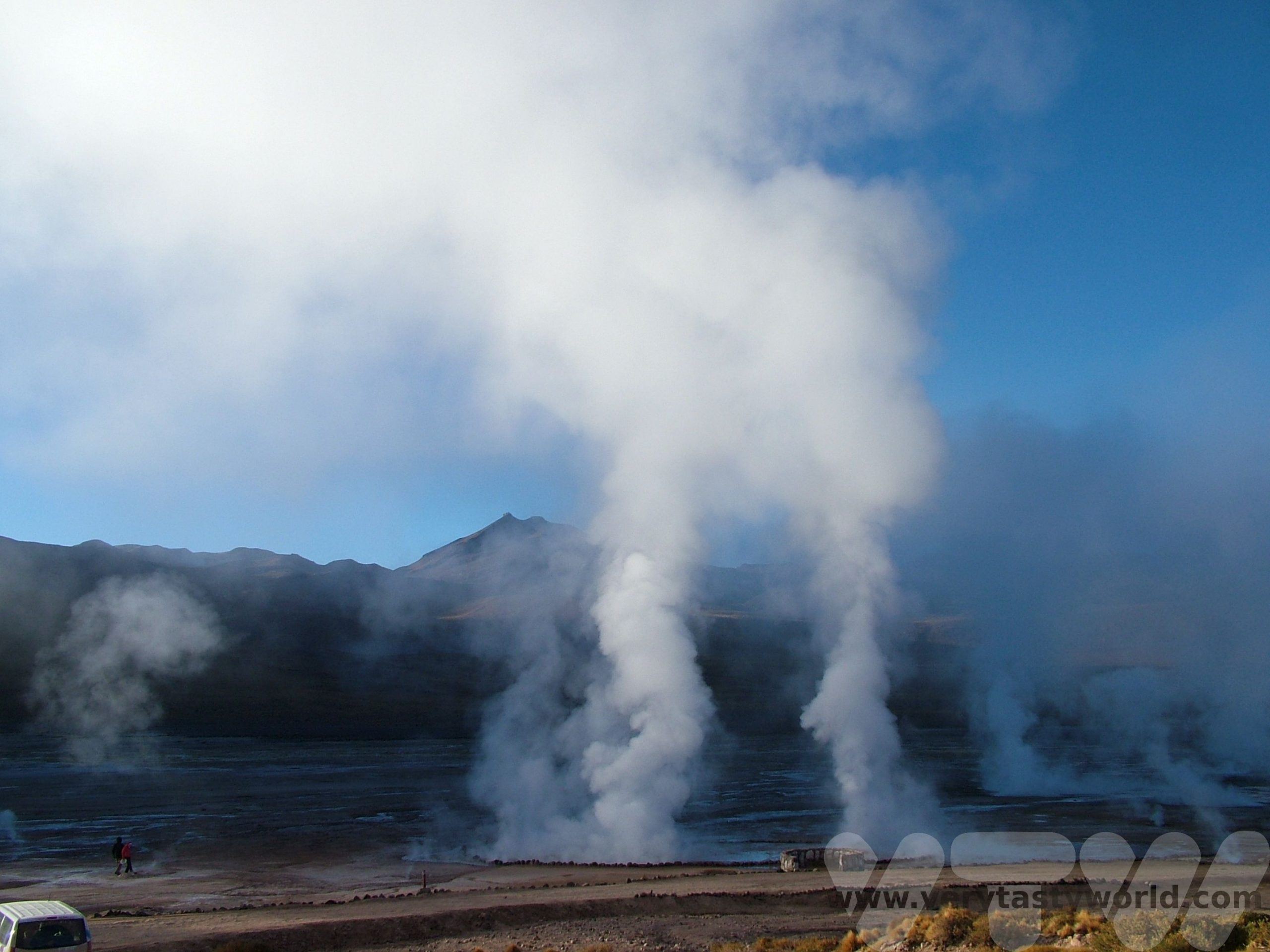
The trip also included a more leisurely journey back to San Pedro, viewing some lovely scenery and visiting a cactus forest.
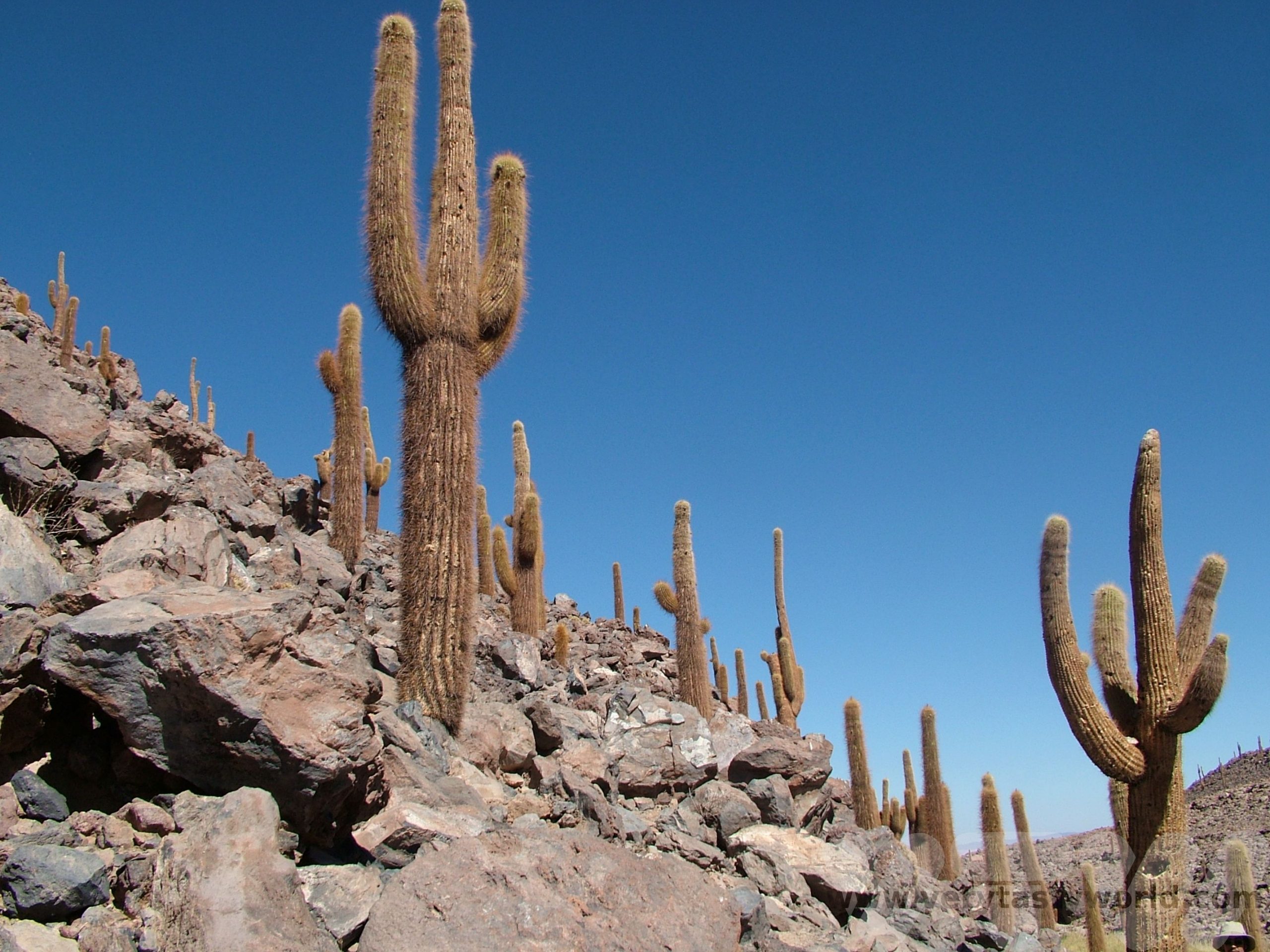
We have a more detailed account of this trip and more photos here.
San Pedro
Back at San Pedro there are plenty of bars and restaurants to keep you entertained. Some have live music in the evening. It also had a cute museum, with a lovely geodesic design, that displayed local artefacts, although apparently it has sadly closed. Since we visited further museums have opened up. One activity that would definitely be worth investigation would be the astronomy observatory. The Atacama has some of the clearest night skies in the world and it is possible to do a tour – at an observatory that is open to the public – to look at the skies.
Related Posts You May Enjoy

- Best Time To Visit Machu Picchu 2024 Update
- A 2 Week Patagonia Itinerary
- Day of the Dead in Campeche
- A Galapagos Land Based Itinerary
- RECIPE: How to Make Costa Rica’s Gallo Pinto
- A Tasty Puebla Food Tour
- Costa Rica Wildlife Sanctuary – Caño Negro
- Visit Torres del Paine National Park in Patagonia
- Atacama Desert Itinerary
Please note that this post contains affiliate links. If you click the link and decide to make a purchase we will earn a small commission, at no cost to you, which helps towards running this site.
The Maipo Valley in Chile
You’re the Wine That I Want
Less than an hour’s drive from the bustling capital Santiago is Chilean wine country. The Maipo valley is ideally located for growing vines – a combination of perfect soil, altitude and climate.
Concha y Toro is probably Chile’s most famous wine producer – its wines are exported all over the world. Their working vineyard isn’t available to visit, which is a shame, but just outside the village of Pirque they have a visitors’ centre whereby you can tour the grounds and cellars as well as visit a very big shop. There are tours available in English and Spanish which all have a set starting time.
The vineyard was established in 1883 by Chilean businessman Melchor Concha y Toro who recognised the potential for winemaking in Pirque. He procured French vines from Bordeaux and invested in the equipment needed to start producing wine on a grand scale.
You get to see the exterior of the family house, its gardens and a display areas showing the different grape varieties with commentary on how the grapes are cultivated.
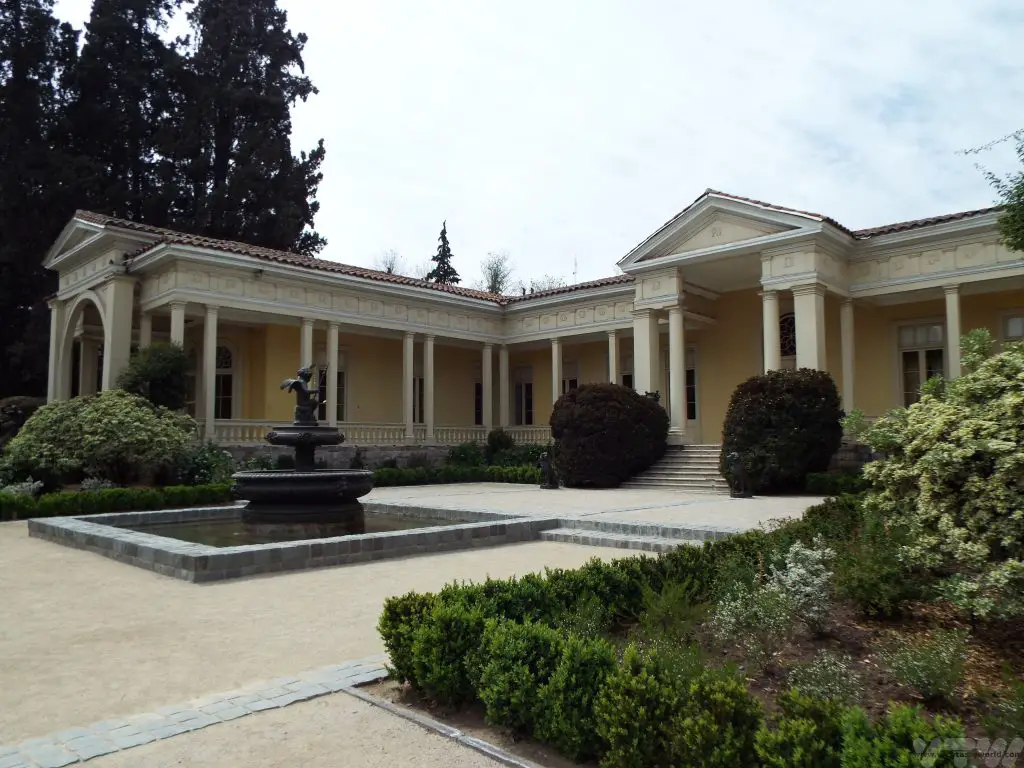
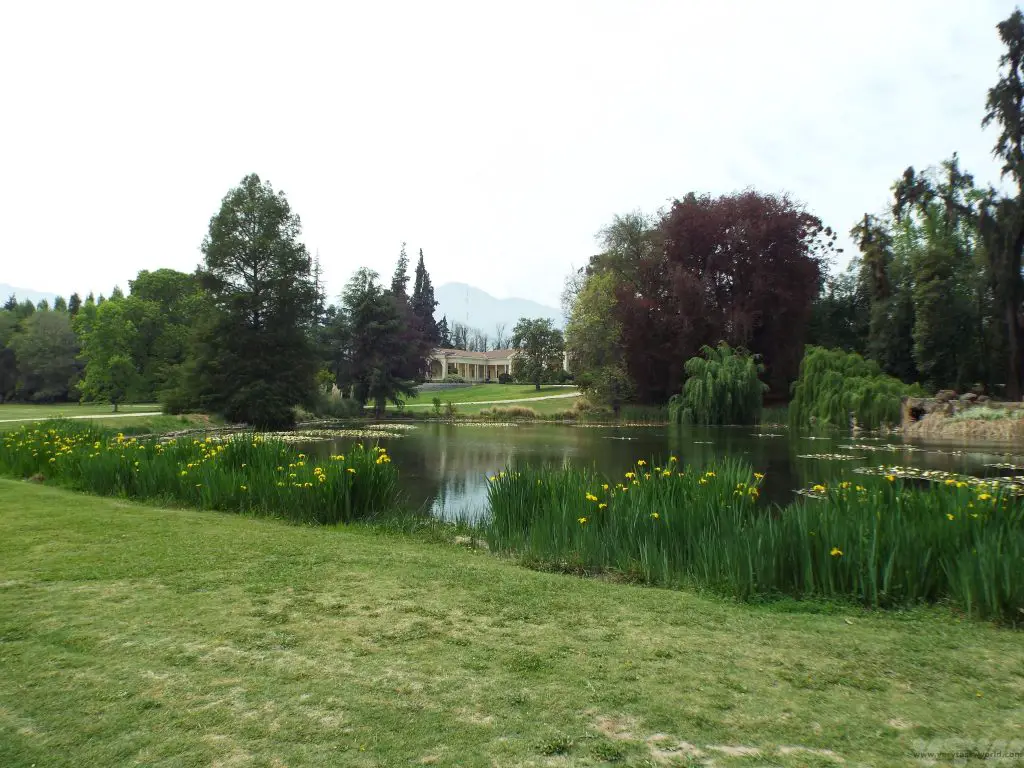
Then it’s into the cool, cool cellars where you can see lots of barrels and a sound and light display.
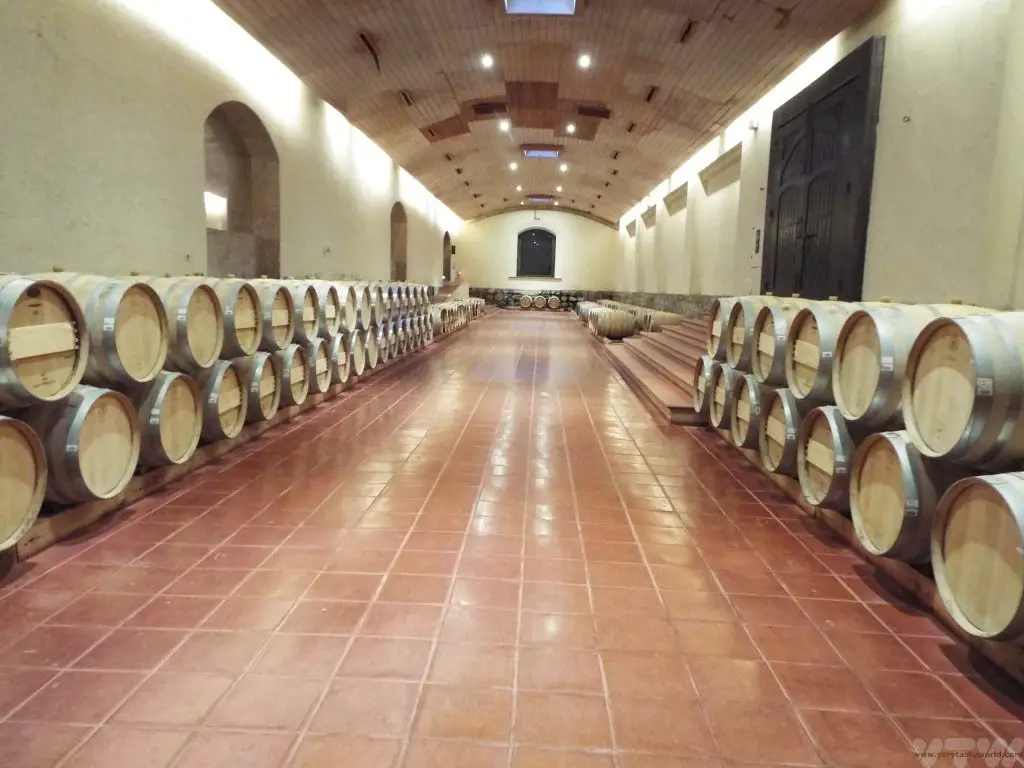
There was a legend that in the early days of the winery, despite the cellars being locked, bottles of wine used to go missing overnight. The owners started a rumour that the devil lurked within the cellars. And since that rumour circulated, not a single bottle of wine ever went missing again.
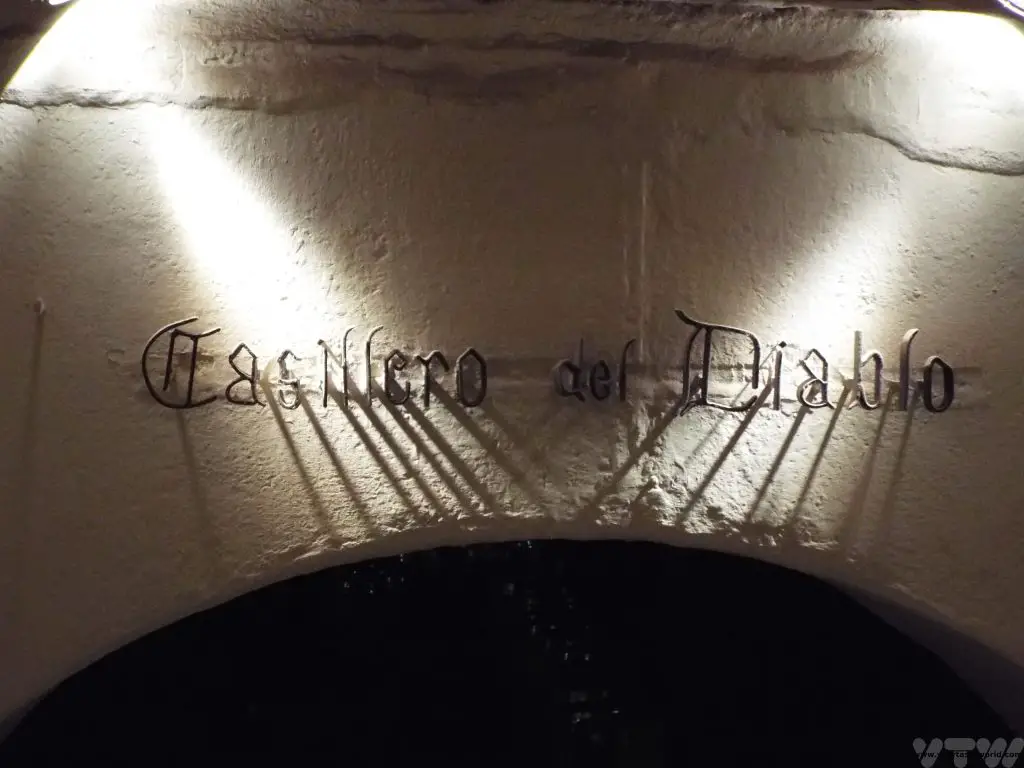
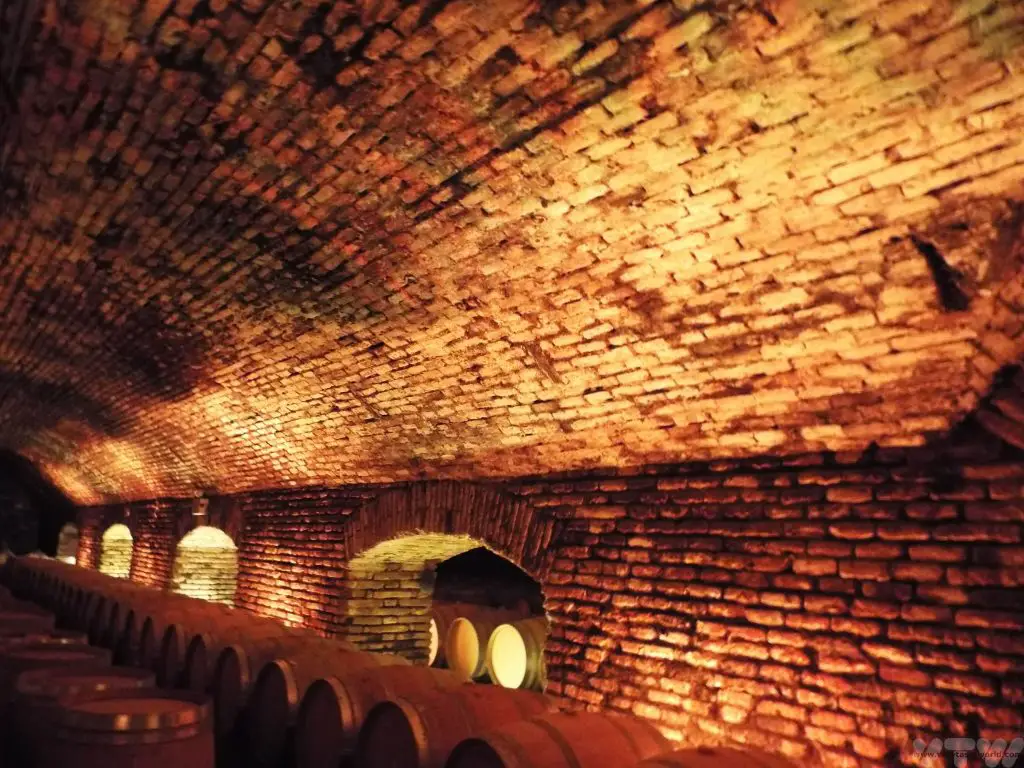
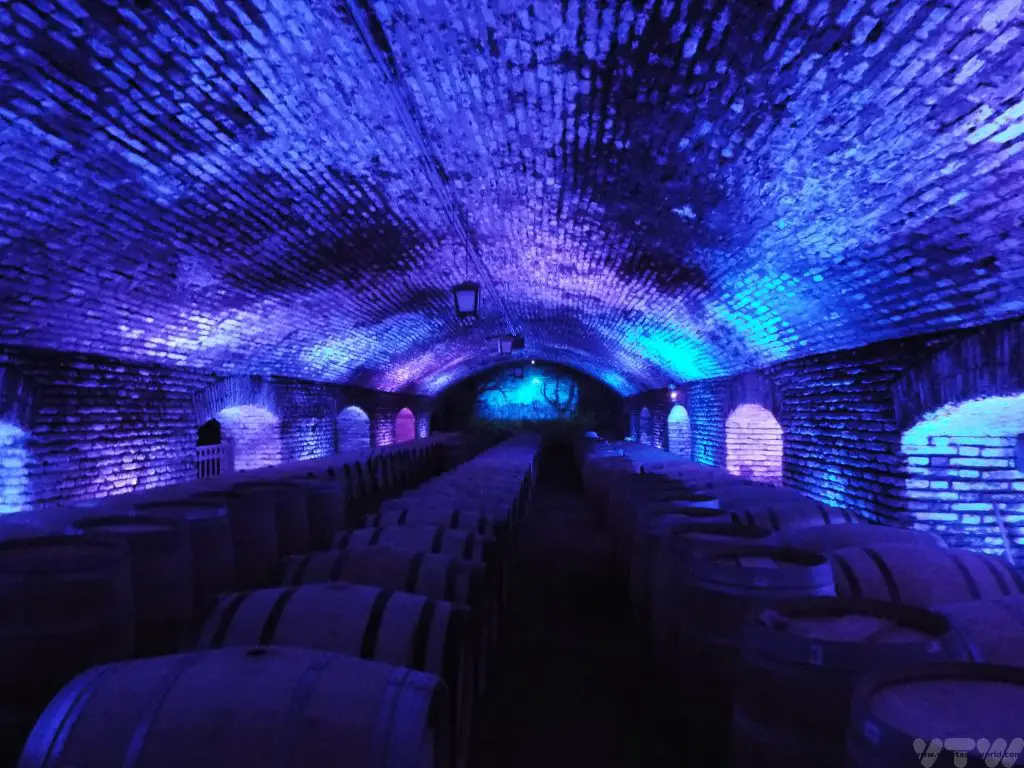
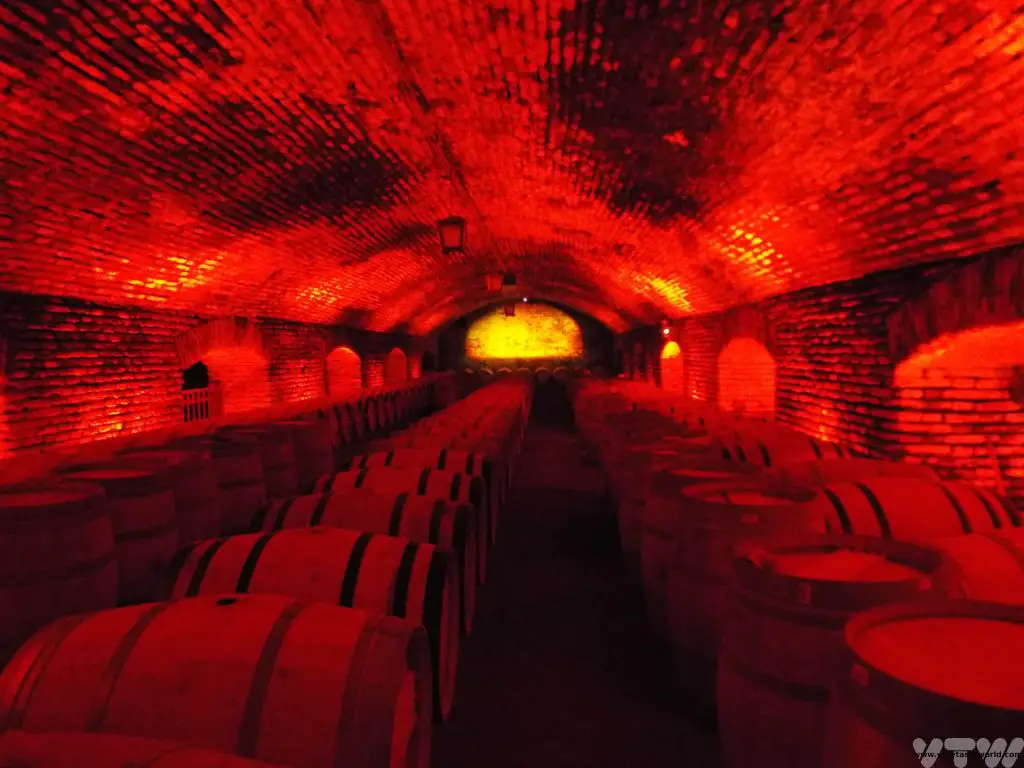
Maipo Valley Wine Tasting
You are given a tasting glass which you can keep. (If you are travelling to other destinations, stuff a t-shirt inside the bowl, wrap it around the whole glass, taking special care to protect the slender stem, place the whole lot gently back into its souvenir box and hope for the best – both of our glasses survived a further fortnight travelling around South America.) And receiving a glass means you get to taste a variety of the winery’s produce.
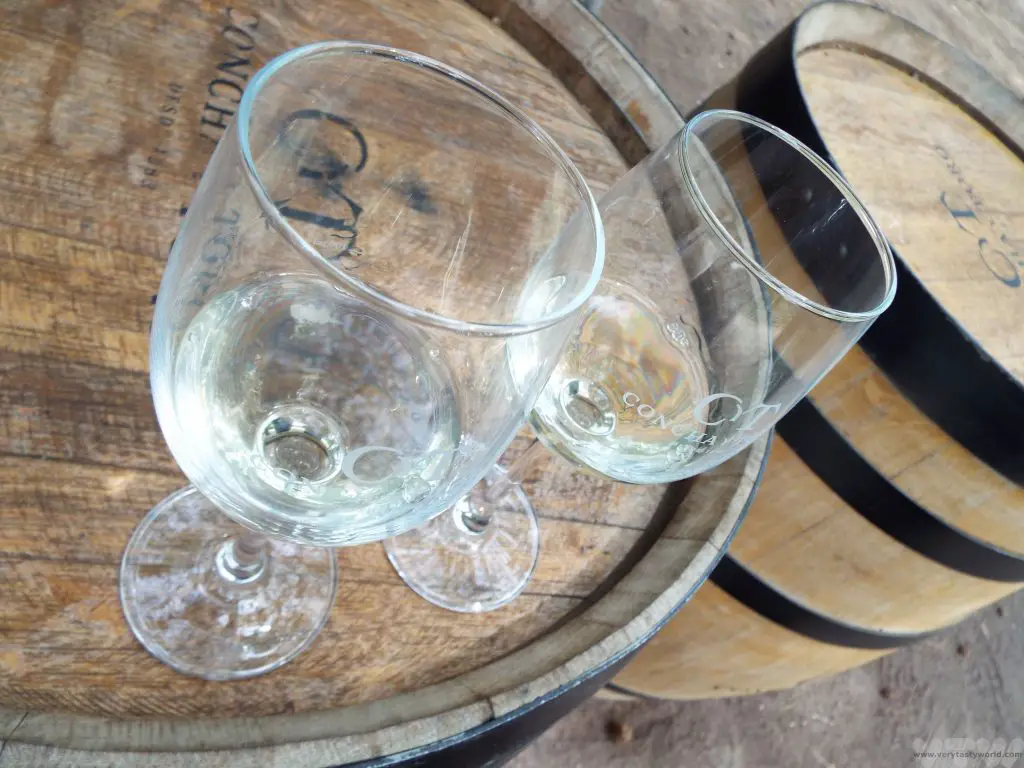
Originally grape varieties were brought over to the Maipo Valley from Europe (Bordeaux) and these included Cabernet Sauvignon, Sauvignon Blanc, Semillon, Merlot and Carménère. The latter is very rare in Europe these days, having been pretty much destroyed by the dreaded phylloxera, a sap-sucking bug. So Chile is now the Carménère capital of the world. It’s a variety that we had never tried before. The wine we tasted was incredibly fruity, like raspberries and cherries with sour notes and a lingering finish.
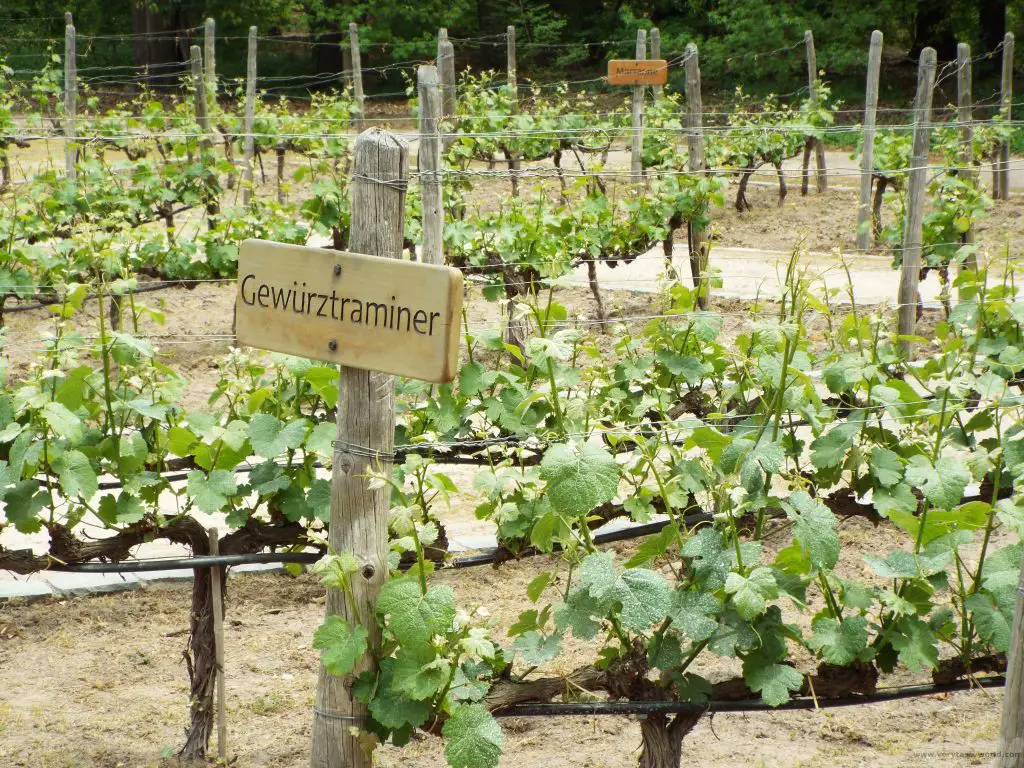
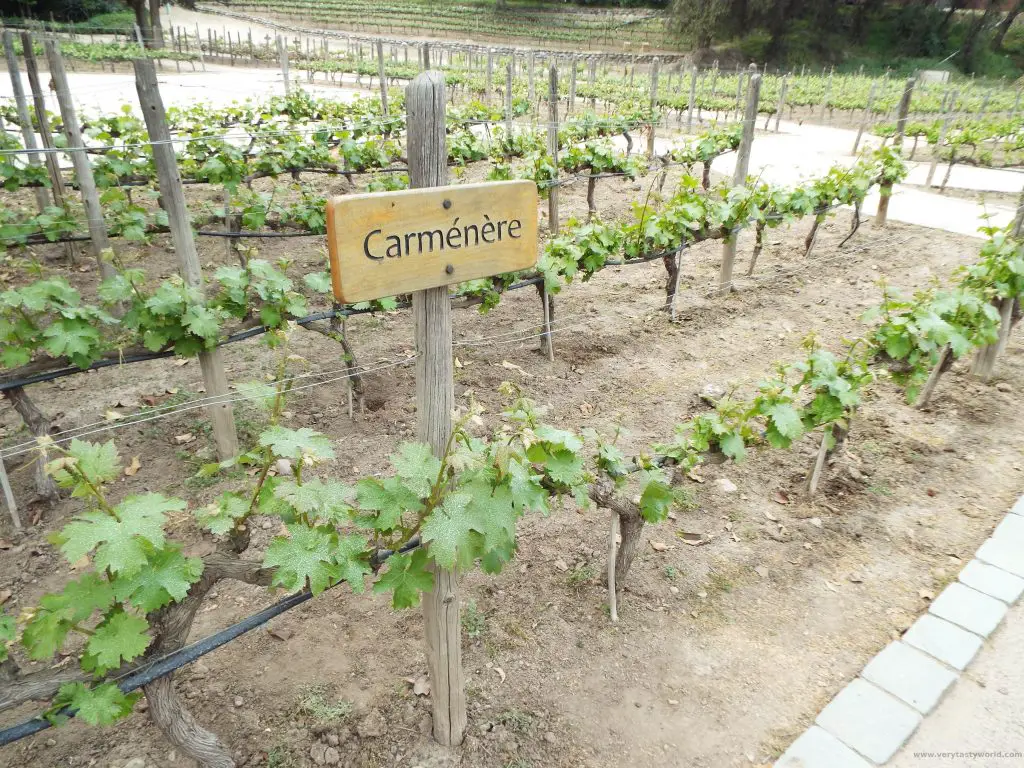
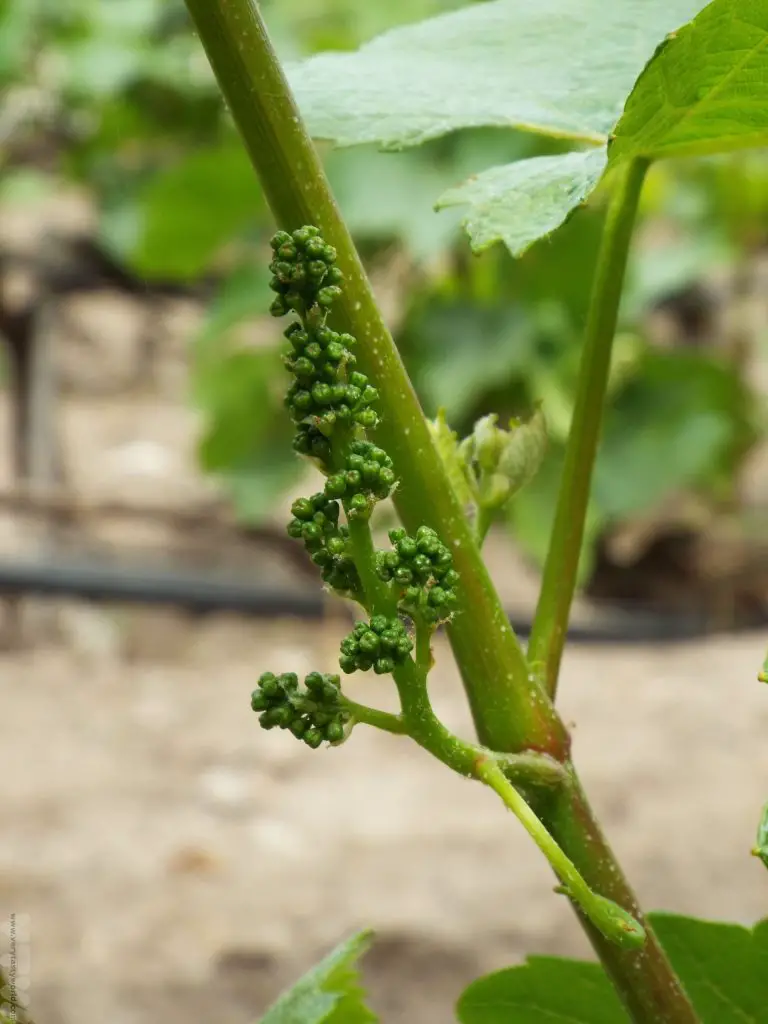
As with all the grape varieties the vines are watered using only a teeny amount of water. Literally a few drops per day. This means that the plants work extra hard to produce fruit which leads to a higher yield and, of course, more wine.
The Maipo Valley wines on offer for tasting included a smooth blackcurranty Cabernet Sauvignon, a mellow Carménère and a zingy Sauvignon Blanc.
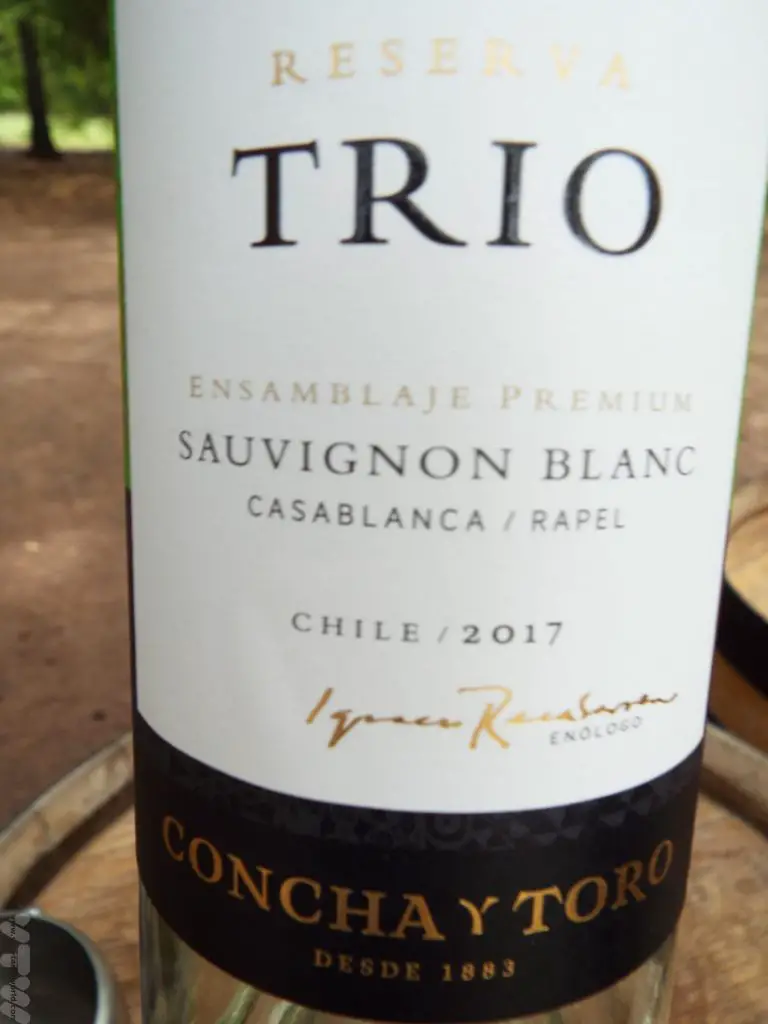
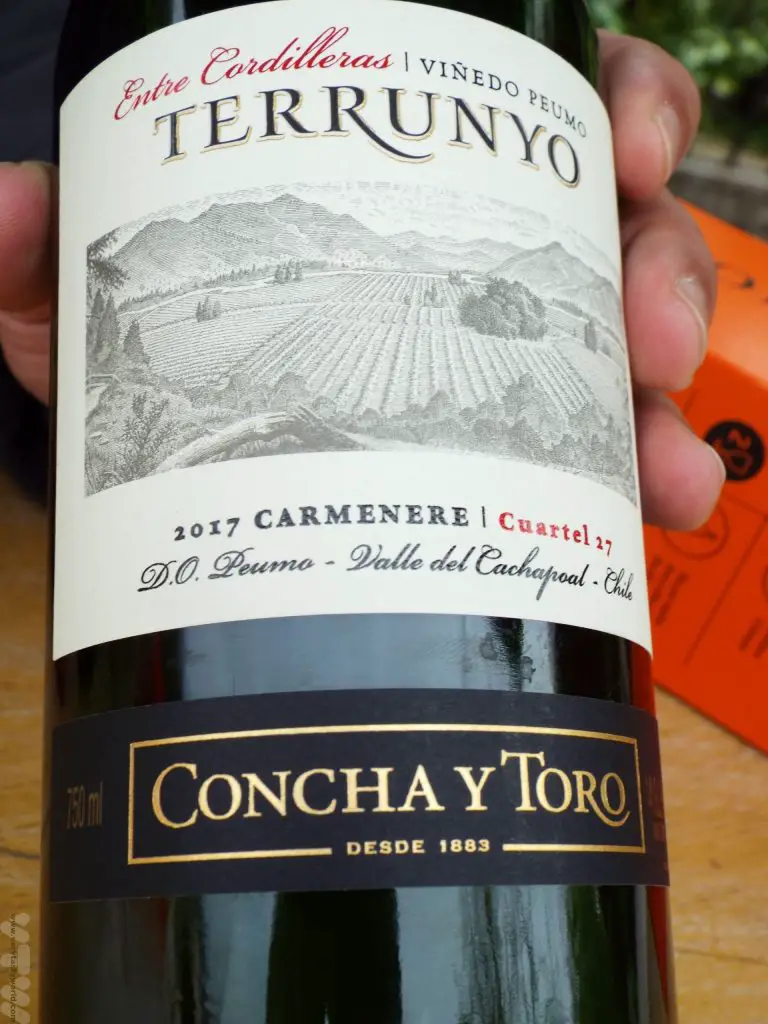
We took full advantage of being in Chile to sample the local wine – it was massively cheaper than in the UK. Even visiting ordinary supermarkets to stock up on a tipple was definitely worthwhile – we could taste some really splendid wines for a fraction of the price that it would have cost in our home country. (We recommend packing a travel corkscrew.)
Related Posts You May Enjoy

- Best Time To Visit Machu Picchu 2024 Update
- A 2 Week Patagonia Itinerary
- Day of the Dead in Campeche
- A Galapagos Land Based Itinerary
- RECIPE: How to Make Costa Rica’s Gallo Pinto
- A Tasty Puebla Food Tour
- Costa Rica Wildlife Sanctuary – Caño Negro
- Visit Torres del Paine National Park in Patagonia
- Atacama Desert Itinerary
Geezers at the Geysers, Atacama Desert, Chile
The El Tatio geysers in the Atacama Desert are the world’s highest geysers. That’s the world’s highest altitude (4300m) not the world’s most spurty geysers. It is possible to take a tour to see them.
Most trips are organised from San Pedro de Atacama. There are loads of companies in the town, which is fully geared up for tourism, and all of them will offer trips to the attractions in the area. Some excursions can be booked on the day; El Tatio needs to be booked in advance, if possible, as it’s a popular trip and involves an early start. Most companies will pick you up from your accommodation. This turned out to be quite handy, as we had to get up at 4am. It’s a 3 hour bumpy minibus ride to reach the site. You also need to be prepared with appropriate clothing: it was –9ºC on arrival but the temperature had gone above 30ºC by mid-morning. Wearing lots of layers and discarding them as necessary (whilst maintaining an appropriate level of decency) is the best approach.
It was absolutely worth the effort. We arrived at sunrise to see the geysers at golden hour. They were spectacular.

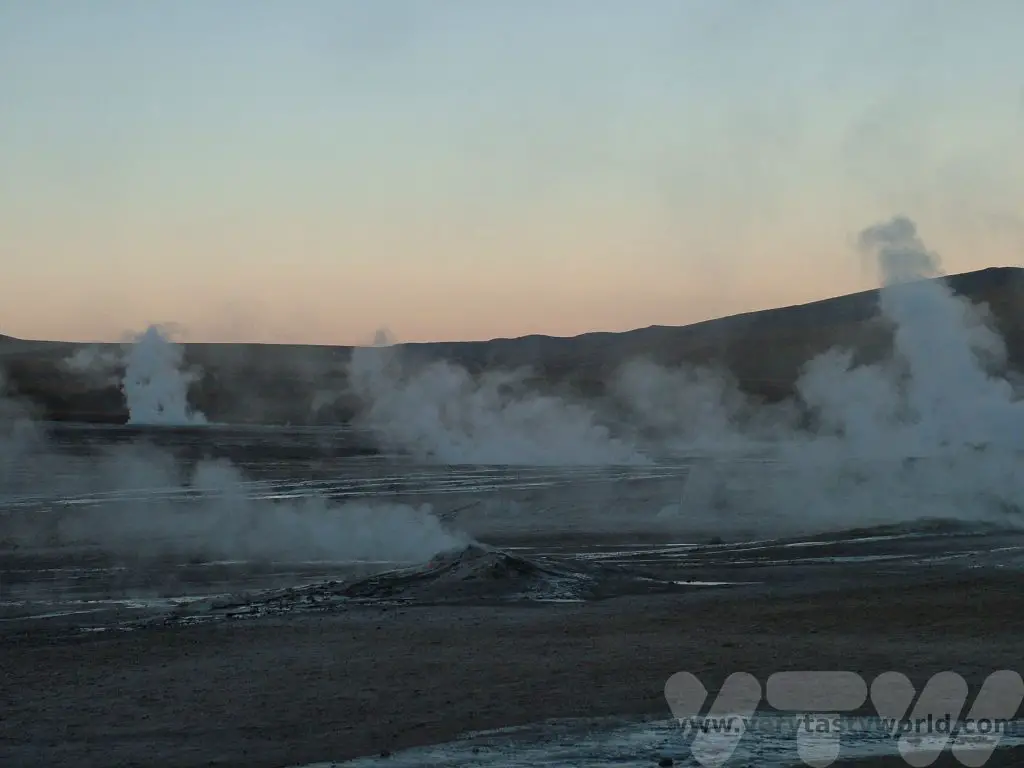
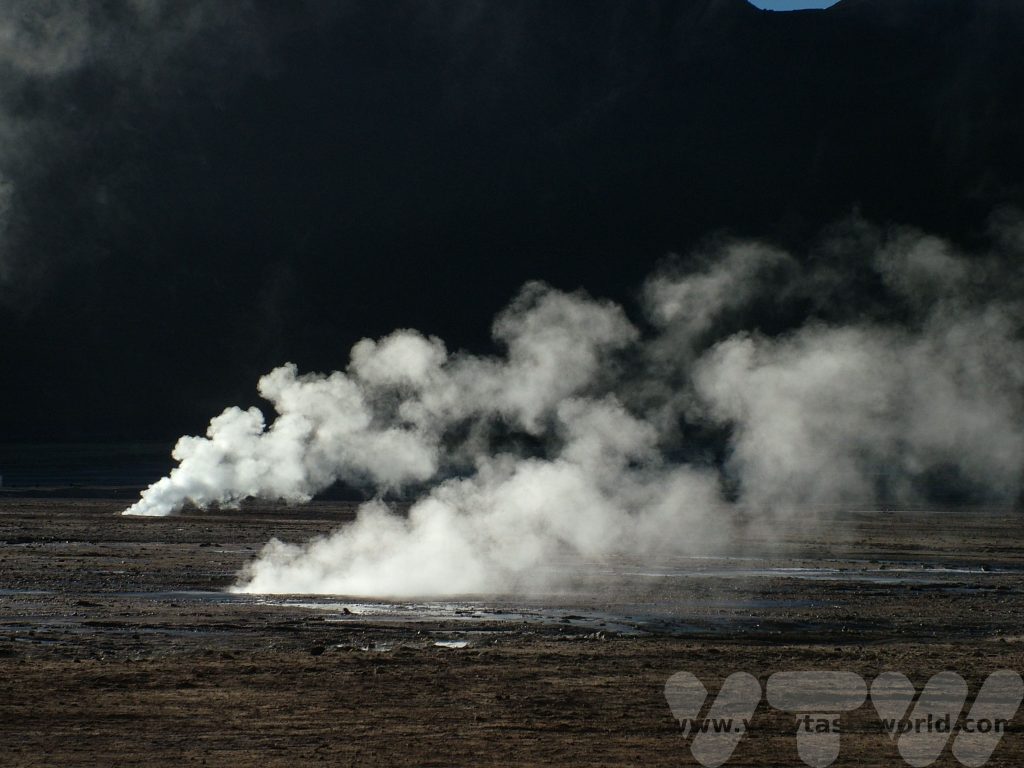
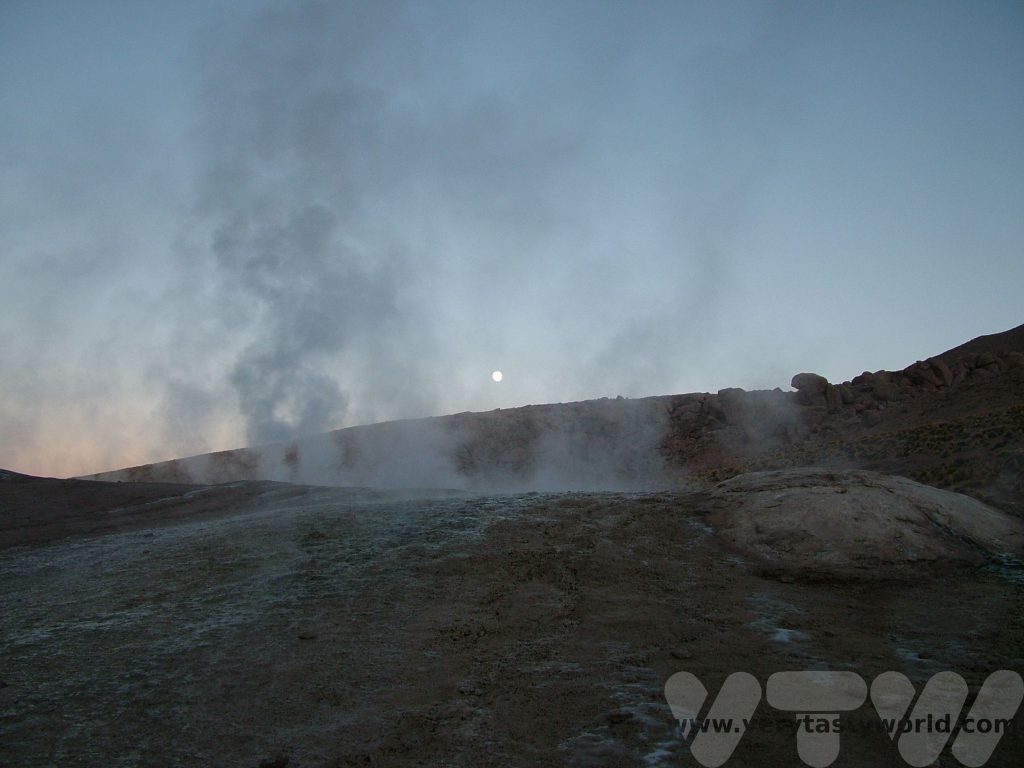
El Tatio is a geothermal field, the third largest in the world, and contains geysers, fumaroles, steam vents, mudpots and hot springs.
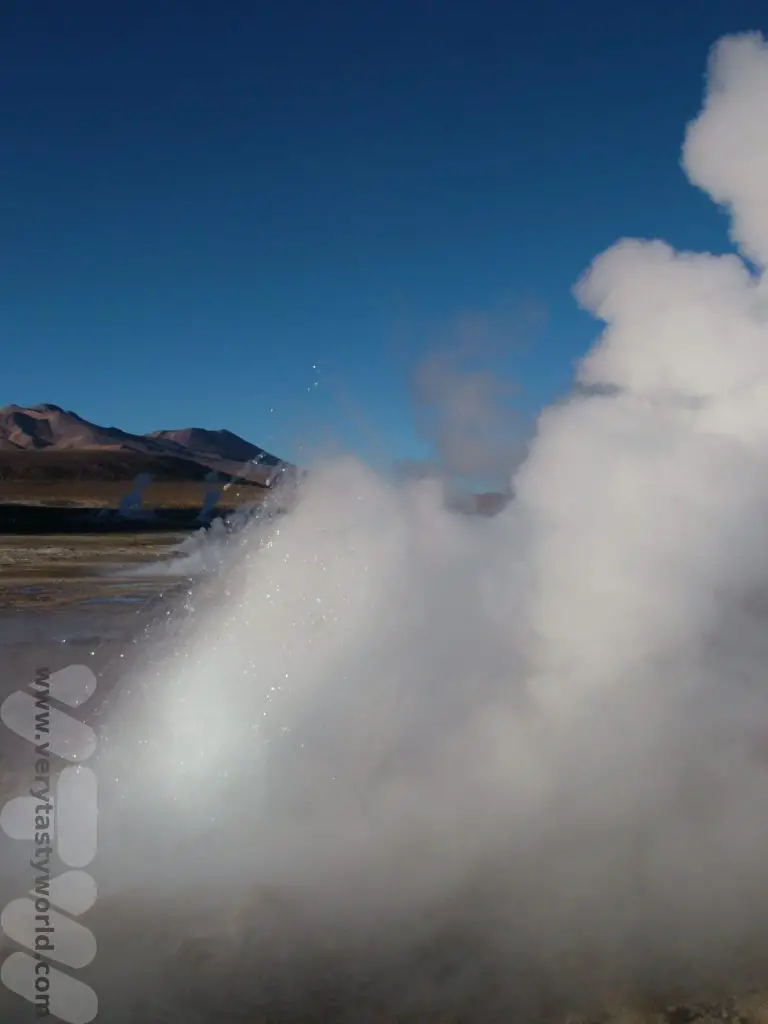
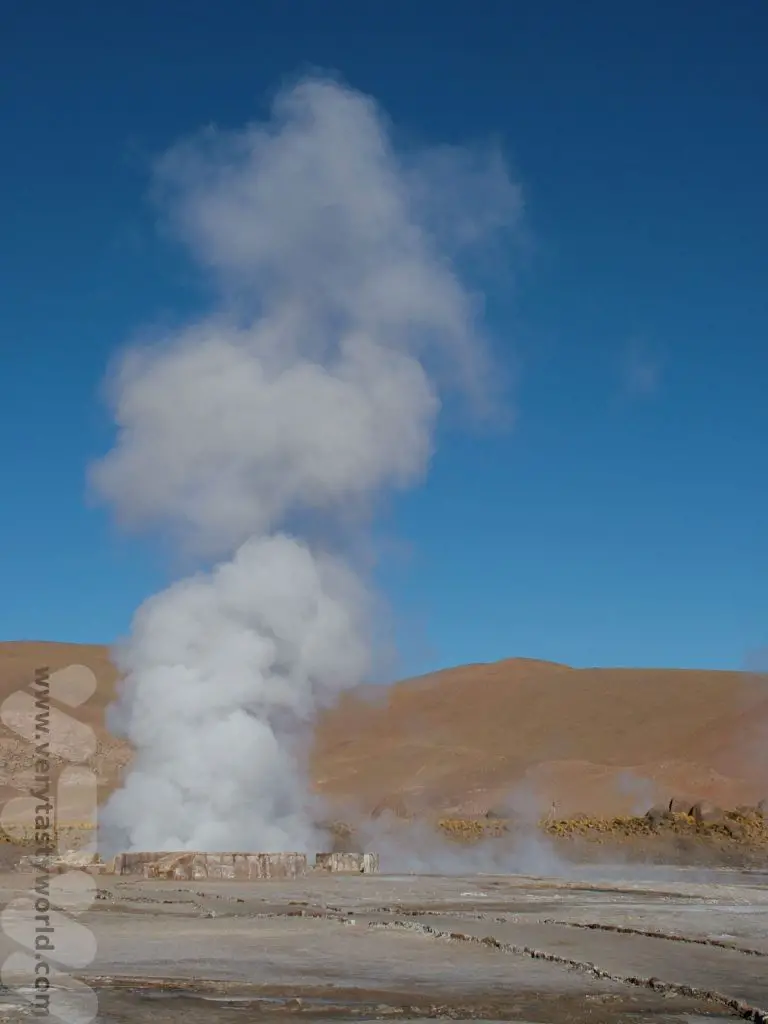
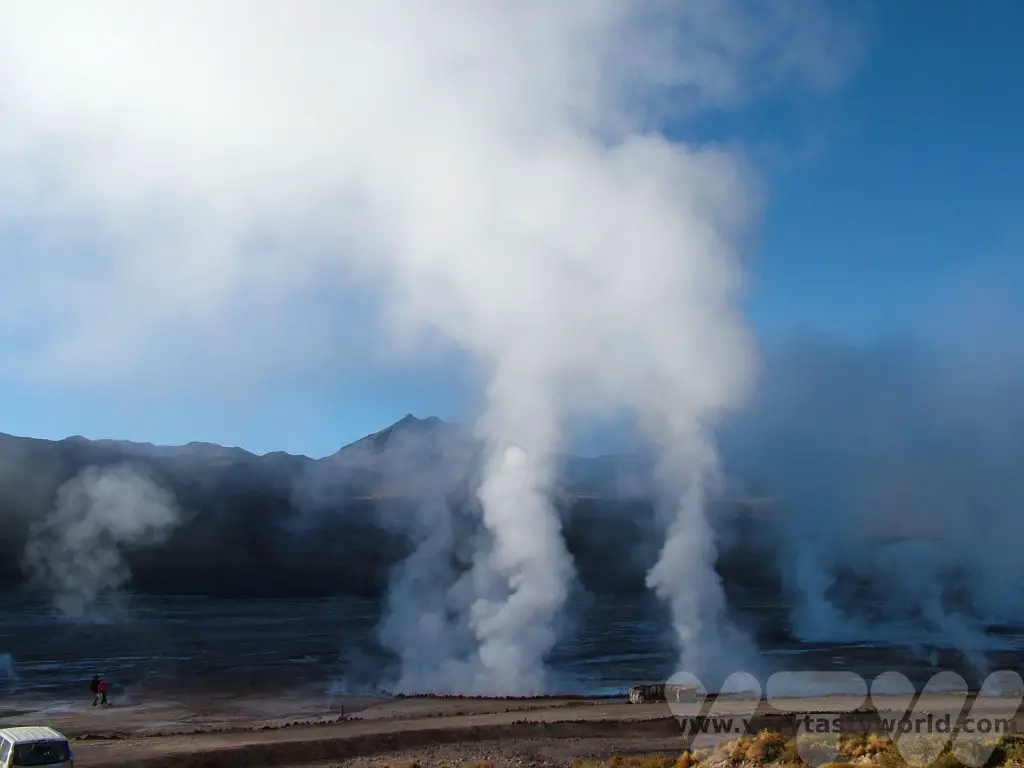
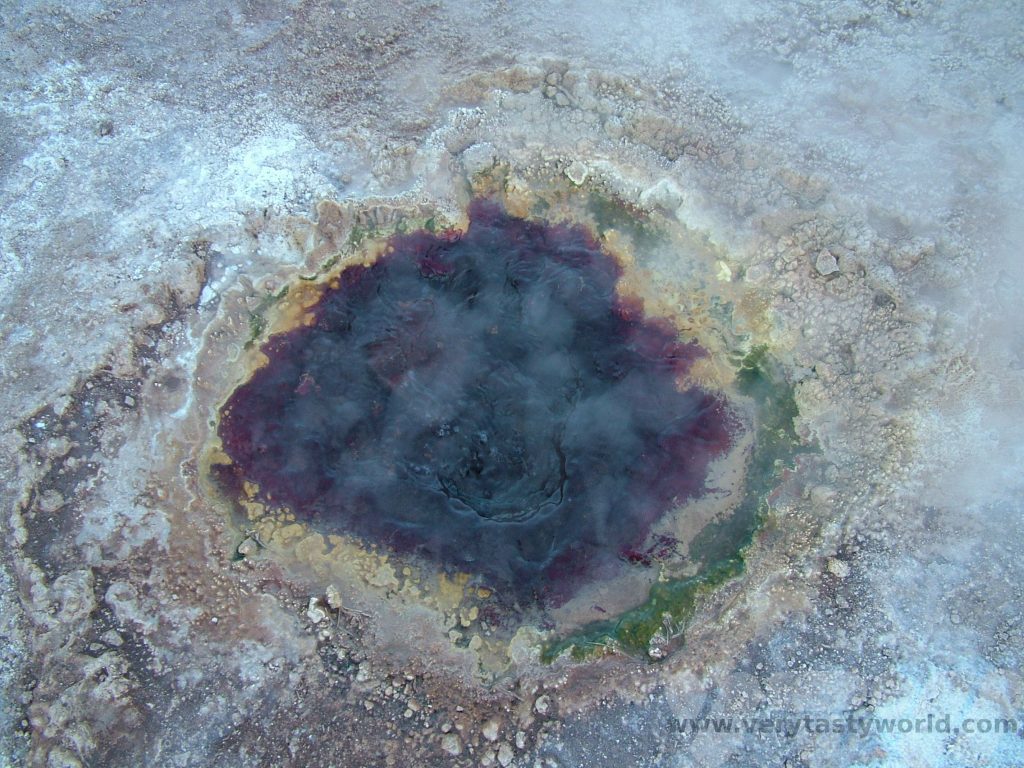
Because the area hasn’t yet been designated a national park (geothermal energy companies tried to harness the energy but didn’t really make a go of it and the area is still vaguely designated as “industrial” rather than a “tourist area”) there are no designated walkways and you can just wander through the geyser field. This means that you can actually stand in a geyser – great if your feet are feeling a little chilly! You have to be careful though – the earth’s crust is pretty thin up there and a number of people have been seriously injured falling through it and getting burned or frozen in a random extreme temperature accident.
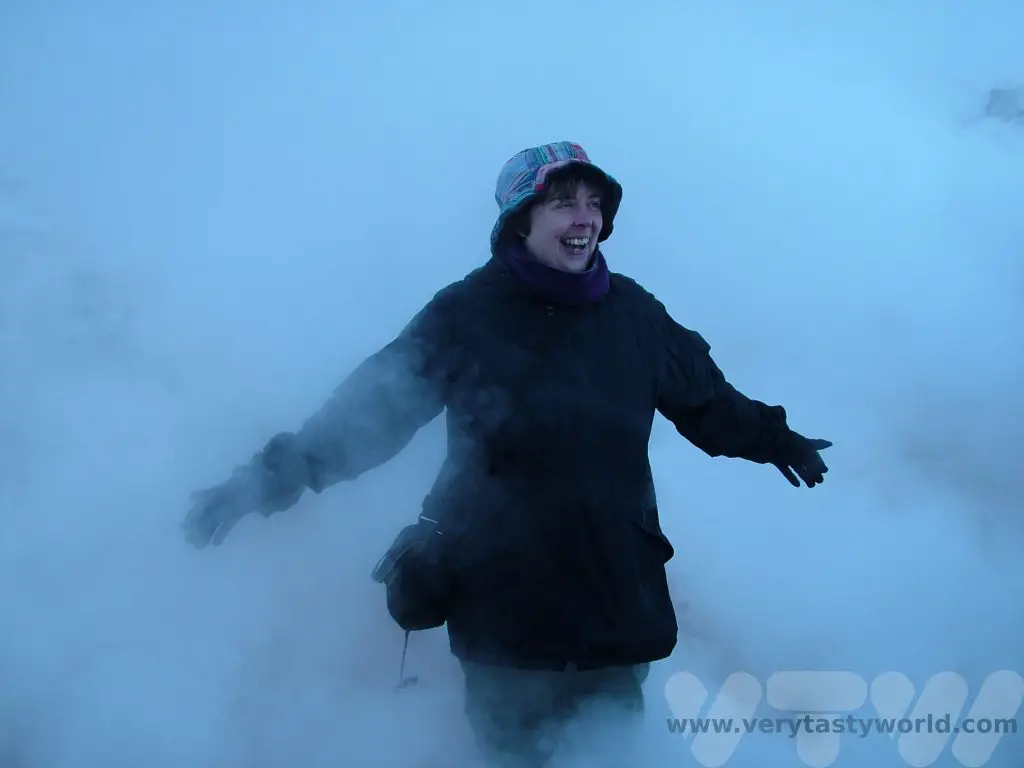
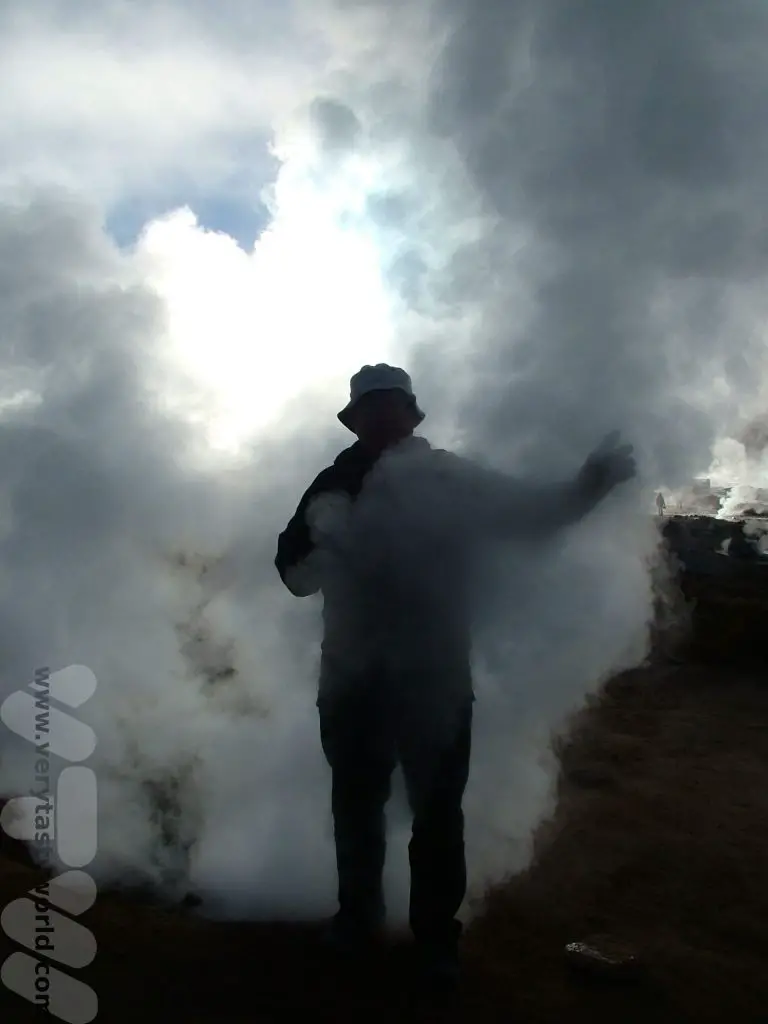
If you bring your bathing suit, and the tour allows time for it, you can go swimming in the geothermal hot springs.
The surrounding area is very beautiful as well. Most tours will offer a leisurely journey back, stopping off at various sites.
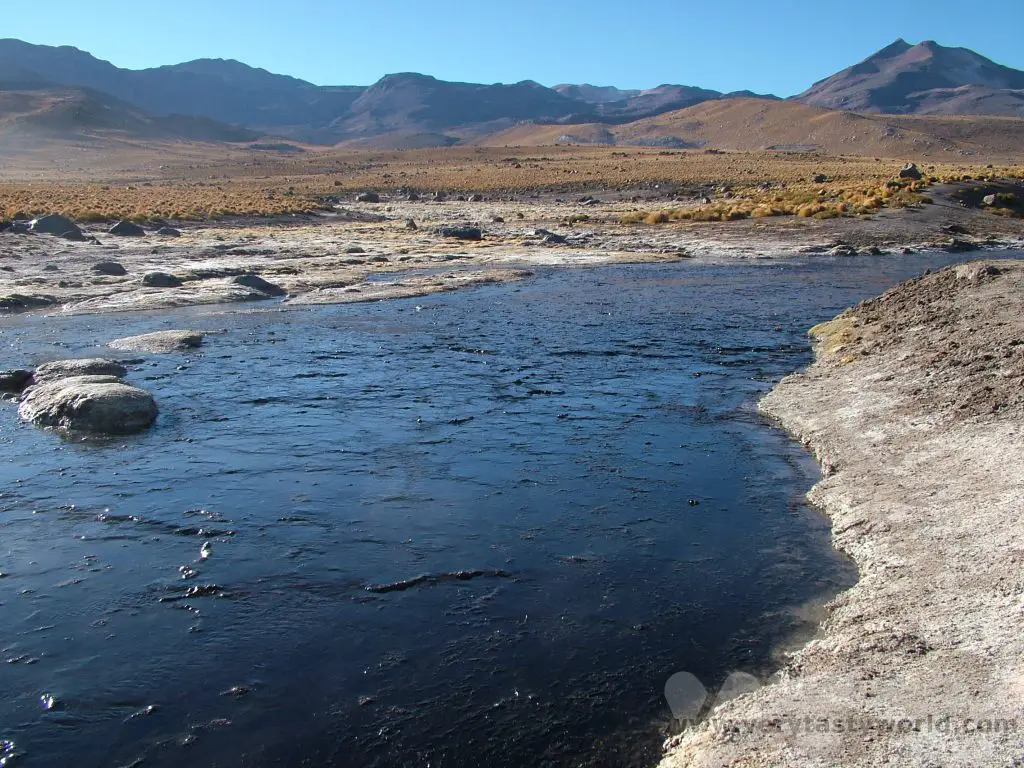
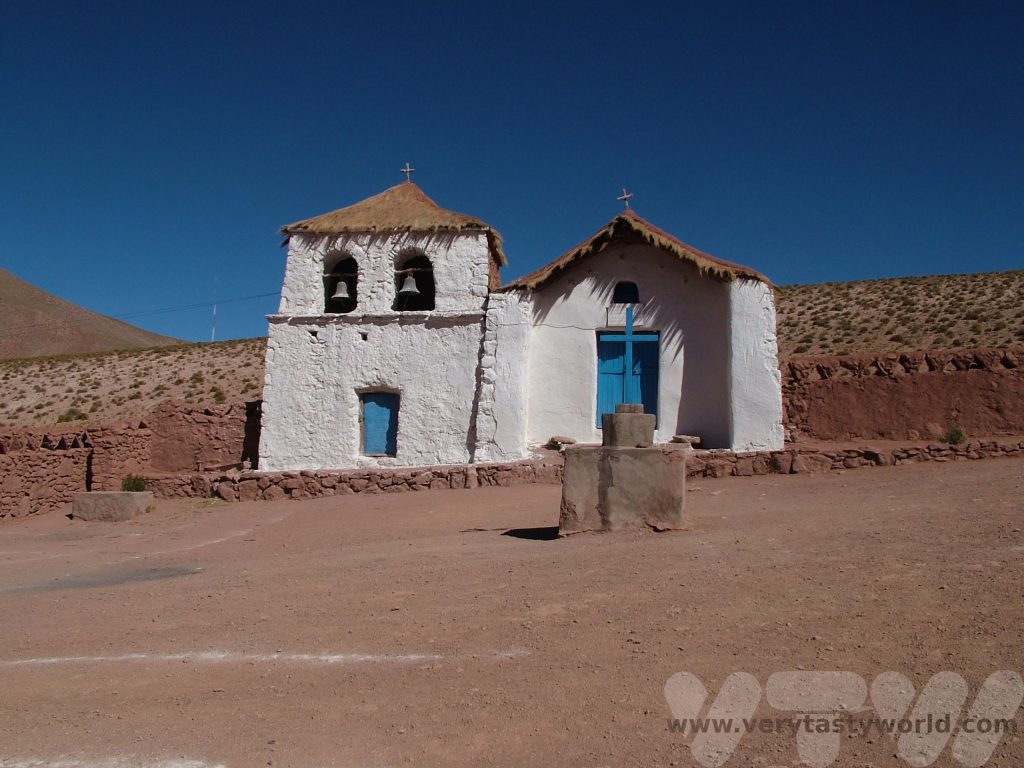
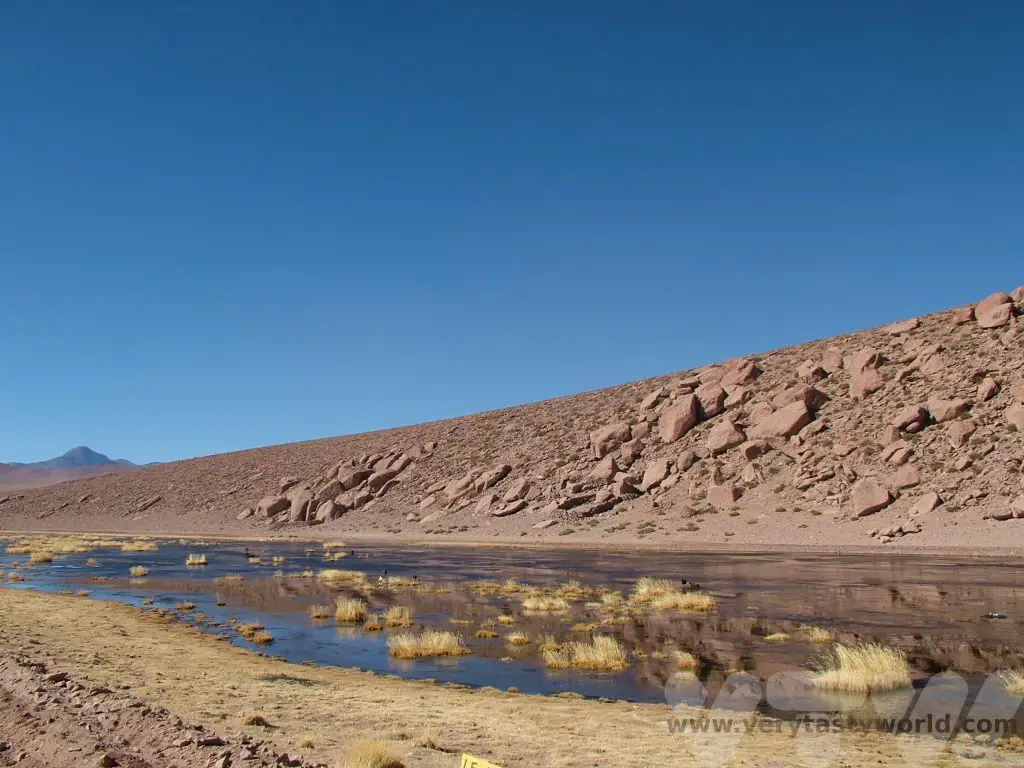
Llama kebab barbeques are available if you want a late breakfast.
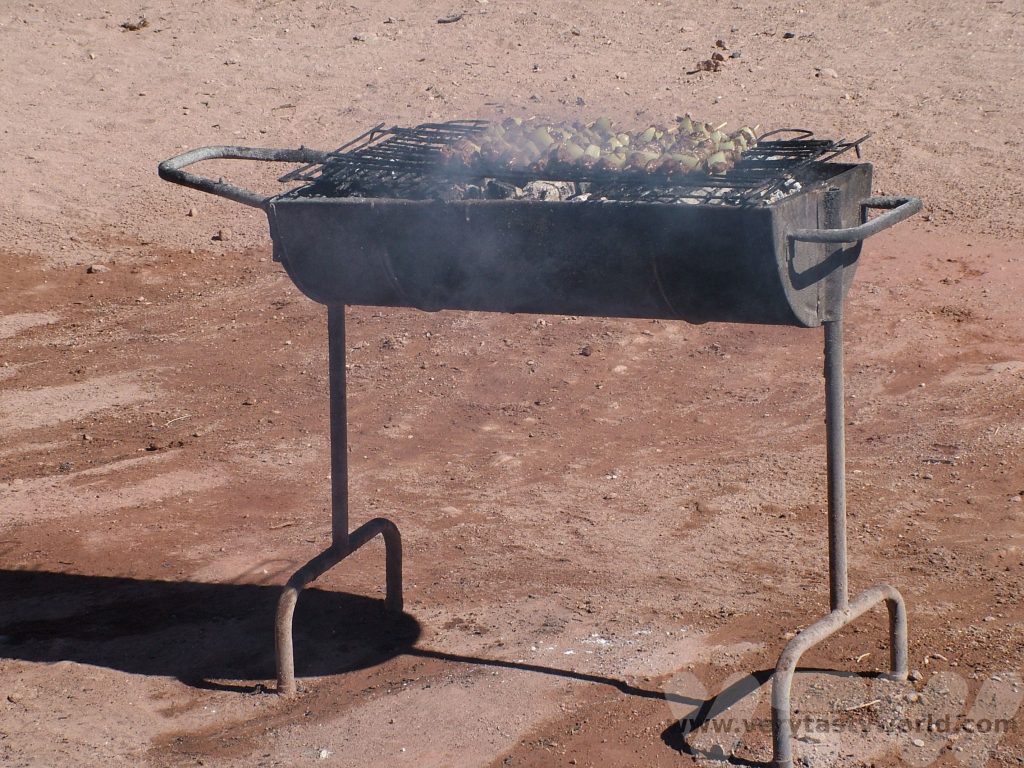
The cactus forest is also worth a visit.
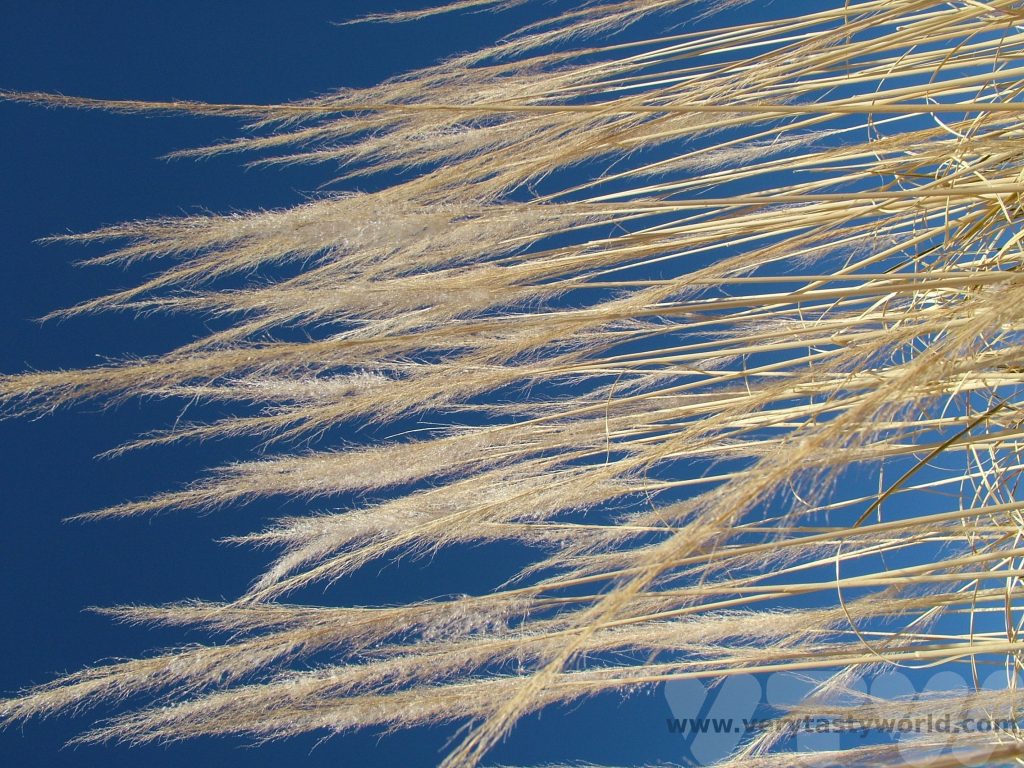
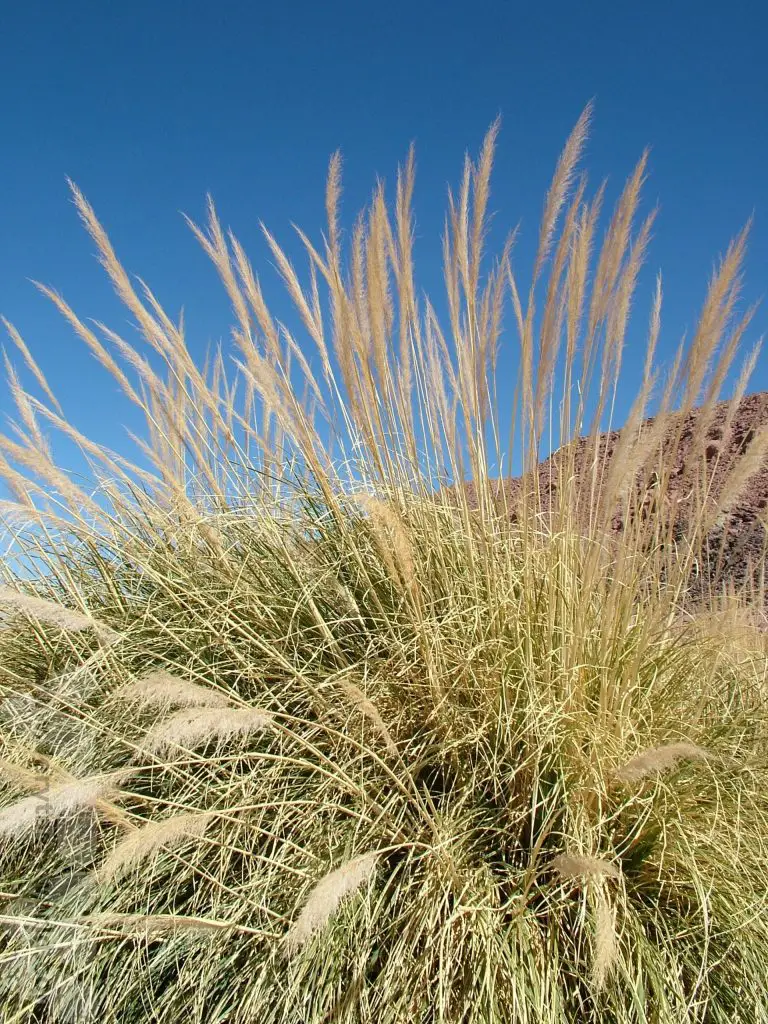
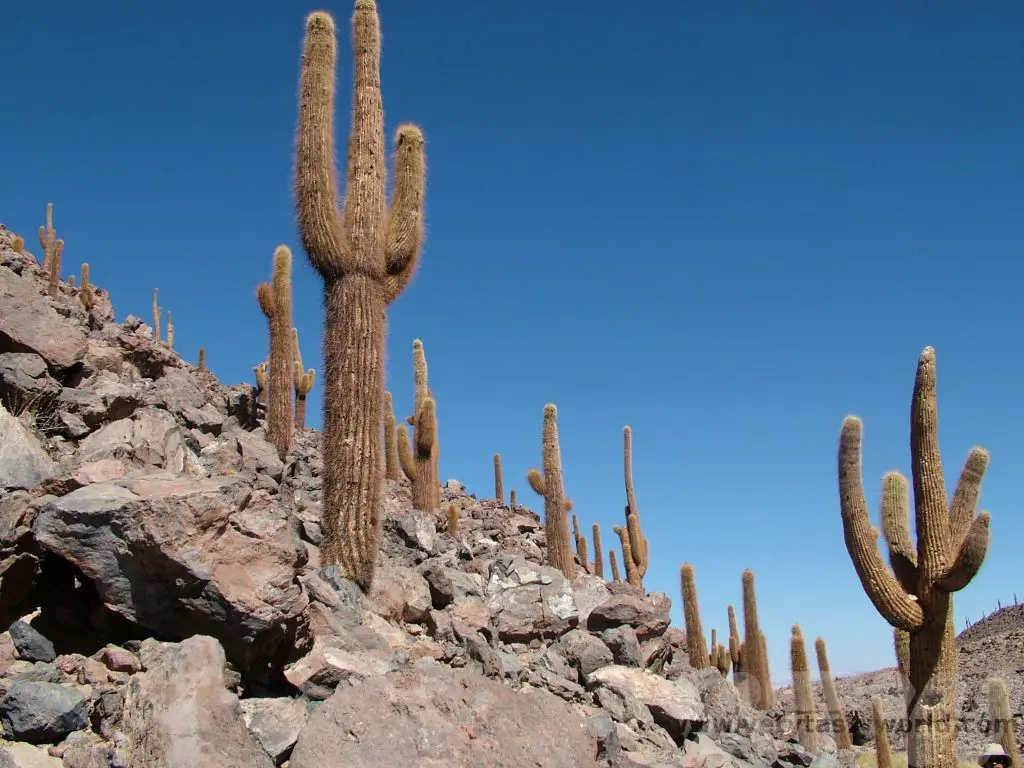
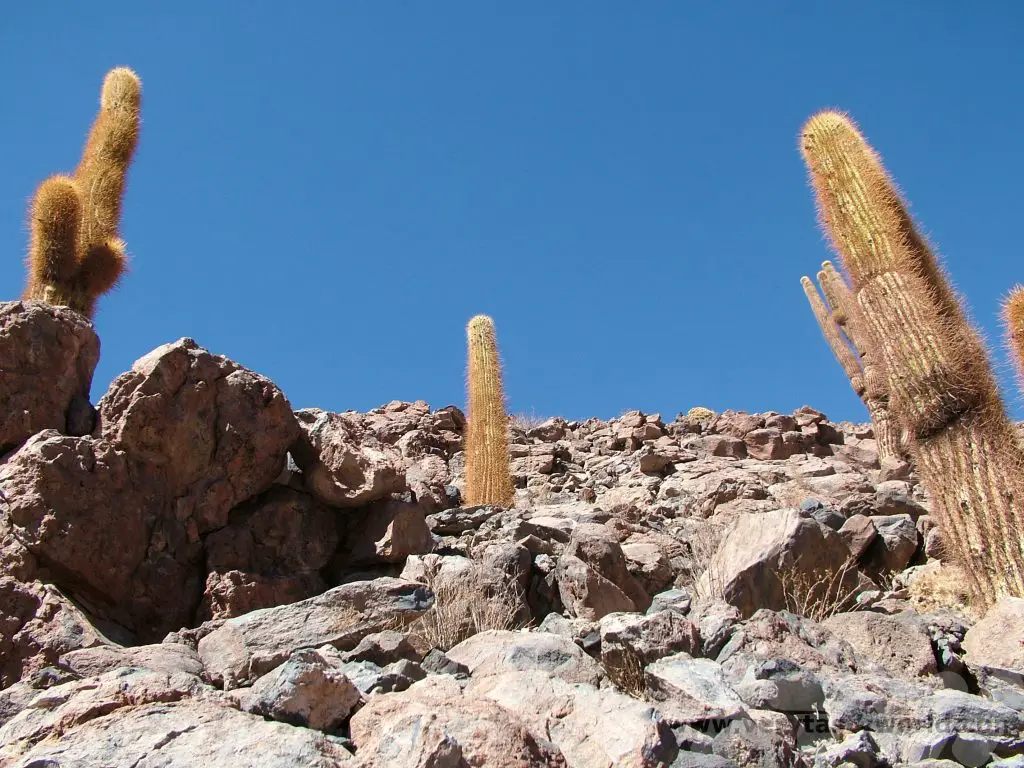

- Best Time To Visit Machu Picchu 2024 Update
- A 2 Week Patagonia Itinerary
- Day of the Dead in Campeche
- A Galapagos Land Based Itinerary
- RECIPE: How to Make Costa Rica’s Gallo Pinto
- A Tasty Puebla Food Tour
- Costa Rica Wildlife Sanctuary – Caño Negro
- Visit Torres del Paine National Park in Patagonia
- Atacama Desert Itinerary
Mercado Central de Santiago
Seafood and Eat It
The Mercado Central de Santiago in Chile’s capital is one of the most amazing places where you really can see seafood and eat it. It’s a wonderful building that houses both a fish market and several restaurants. As its name suggests, it’s centrally located in Santiago, just a short walk from Plaza de Armas, and easy to reach via the metro system; L2, L3 and L5 pass close by. Puente Cal y Canto (Comb L2, L3) is the closest station and Bellas Artes (L5) gets within striking distance. And anyway, Santiago is a very pleasant city to walk around.
As the country with a coastline of over 4000 km, Chile offers some of the best seafood on the planet.
The building itself is an impressive cast iron structure, fabricated in Glasgow, and has been operational since 1872. You can walk around the entire outside of the building – there are a variety of shops to explore.
Mercado Central Santiago- The Market
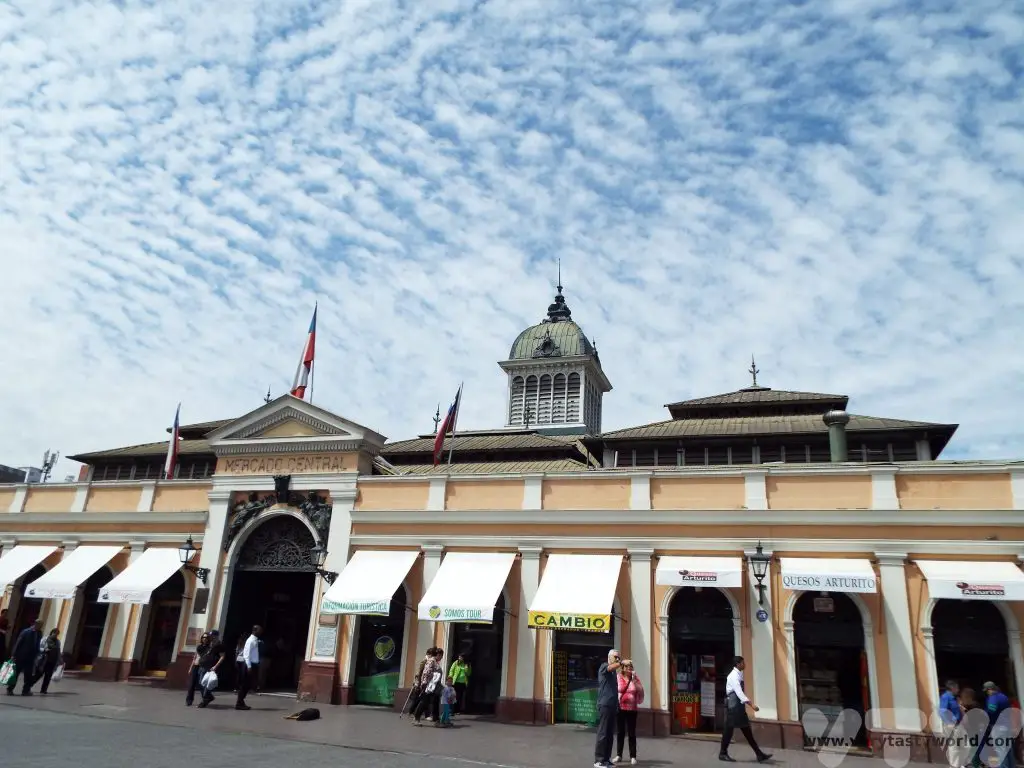
Inside the iron structure is both functional but highly decorative.
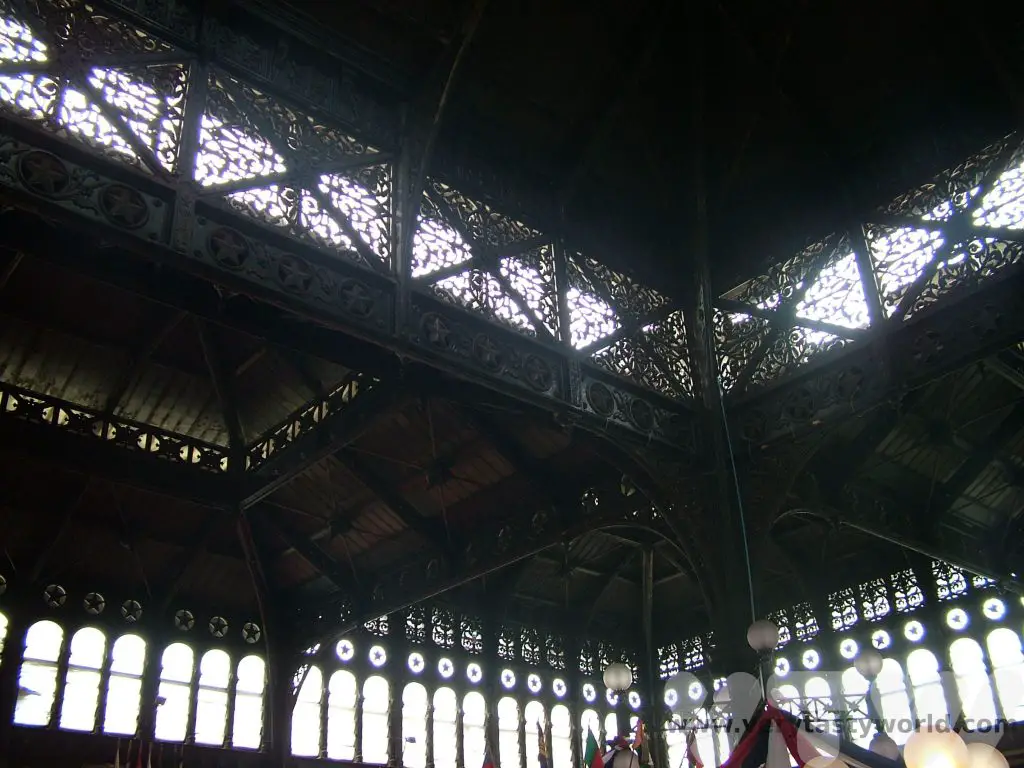
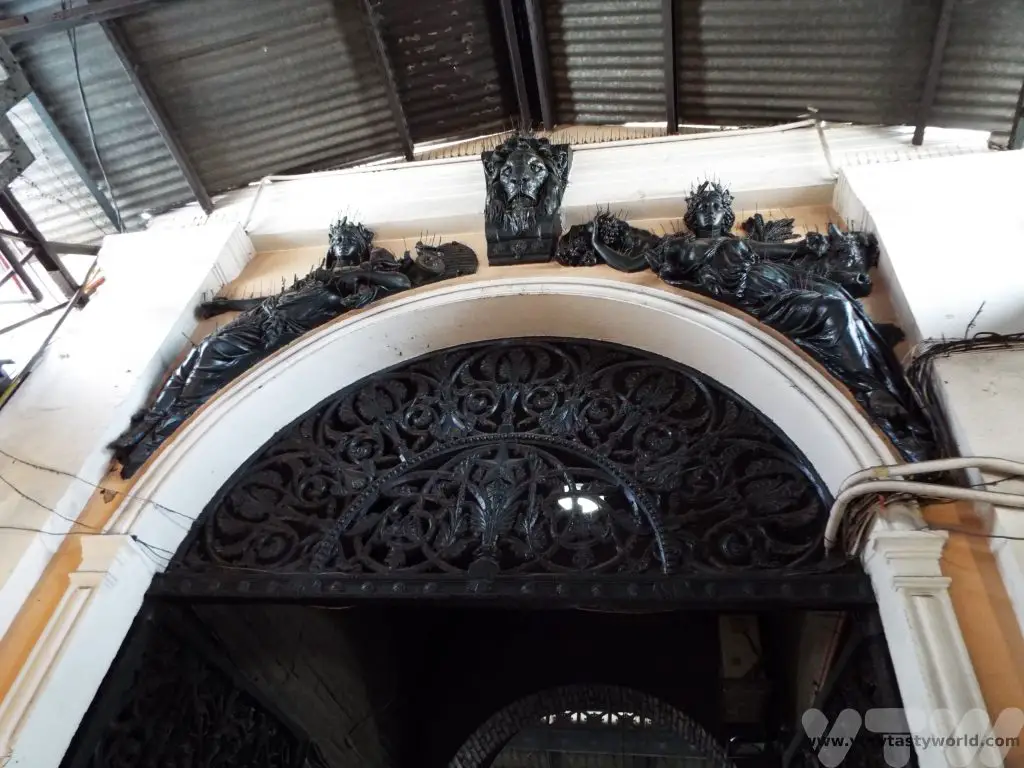
It is a working market and you can wander around the market stalls, perusing the plethora of pescatarian possibilities. As the market is known to be a tourist attraction, all the stall holders were happy to be getting on with their jobs and there were no issues with taking photos.
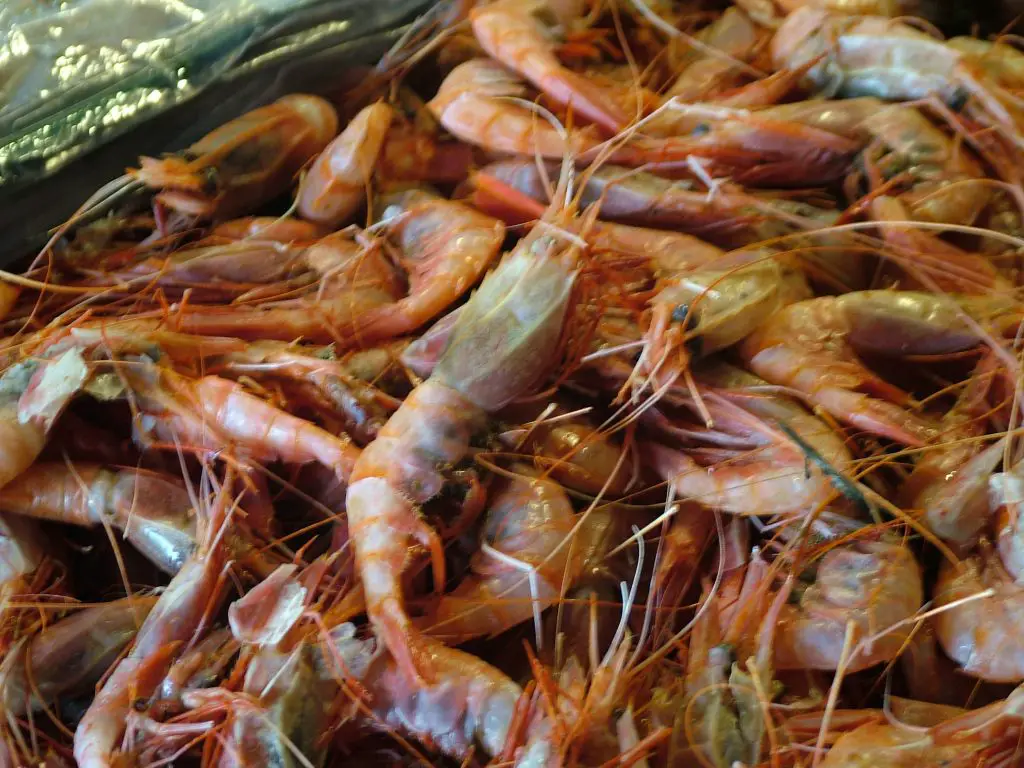
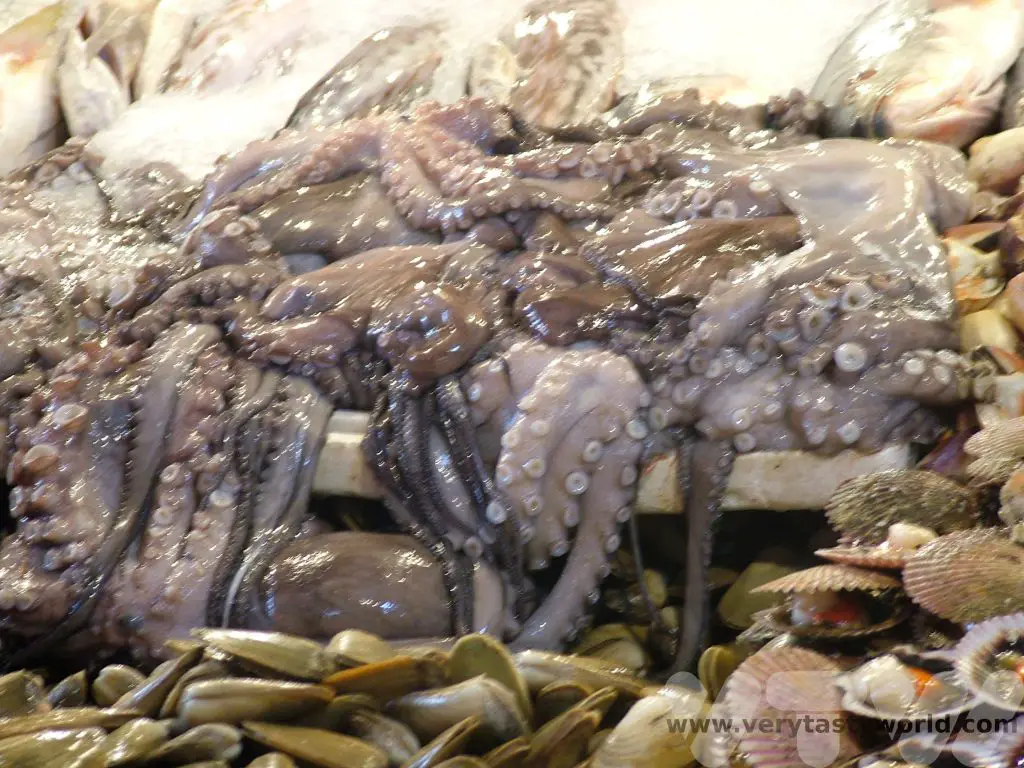
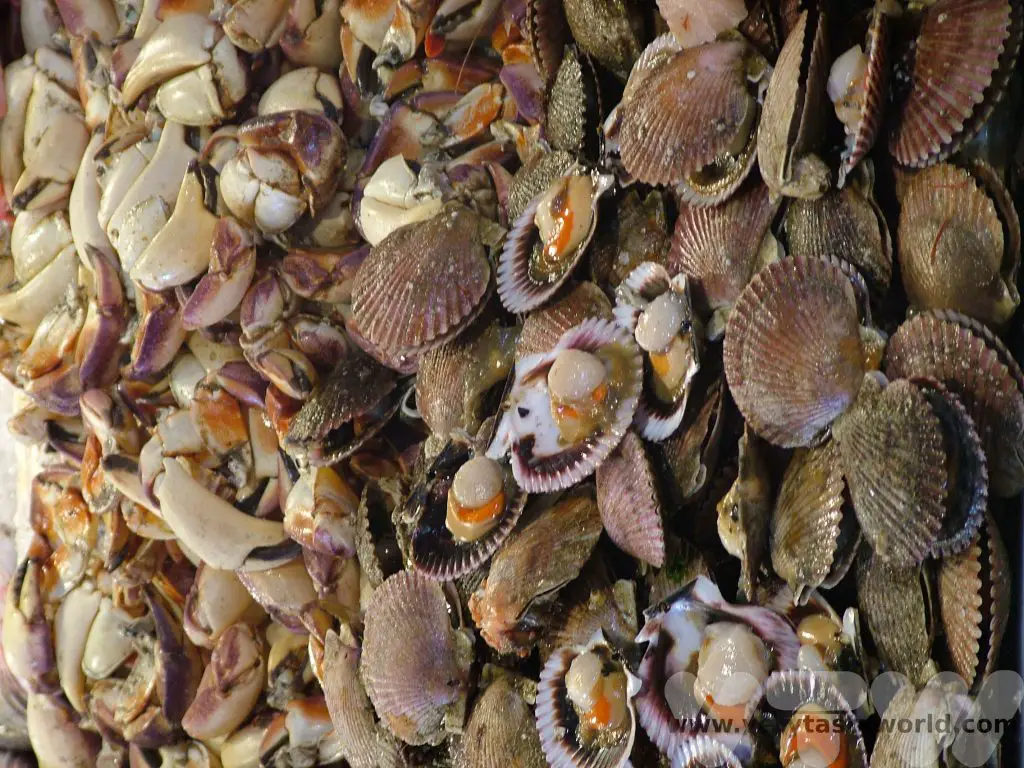
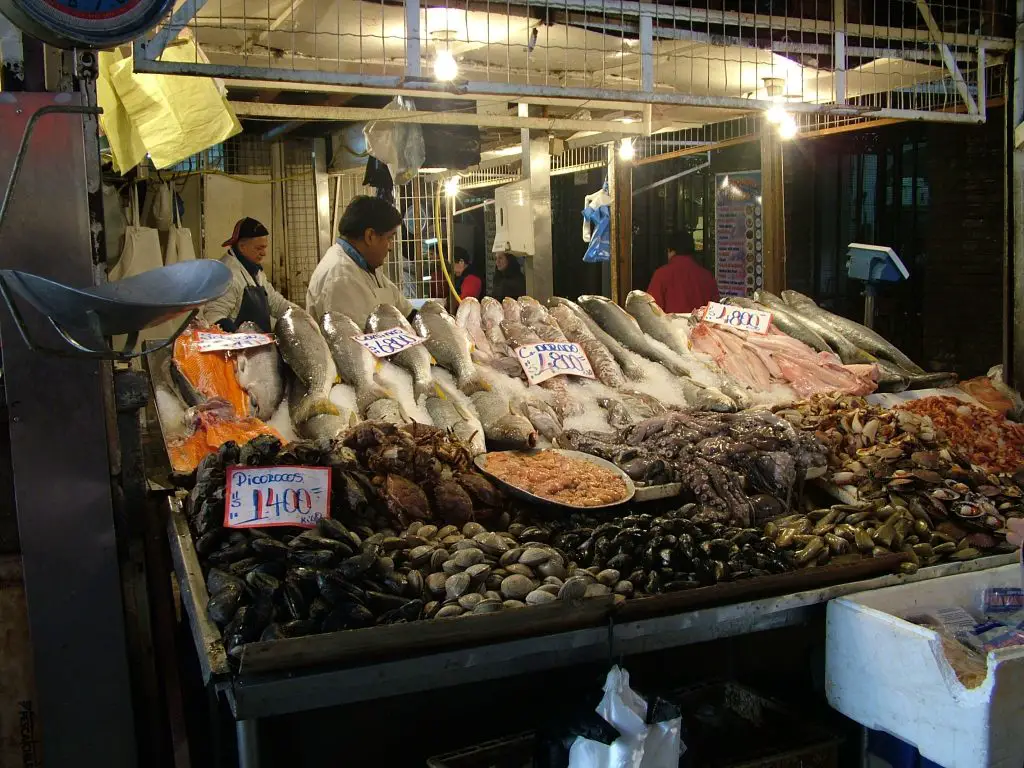
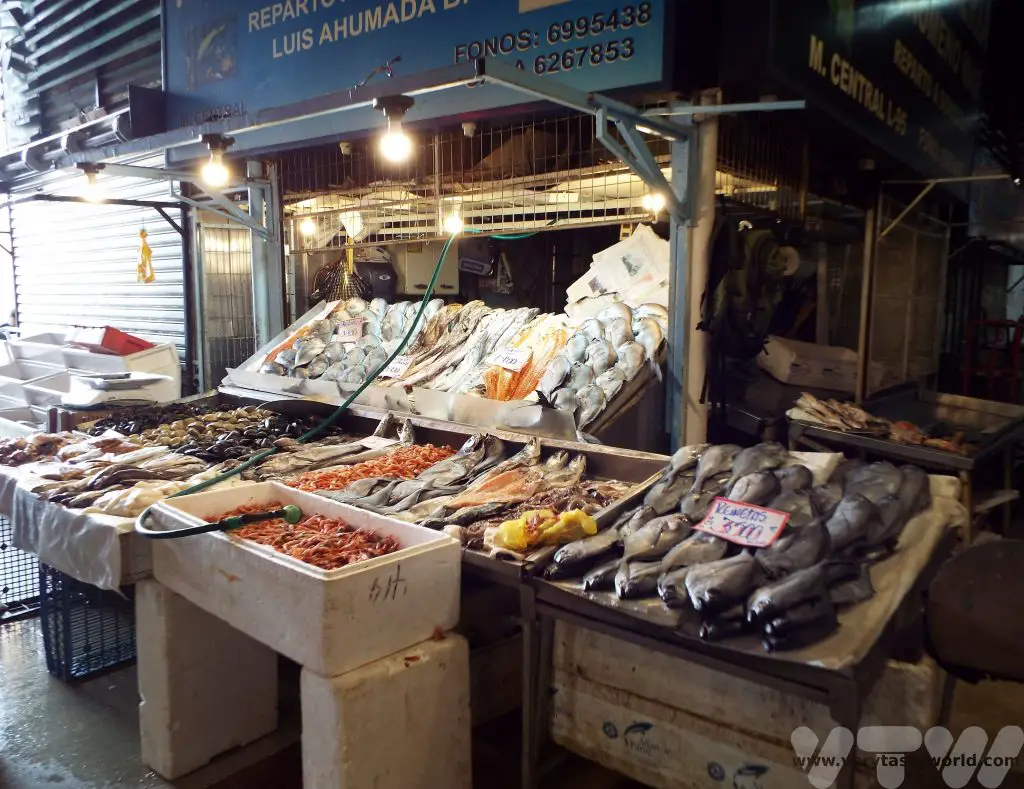
Eating At The Mercado Central de Santiago
There are all sorts of restaurants located inside the market in which you can indulge in a deliciously decadent seafood feast.
The biggest and most famous is Donde Agusto, right in the centre of the market, which was relatively expensive, crowded, had flamboyant waiters vying for business until they sat you down whereupon they ignored you in order to drum up more business and – when we visited – had irritating mariachi playing irritating guitars who expected us to pay for the pleasure of being irritated by them. Although it felt like a tourist trap the seafood was great – fruits de mer accompanied by scallops in a Roquefort sauce.
Much better is to wander around the perimeter of the market, seeking out the smaller restaurants. But you have to be a little careful.

You will find restaurateurs outside most establishments offering their cards and sometimes a variety of inducements. It’s quite relaxed though. No one hassles you too much and everyone understands the phrase, “maybe later.” These were just some of the cards we picked up as we wandered through the market and, in the interests of impartiality, we didn’t try any of these…
Some of the offers might include something like a free (minuscule) pisco sour or a dramatic flaming seafood feast offer. At El Rey De La Paila Marina, to be fair to the drama, the seafood feast which was comprised of such delights as crab, squid, prawns and scallops as well as a variety of fish, was undeniably delicious.
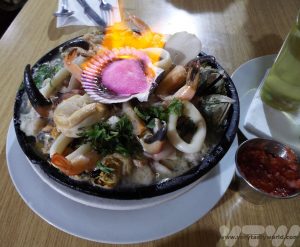
The Picoroco, Spanish for “a beak in the rock”, an apt title if ever there was one, were particularly good. These are giant barnacles which cling to the rocks on the shoreline. They do look a bit challenging, admittedly.
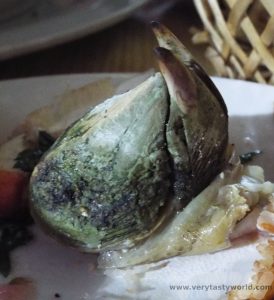
But, like many things that look a bit odd, once you get over the appearance, the taste was a revelation. They have a flavour that is very similar to crab but with a slightly chewier texture, and they were utterly delicious.
If you visit the Mercado Central de Santiago, the best advice is to seek out the smaller restaurants. Ostentation really is overrated. Our favourite restaurant was right on the edge of the market – the Donde Blanca. No English was spoken when we visited but our Spanish was just about good enough to get by. And when struggled with language the proprietor was delightful. We ordered cheviche, raw fish marinated in lime juice. The restaurant had a variety on offer, using different fish combinations, but sadly the ‘superior’ we wanted wasn’t available. The owner made a suggestion for an alternative but unfortunately we didn’t understand what a camarón was. So he trotted out to the market, picked a shrimp from one of the stalls, showed it to us, peeled it and ate it with a big grin on his face. Cheviche with shrimp, bread and salsa, all washed down with a bottle of crisp Chilean white wine turned out to be the perfect lunch.
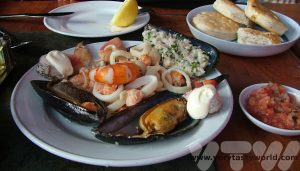
Of course, restaurants come and go and a good or bad experience somewhere isn’t necessarily an indicator of quality on a future visit.
Related Posts You May Enjoy

- Best Time To Visit Machu Picchu 2024 Update
- A 2 Week Patagonia Itinerary
- Day of the Dead in Campeche
- A Galapagos Land Based Itinerary
- RECIPE: How to Make Costa Rica’s Gallo Pinto
- A Tasty Puebla Food Tour
- Costa Rica Wildlife Sanctuary – Caño Negro
- Visit Torres del Paine National Park in Patagonia
- Atacama Desert Itinerary
